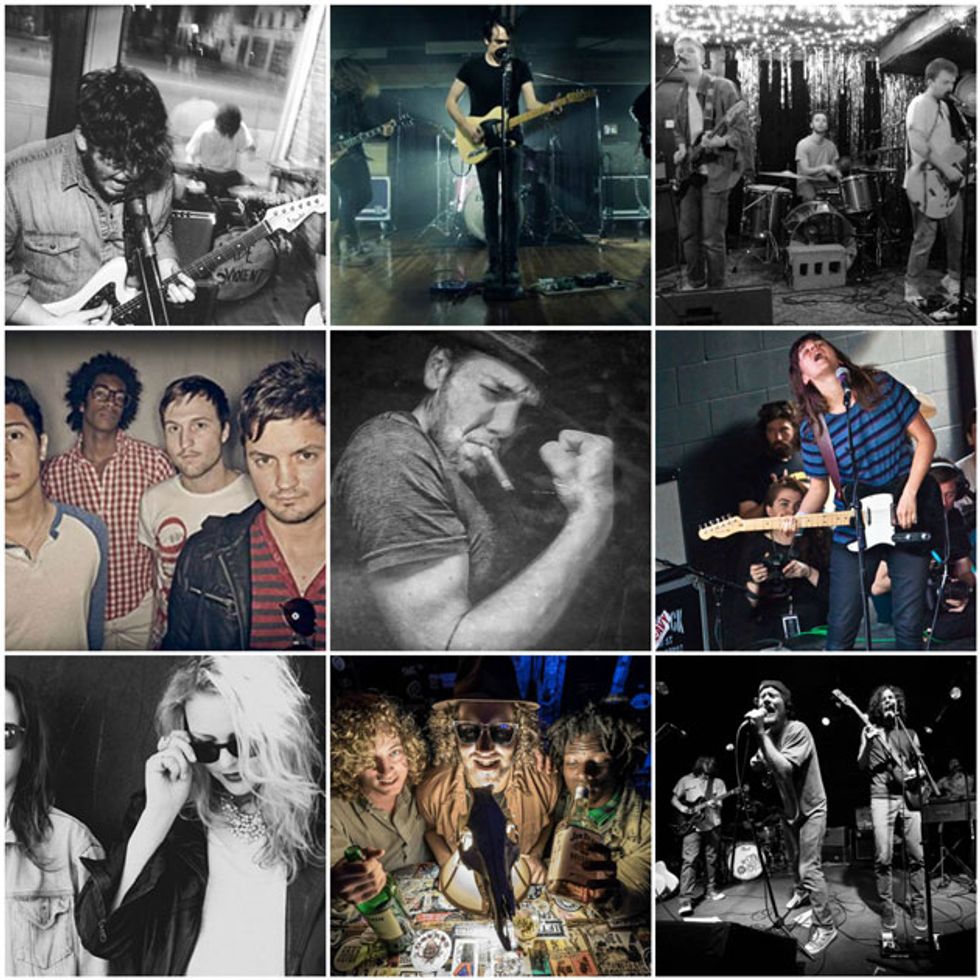
The sheer volume of SXSW's music festival can be daunting for anyone. This March the Texas capital hosted more than 2,200 bands in over 100 venues, spanning five days. In recent years they’ve added a tech conference, music-poster showcase, comedy summits, and a film festival. From the PG prerogative, our 2015 coverage thus far has included a performance gallery, gear expo report, and a call-out for SXSW bands to watch this year. And those items are only spotlighting a sliver of what happens in Austin every year.
The Live Music Capital of the World has been taking hits recently about the gentrification of the downtown district that has hosted many of SXSW’s shows and events since its inception. Plus, the NASCAR-looking marketing and in-your-face corporate sponsors are a glaring opposition of the festival’s DIY roots. But the bands and artists still treat the booming event all the same—it’s about performing.
SXSW is unlike any other music-based festival in the world. Thousands of bands flood 6th Street and the surrounding grounds as many of them perform not just several times during the week, but numerous times a day. You’ll often spot bands sprinting down the sidewalk with gigbags and pedalboard cases in hand frantically trying to get to their next show. It’s safe to say that nearly every SXSW performer has a few things in common, like hunger—nutritionally and artistically—dedication and appreciation to play music for unsuspecting future fans, and for the interest of this piece, their love of gear.
We talked to 20+ bands from all different genres about their setups including the stoner-metal Elder, indie-darling Courtney Barnett, sun-soaked shoe-gazers Best Coast, hometown pysch-rockers The Bright Light Social Hour, and even the good-time-having masked luchadores of El Conjunto Nueva Ola. Click through to see and learn about the rigs—and the players’ rationales—behind some of the bands that were showcased in Austin during SXSW 2015.
1. Elder’s Nick DiSalvo
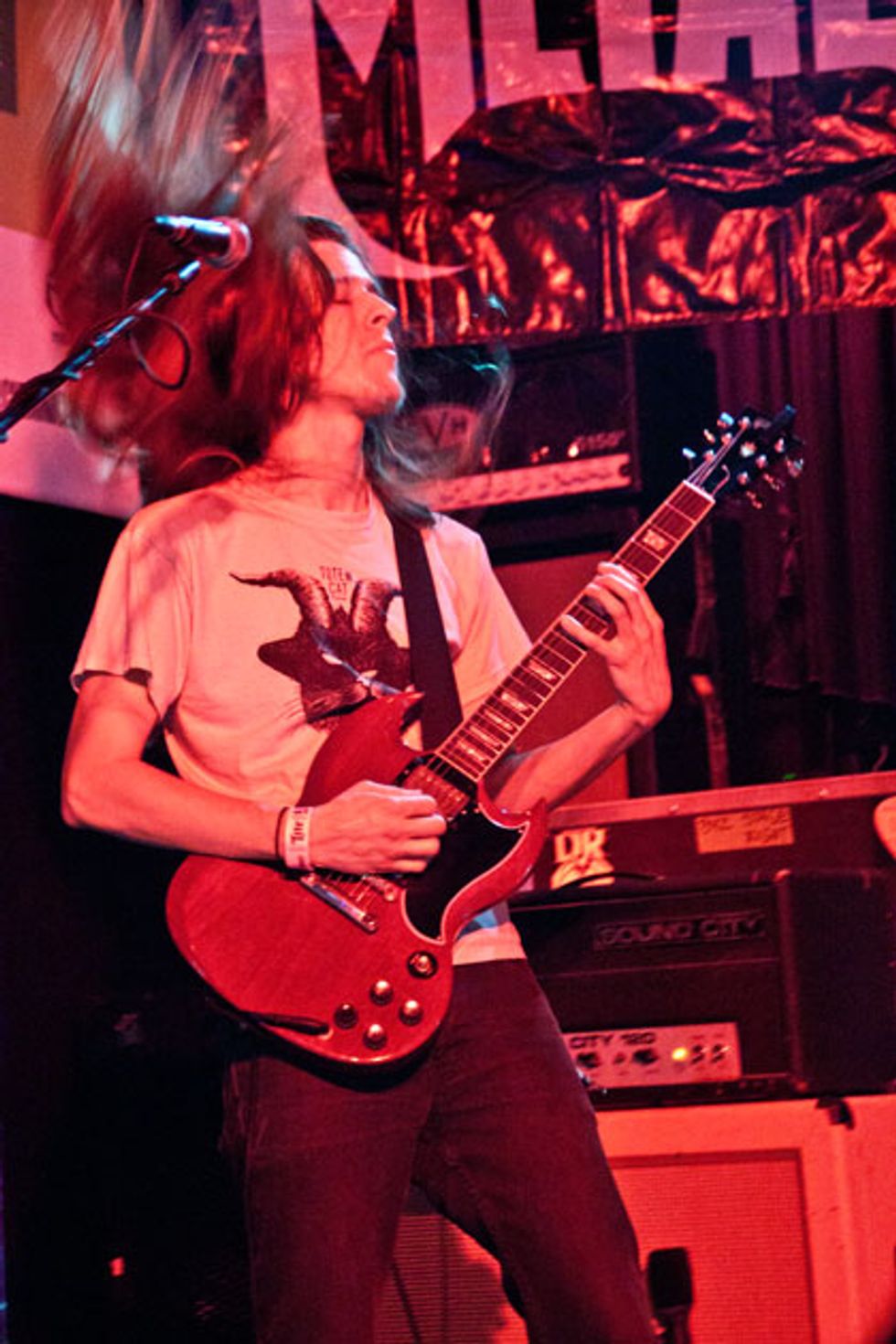
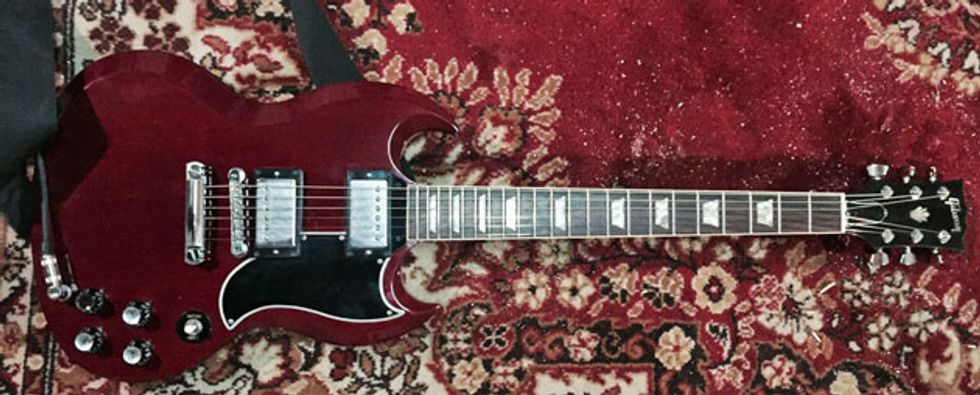
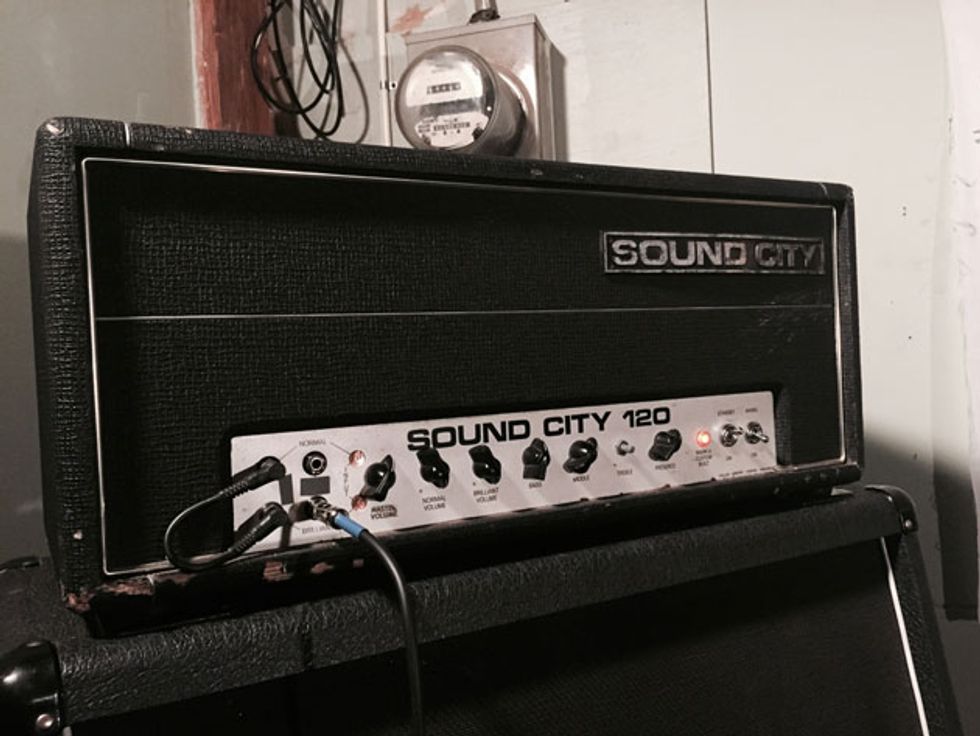
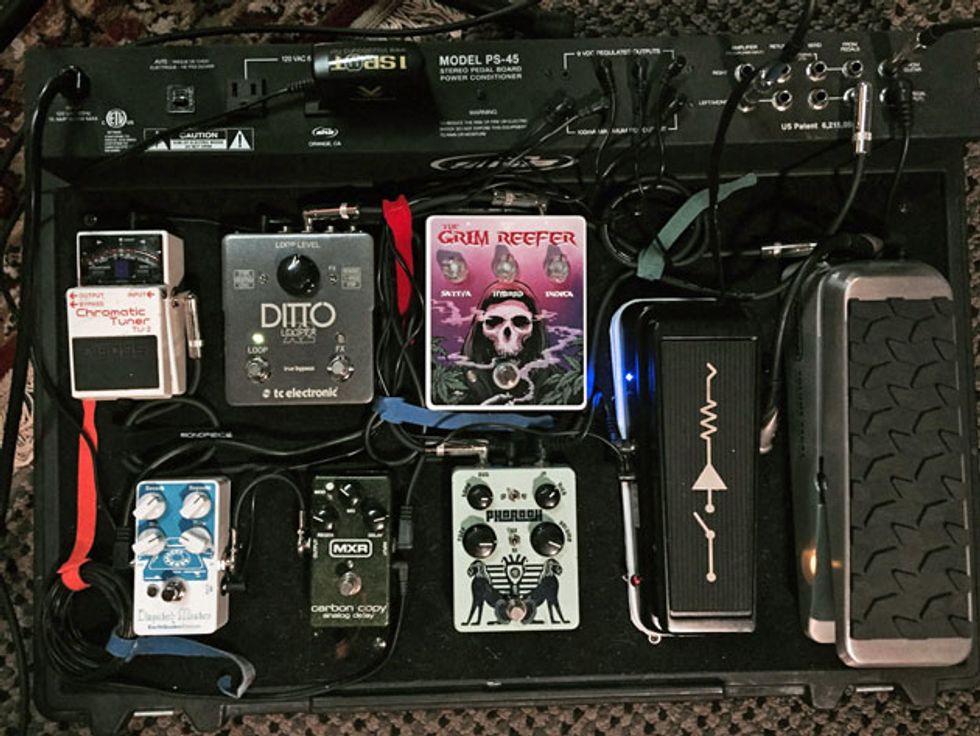
”I finally caved after almost a decade of refusing to get a pedalboard. The allure of being able to have all of my usual pedals at the ready without setting up and breaking down finally won me over. My setup now has become more diverse than in previous years—I try to let my amp and guitar do most of the talking without anything too over-the-top effect wise. I have a few fuzzes (one for rhythm, one for leads) that are my main tools. I love to use the Pharaoh fuzz for heavy, chunky riffing and my (beloved and very limited) Grim Reefer for squealing bends and weird phase-shifty grime. The Dispatch Master is a great pedal for helping recreate some of the lusher soundscapes fromLore, while my Carbon Copy is my go-to for simple slapback delay sounds. My most recent addition would be the TC Electronic Ditto Looper—I don’t use it much, probably only twice per set, but it really opens up possibilities to play studio songs more accurately live.”
2. The London Souls’ Tash Neal
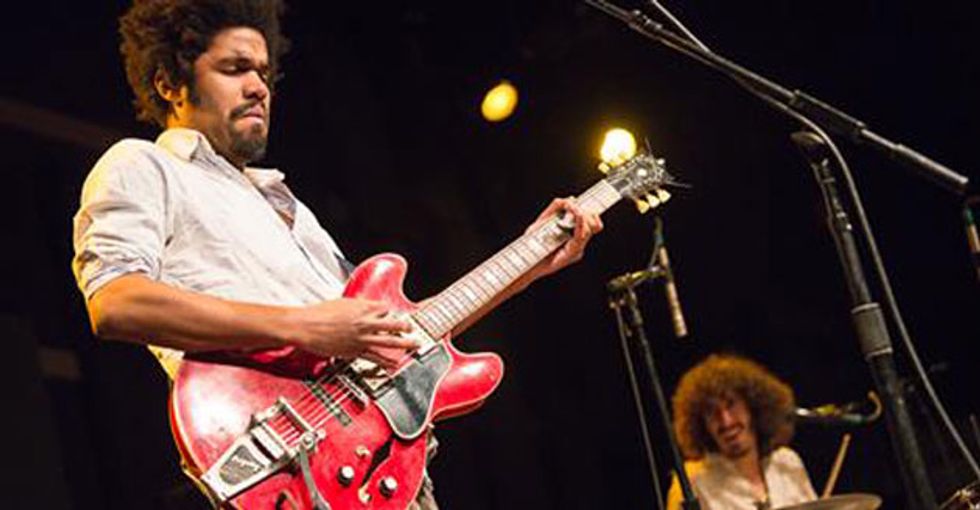
“I don’t use much in terms of equipment and right now my go-to guitar is a Gibson ES-335. I’ve always loved Gibson semi-hollows and I figured I’d take it with me for SXSW and our other Texas dates. Other guitars I use regularly are a Fender Telecaster and a Gibson Les Paul.
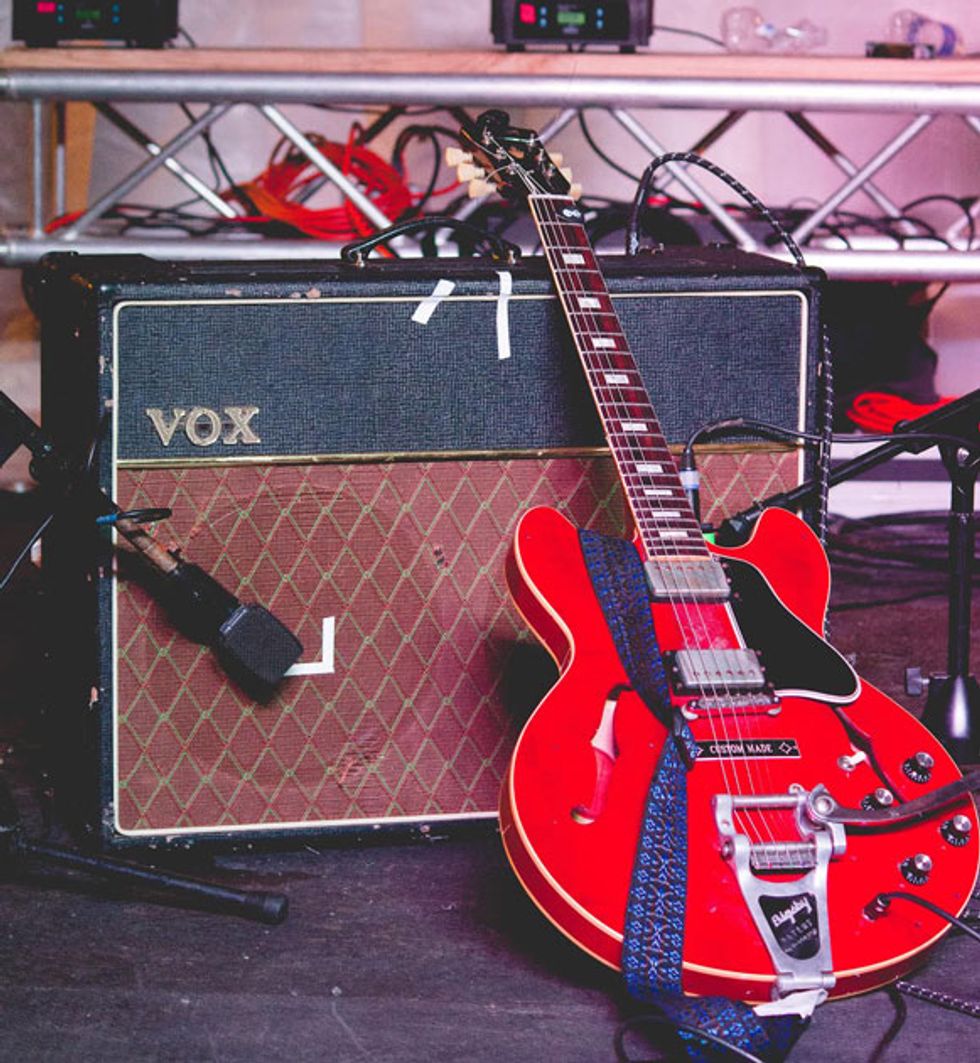
Right now I have a Vox AC30 because it’s a reliable amp that you can pick up at any guitar store. It’s off-the-shelf and it sounds great. I’m not like most guys you probably cover in that I don’t shop a lot—only when I need to. I don’t have a pedalboard and the only time I use a pedal other than a Boss TU-2 tuner is a clean boost to make the AC30 break up just a tad earlier. I just use an input boost to boost my signal and not cut it: I like for the sound to be from my playing, and the amp.”
3. The Stone Foxes
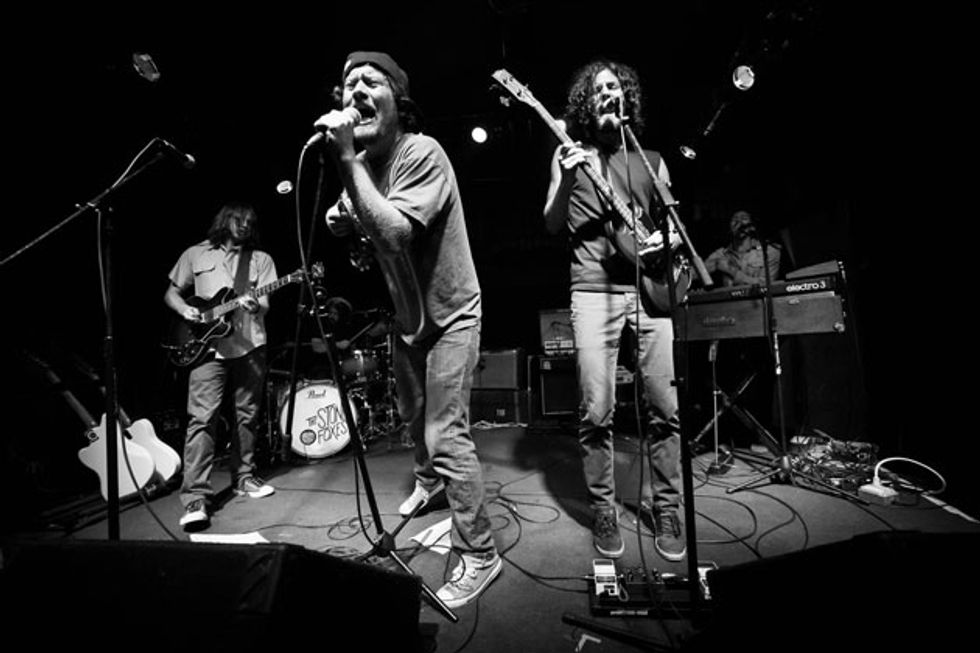
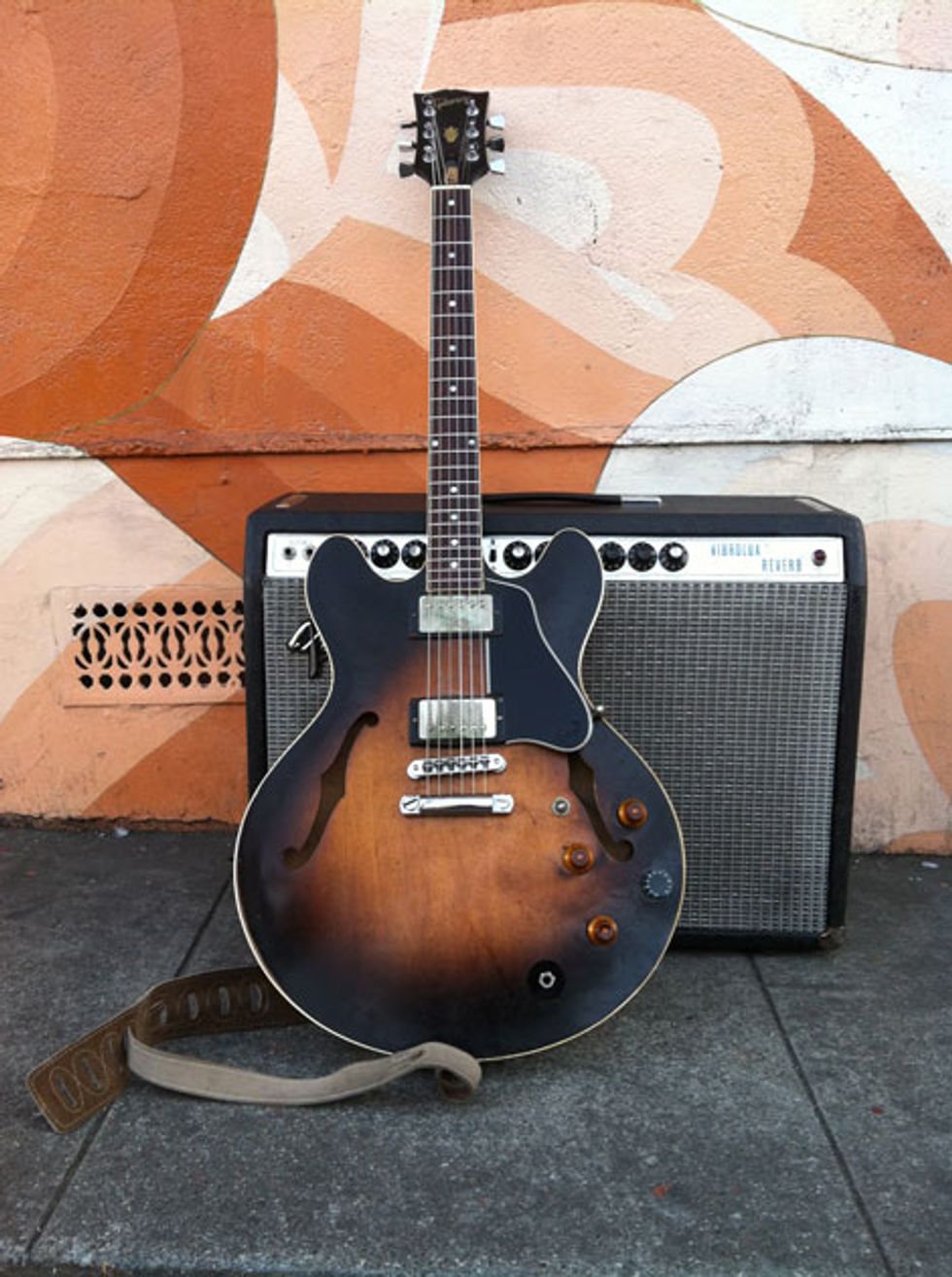
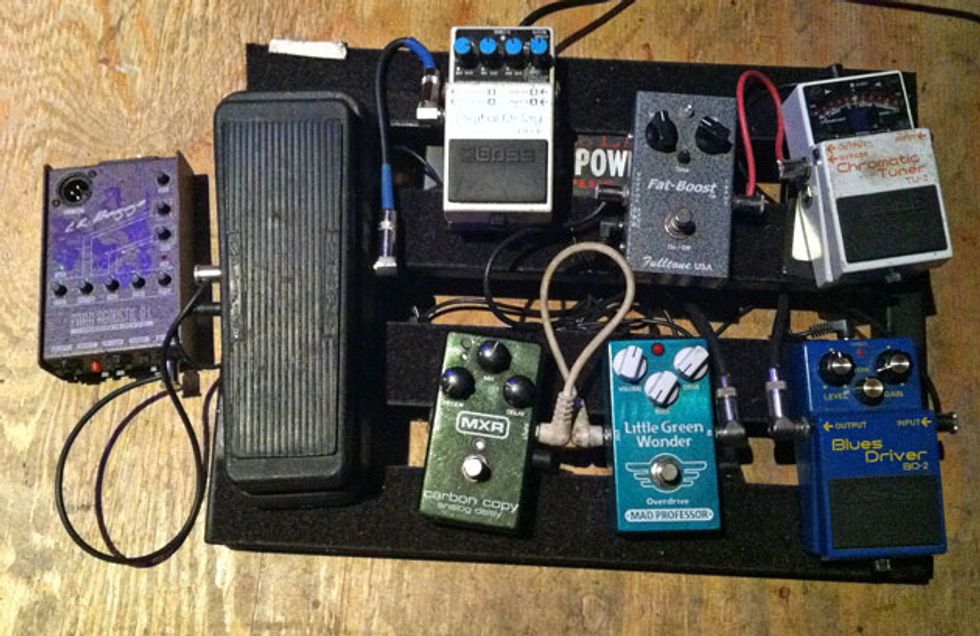
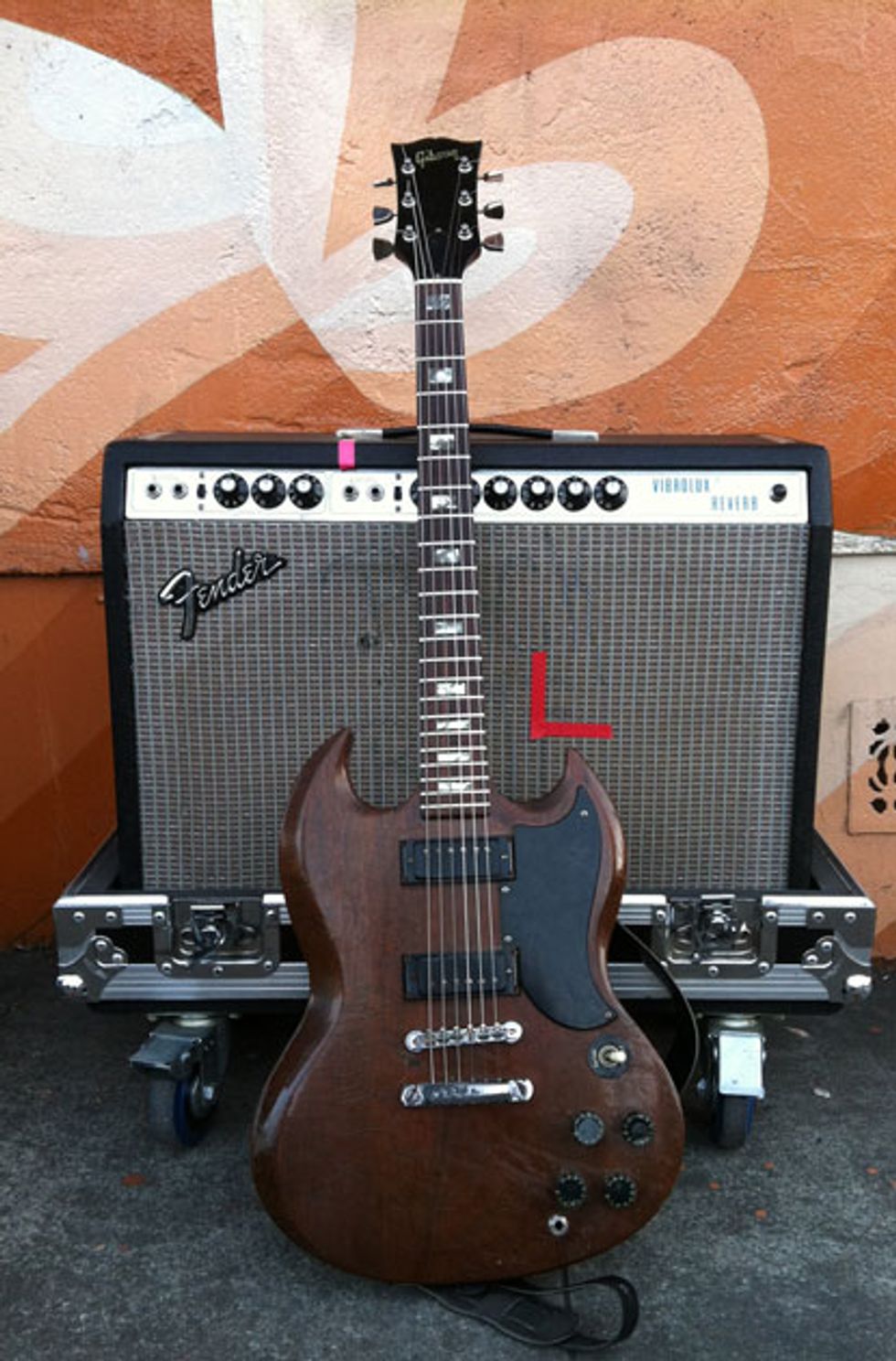
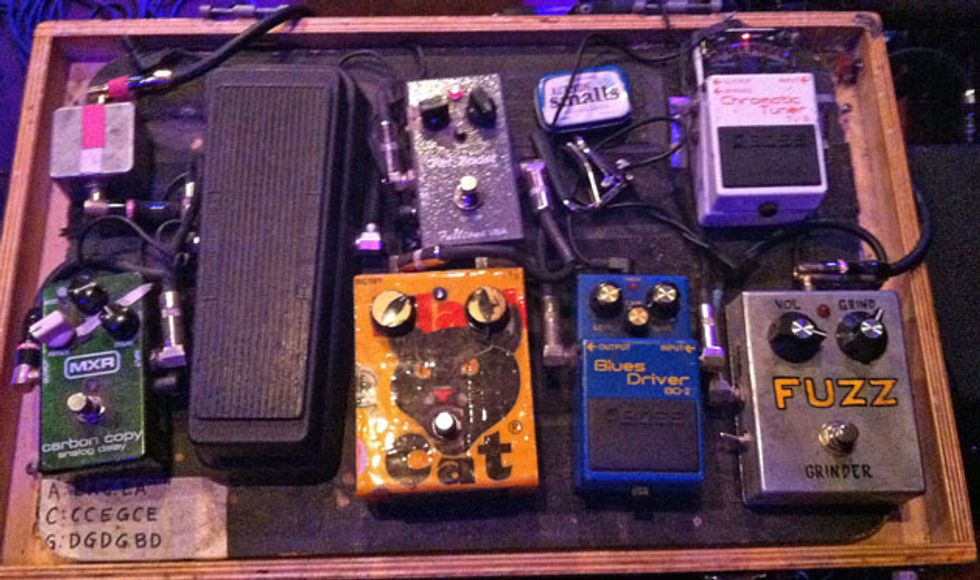
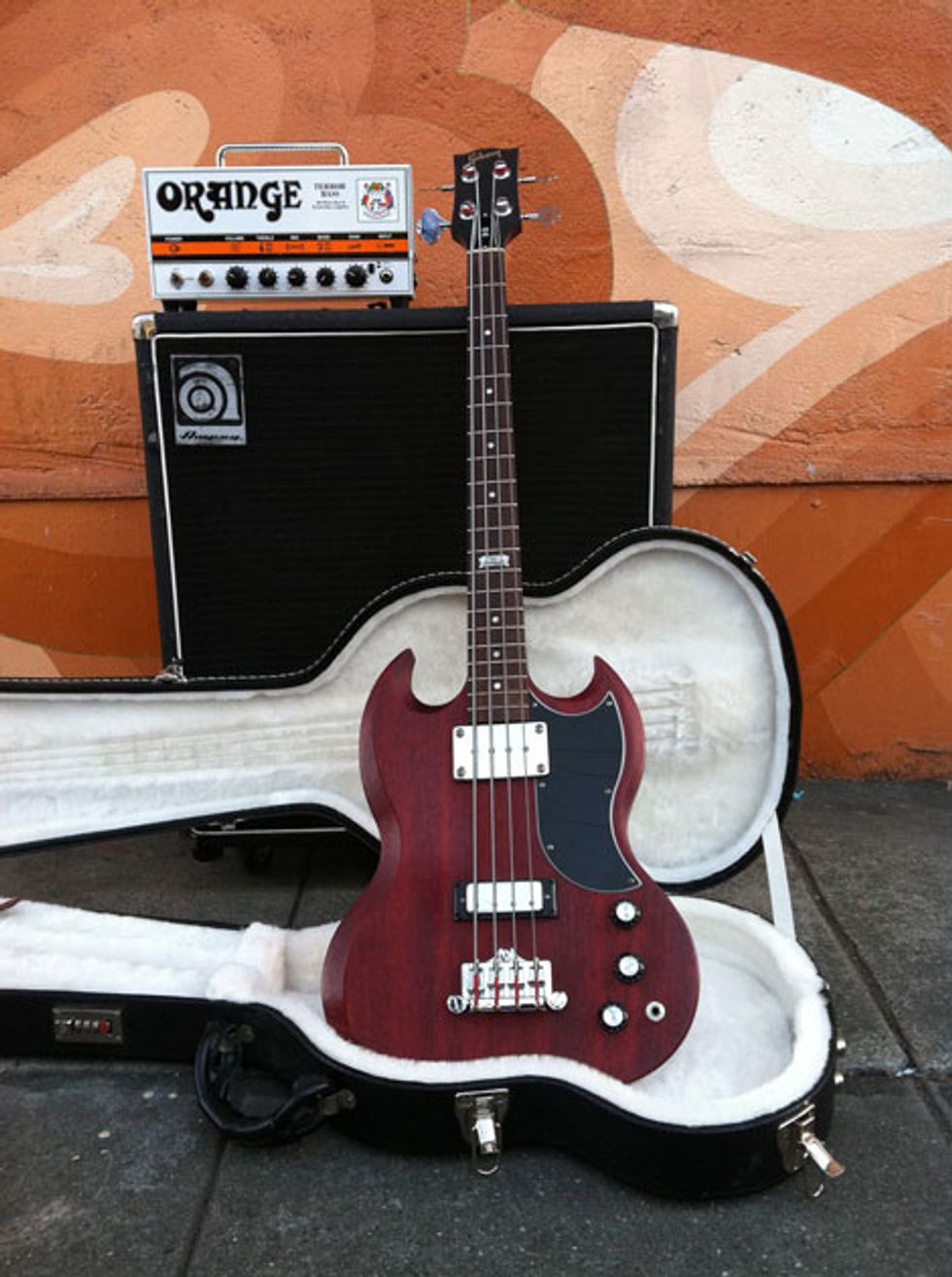

4. Made Violent
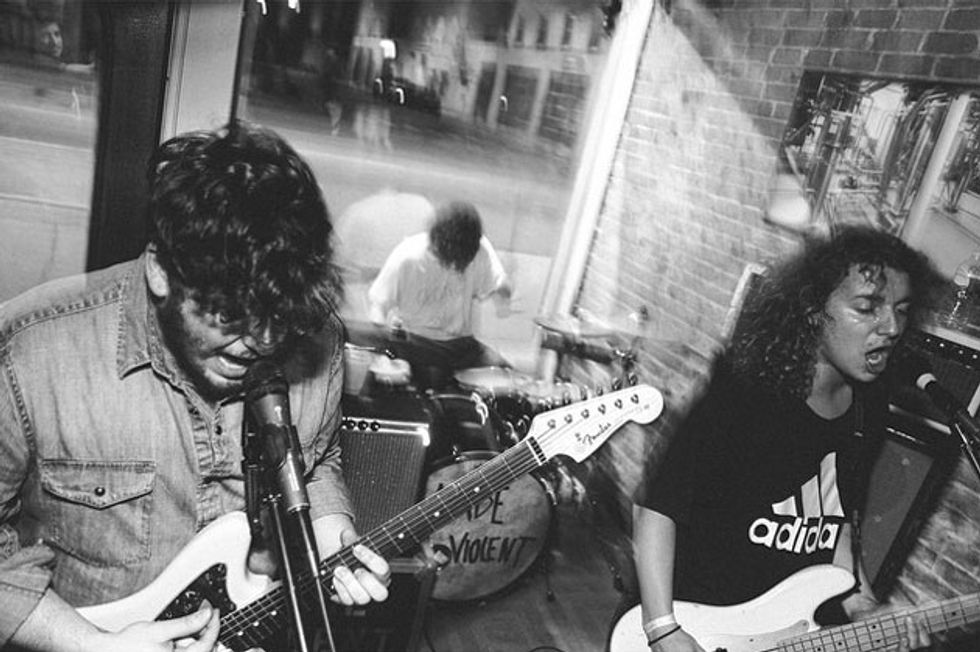
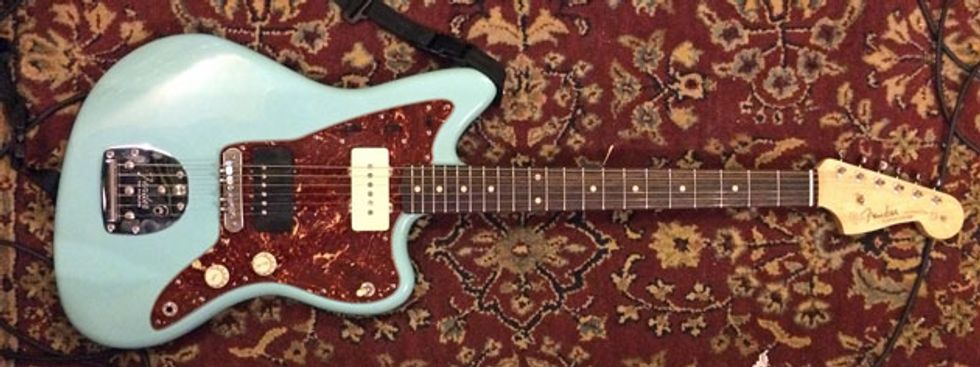
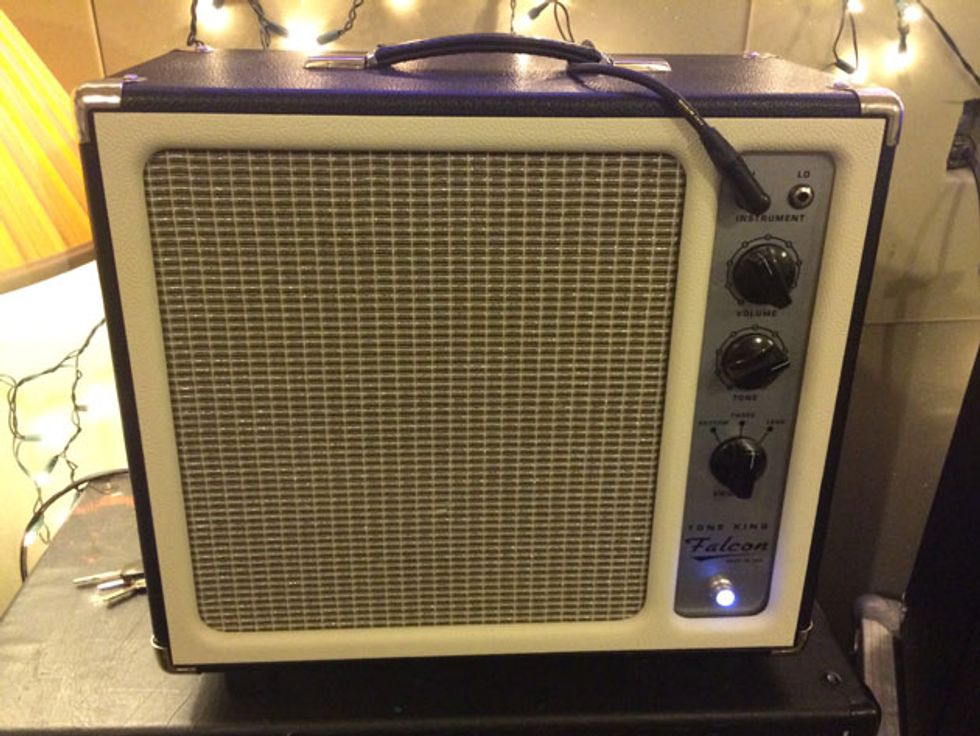
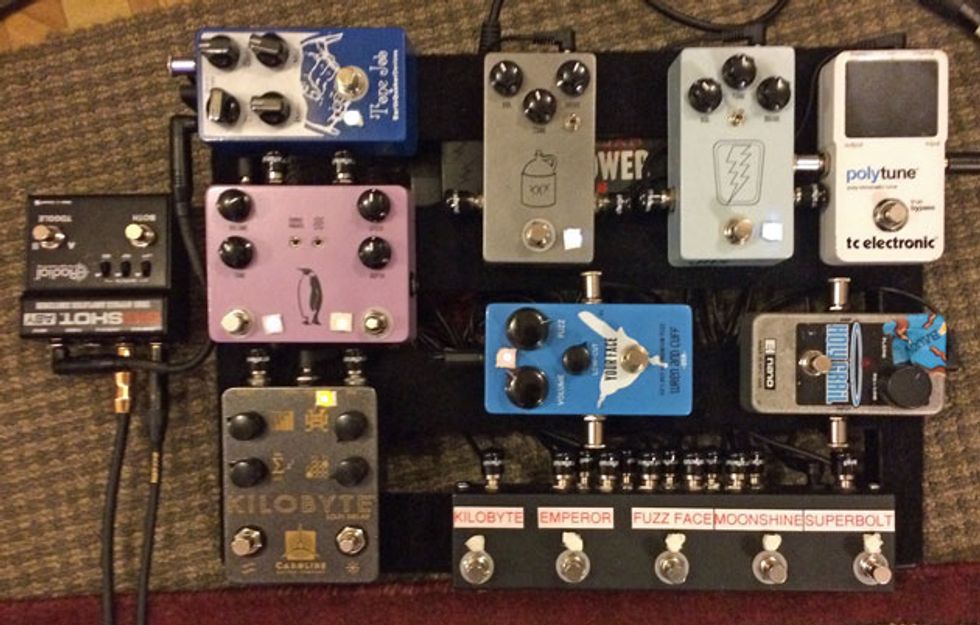
Pedals are a huge part of my rig. Being the only guitar player in Made Violent, I need to have a lot of different sounds to keep the live show interesting. I’ve been using JHS Pedals for overdrive both in the studio and onstage since the band started. The SuperBolt has been the sound of the band since the beginning. I’ve also been messing around with the Your Face by Wren and Cuff—it’s an old-school fuzz with a lot of versatility. I’ve always had the classic Electro-Harmonix Holy Grail Nano for spring reverb because I like the idiot-proof single knob. One of my favorite effects is the Caroline Guitar Company Kilobyte delay. It’s set to a quick slapback for a double-track effect and has an infinite repeat soft switch. I’m always looking for something to help the creative process, especially for writing. The right effect can sometimes bring an idea out of thin air. Other pedals I have for additional flavoring would be the EarthQuaker Devices Tone Job and the JHS Emperor.”
Joe White’s Gear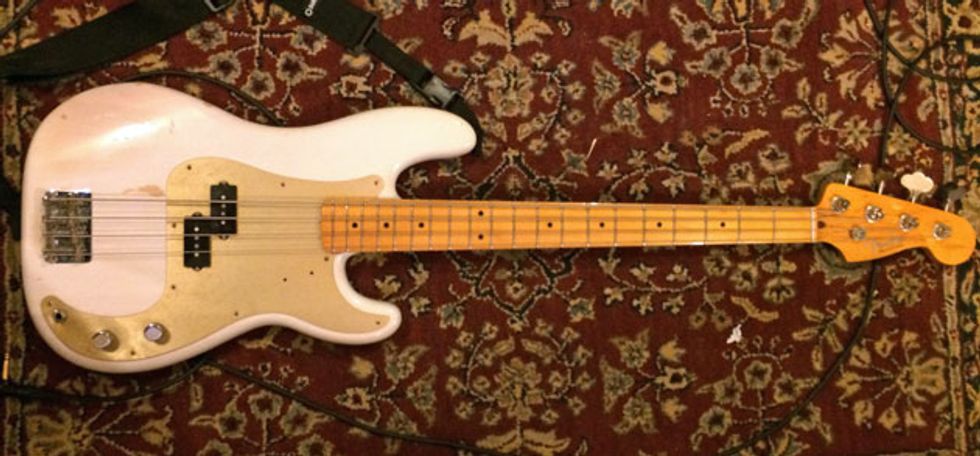
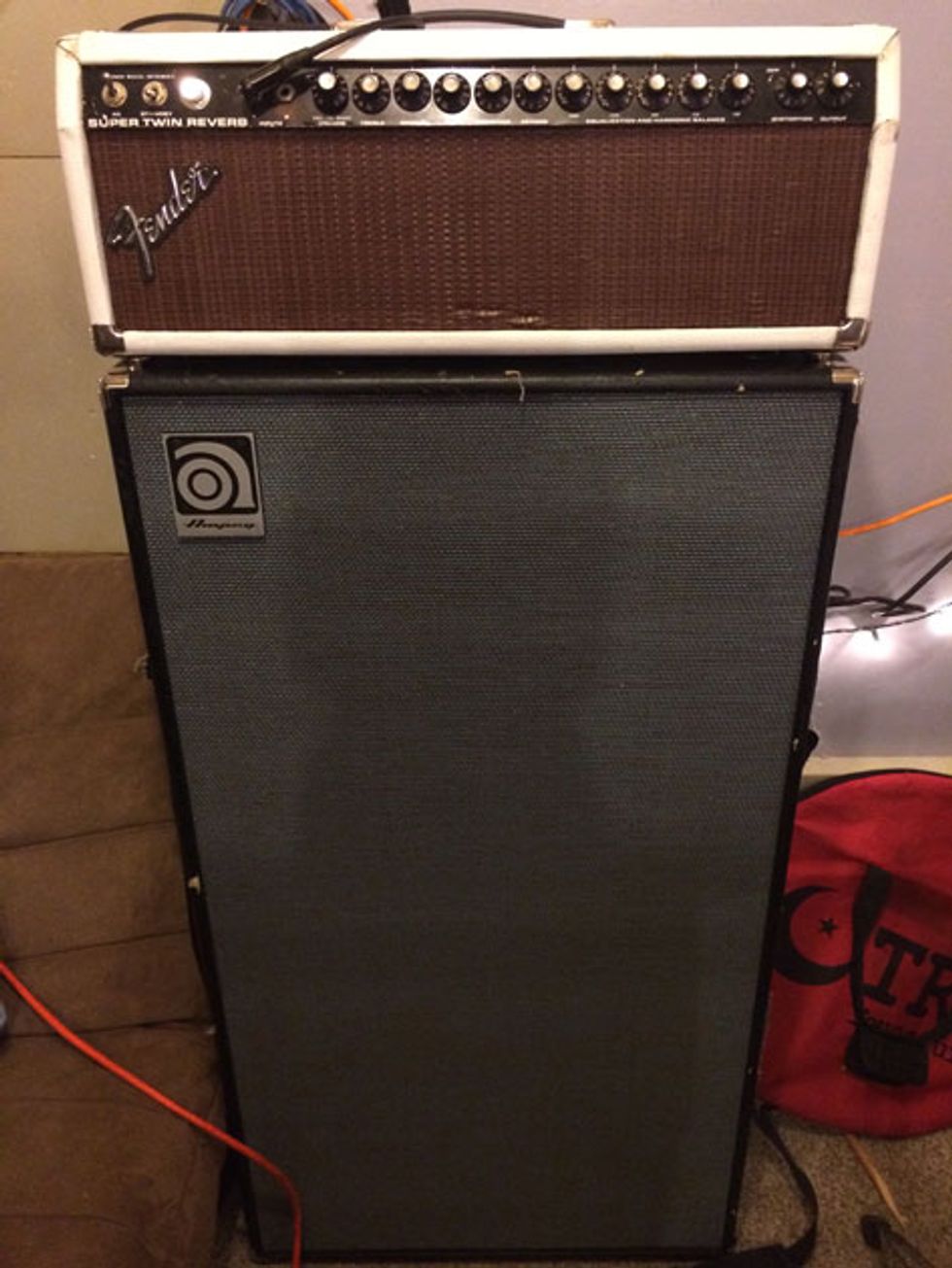
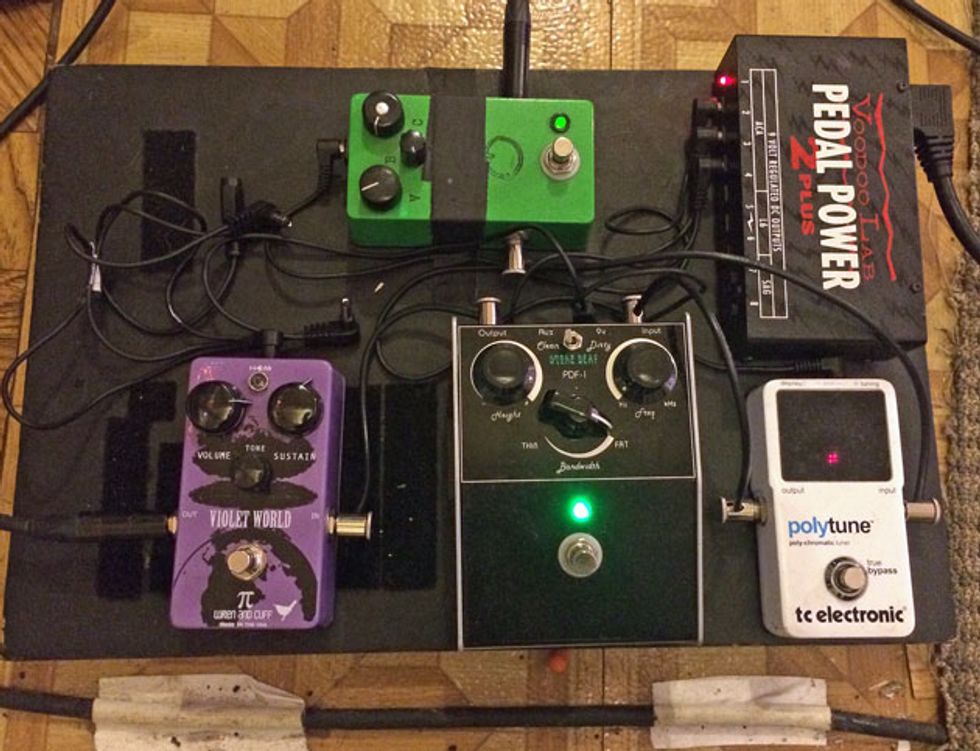
5. Lazyeyes
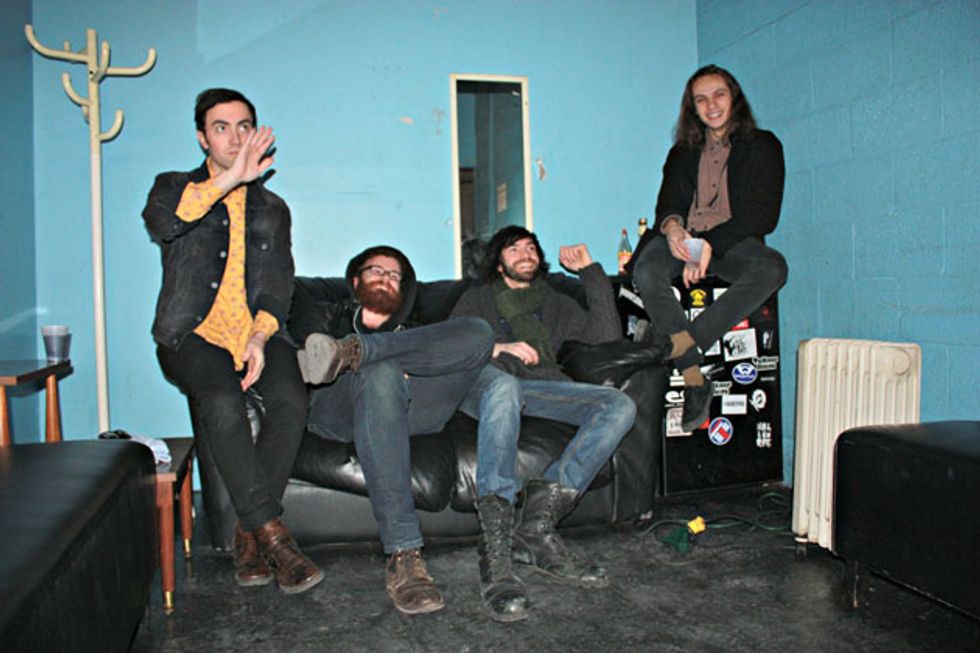
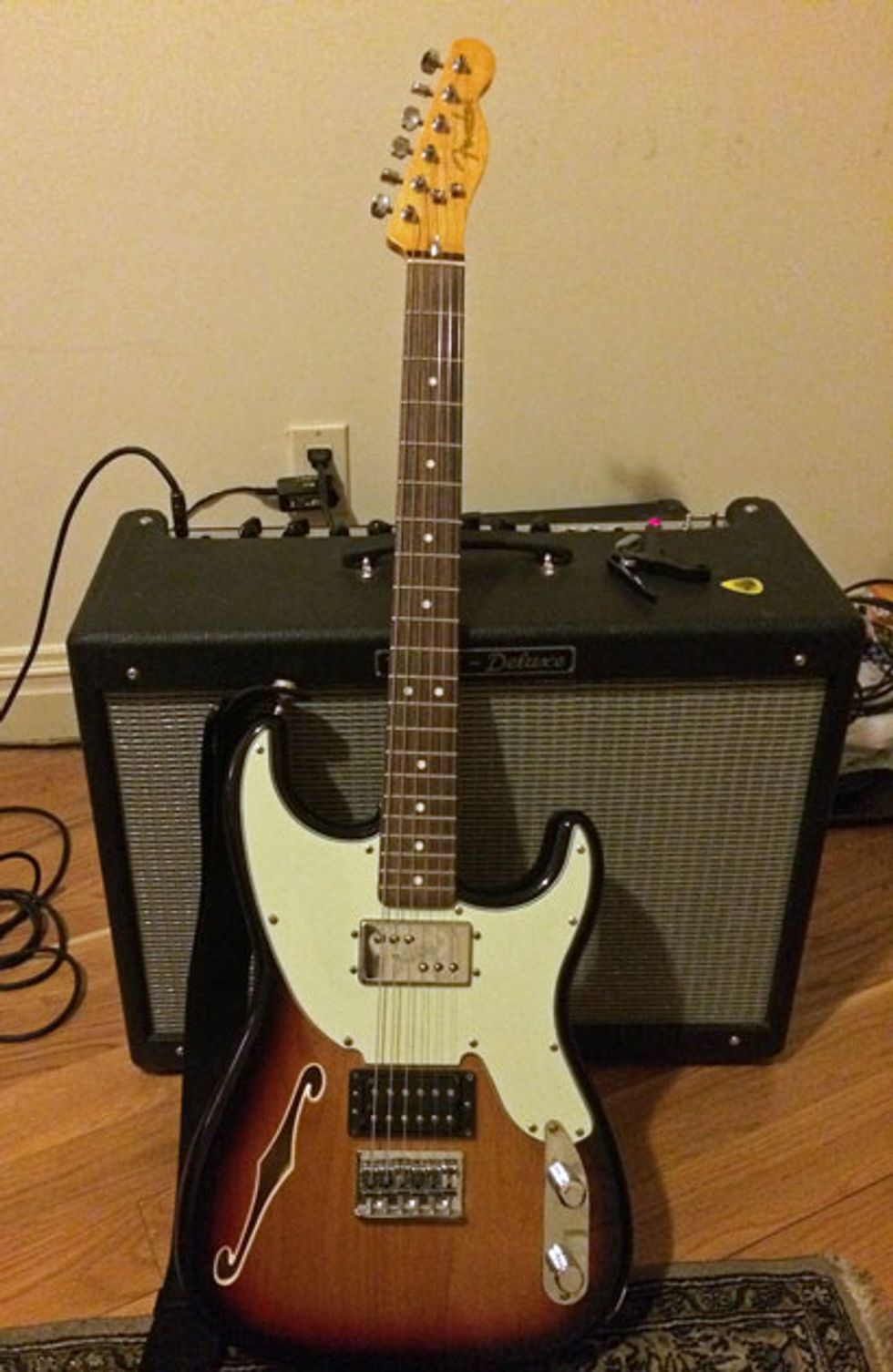
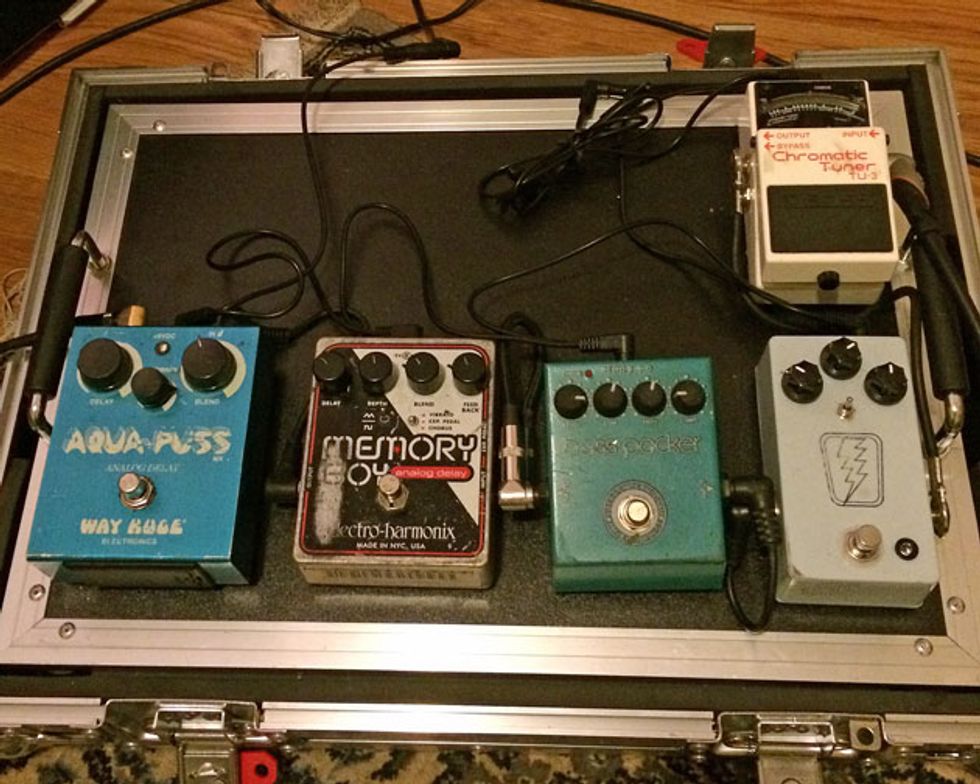
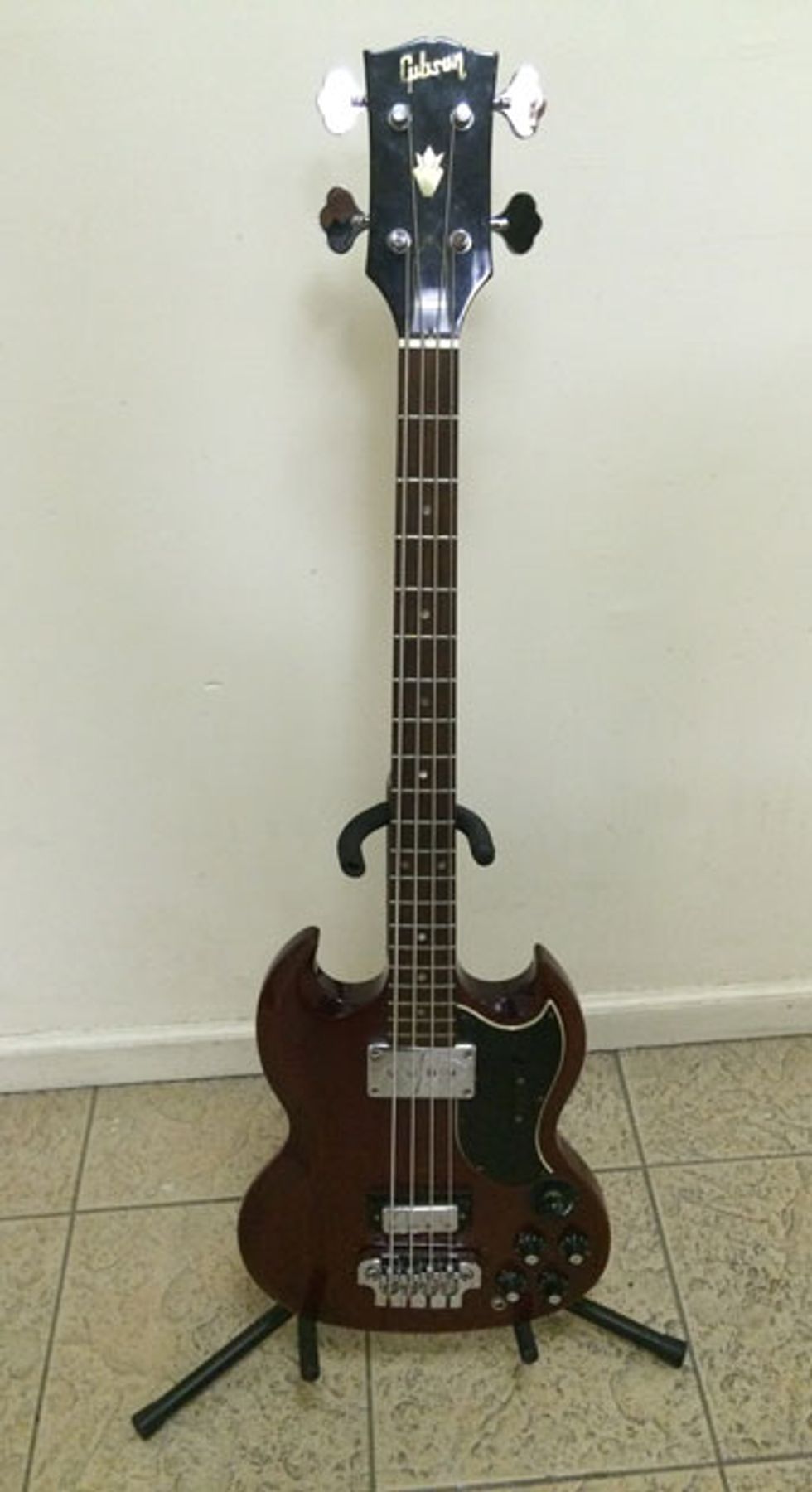
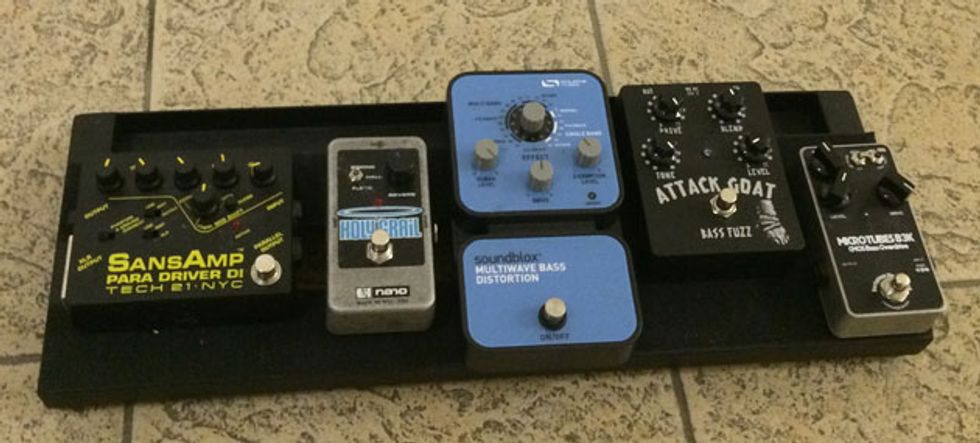
6. Badflower
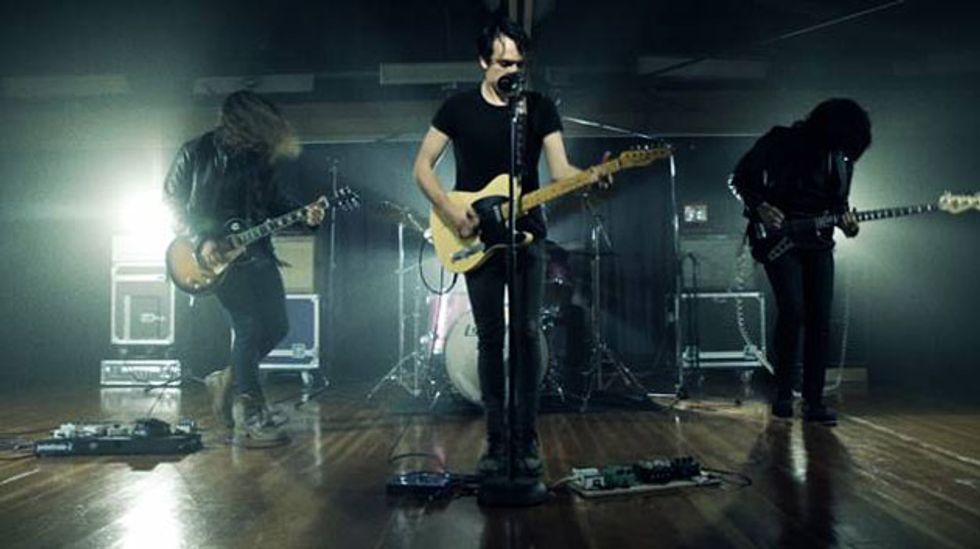
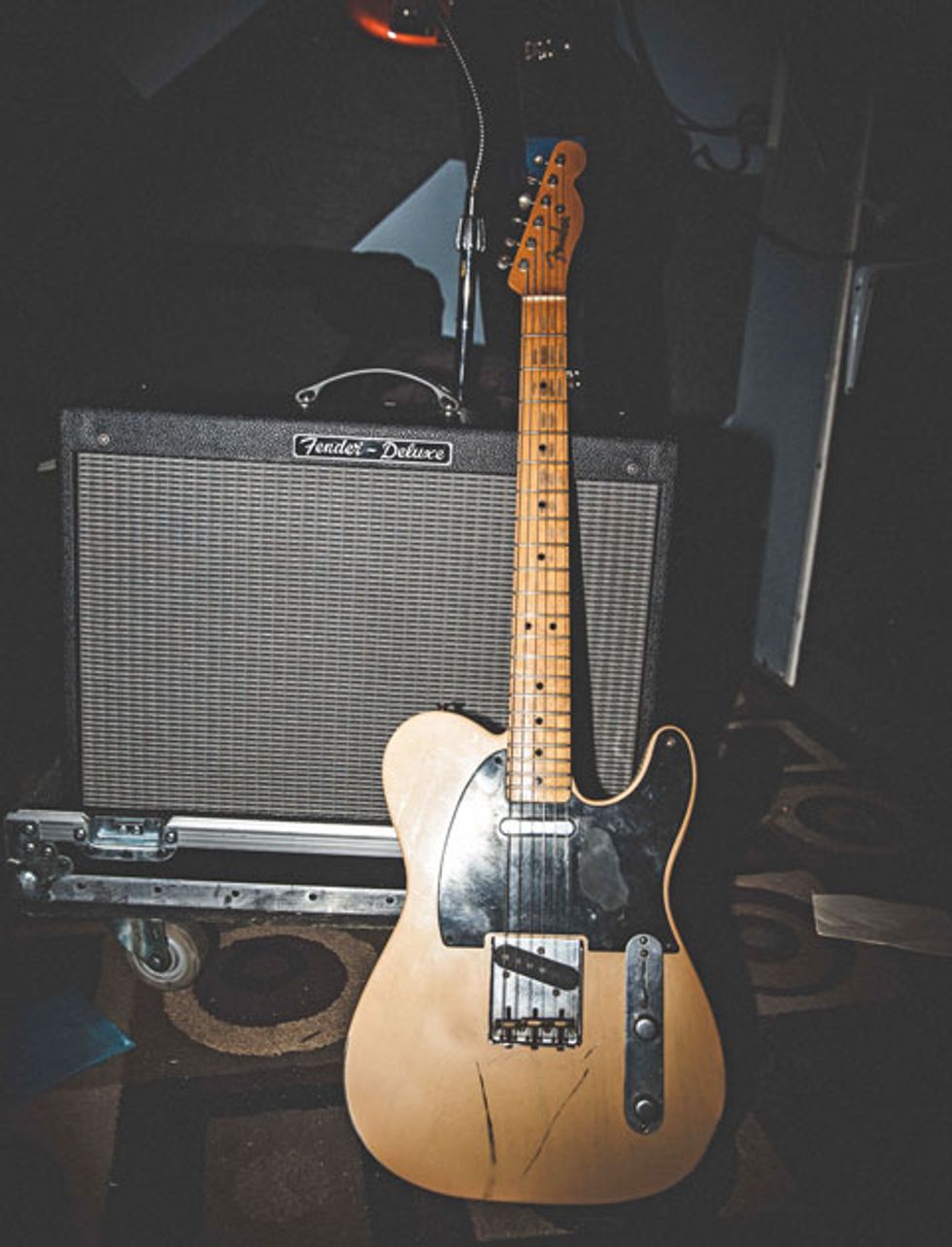
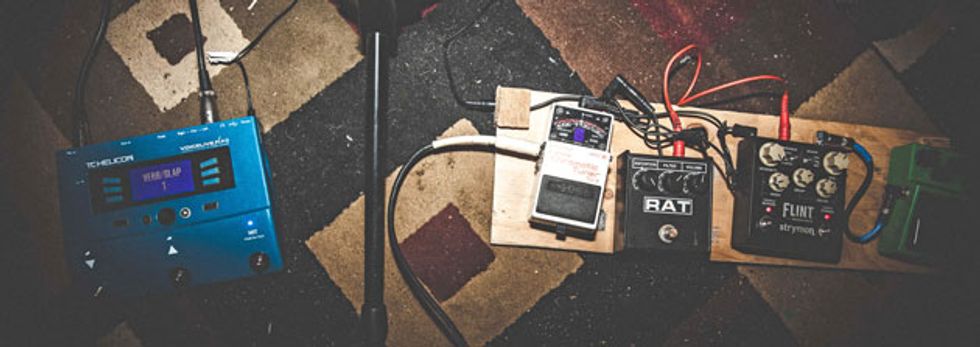
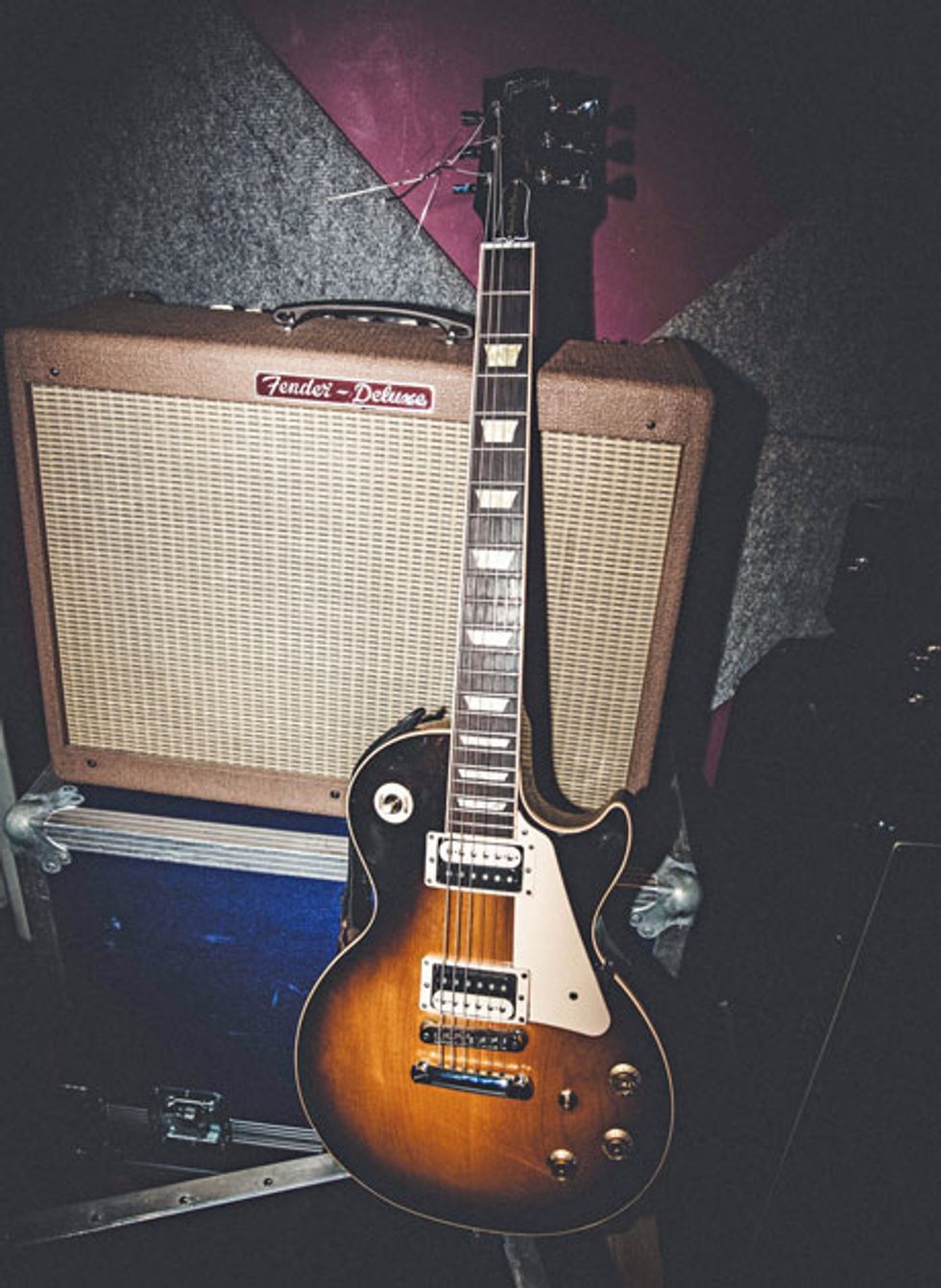
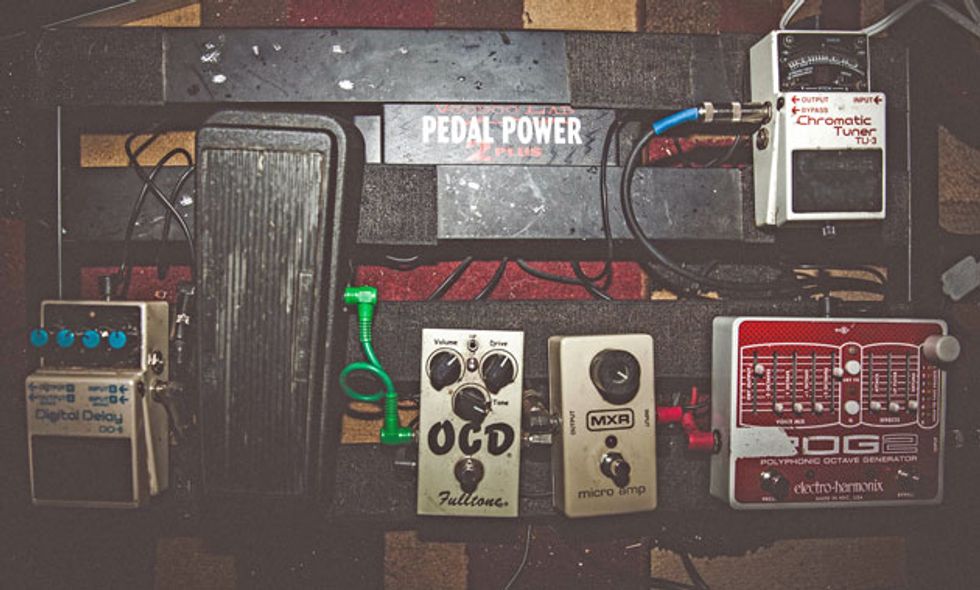
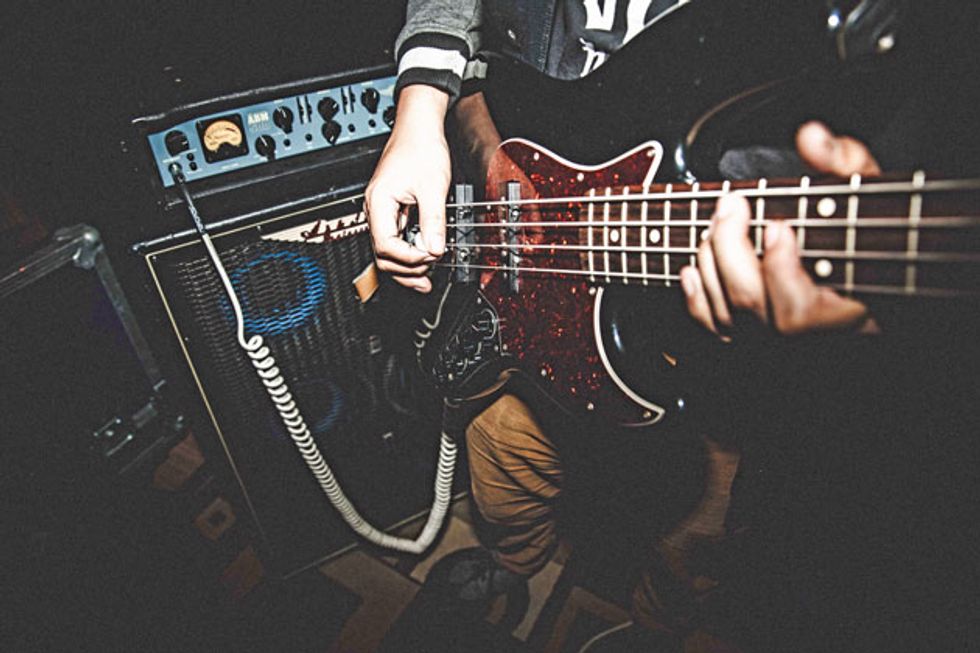
7. Happyness’ Benji Compston
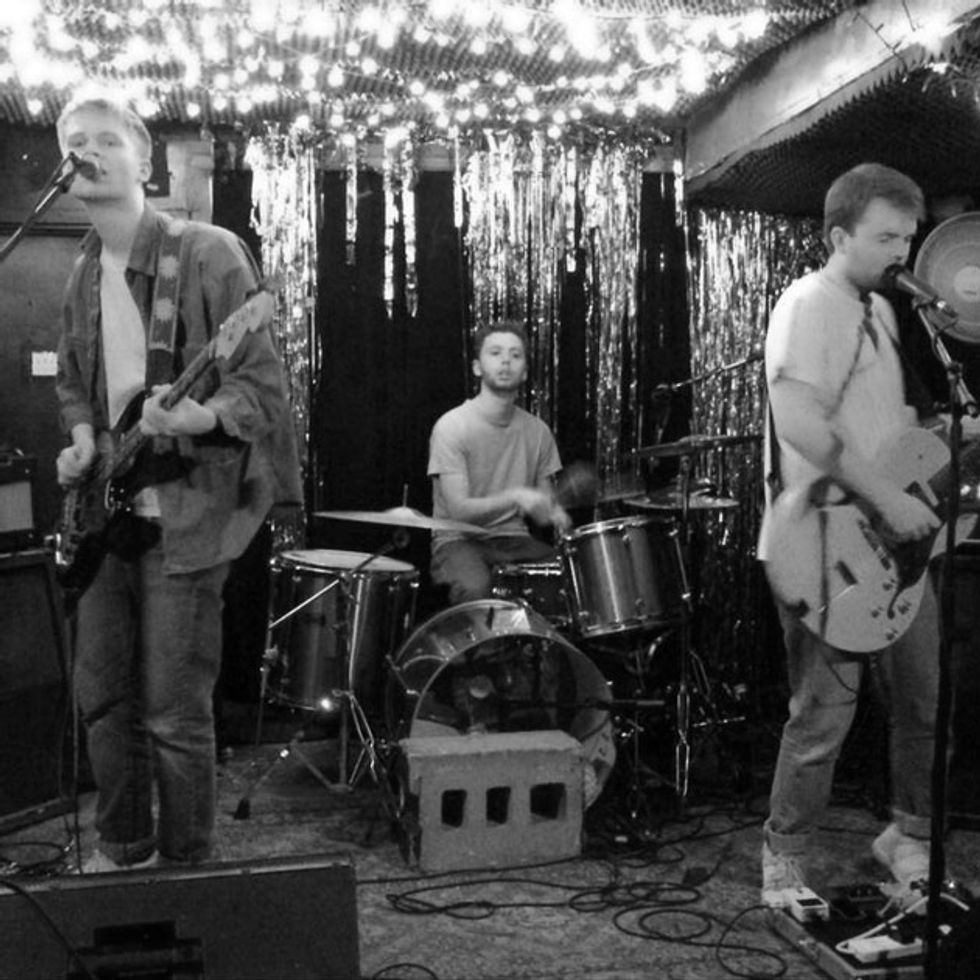
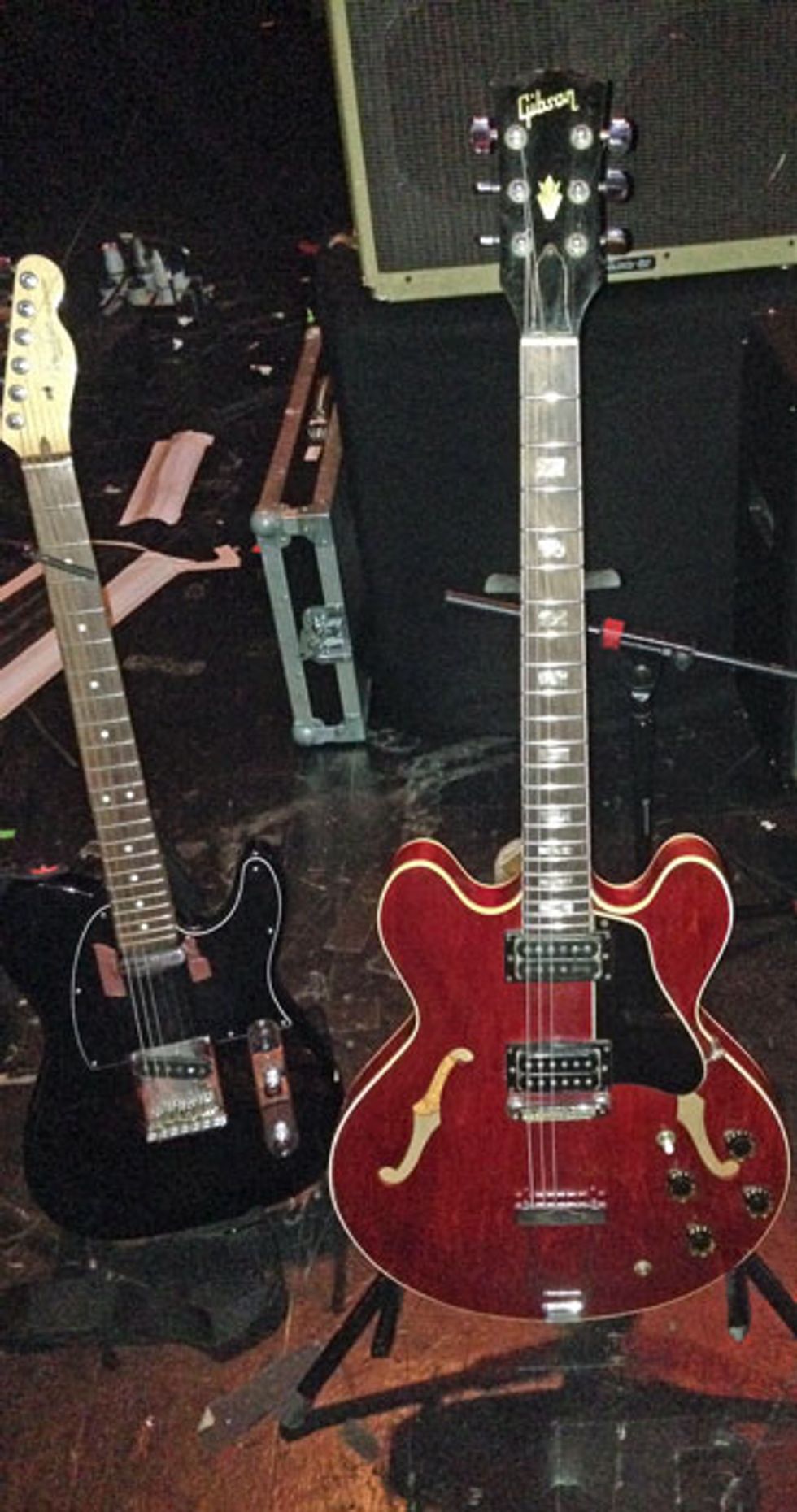
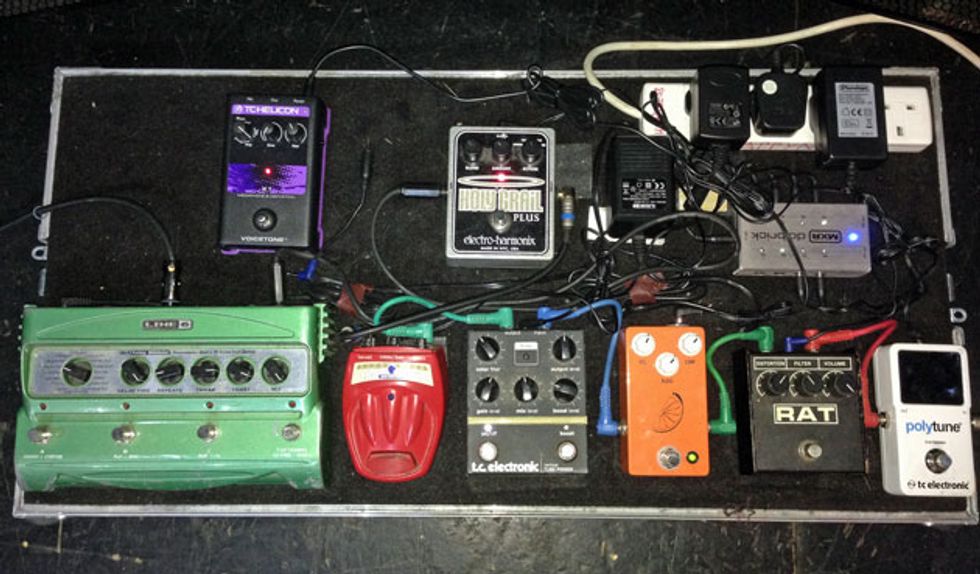
“My favorite thing on my pedalboard has to be the Danelectro Cool Cat distortion pedal—the red one. They’re super cheap and have an awesome, tacky distortion sound that’s really compressed and kind of harsh. We’ve run vocals through it—think: Satan-shouting-through-a-supermarket-PA—and we used it for loads of the distortion sounds on the album. The orange pedal on the board is a JHS Pulp ’N’ Peel Compressor that’s awesome. I keep it on throughout the set and it just softens everything a bit and warms stuff up—like a microwave. Other stomps I have on my board include Electro-Harmonix’s Holy Grail Plus, a Line 6 DL4, TC Electronic’s Vintage Tube Primer and PolyTune, and a Pro Co Rat.”
8. Downtown Boys
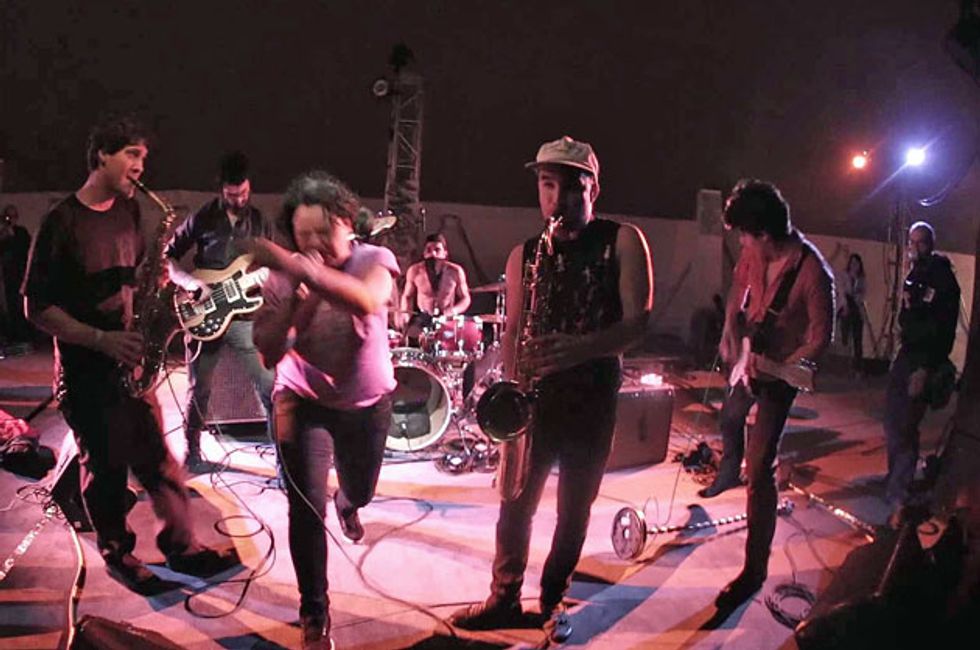
“For the first years of this band we had the cheapest possible guitars and amps because that’s what we could afford. At this point I’ve been able to save up for this lower-end Fender American Standard Telecaster and a used Fender Hot Rod DeVille combo. This is the first nice gear I’ve ever had, but they’re both quality pieces of gear, comparatively lightweight, and they can be loud as hell—plus they fit nicely in our minivan without a problem. I firmly believe you don’t need really expensive or huge stuff to sound professional. I’ve tried using pedals before but I find they just break a lot and get in the way so I just go right into the amp.”
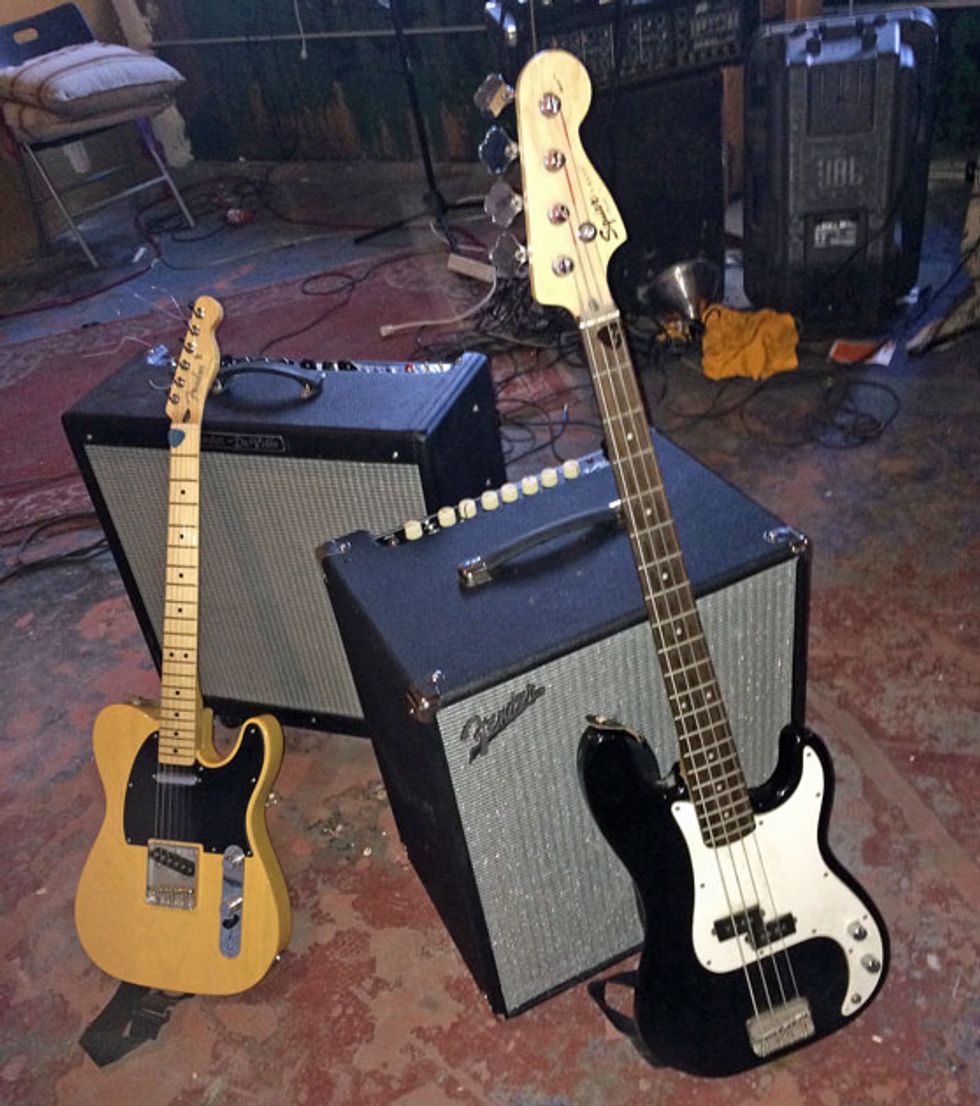
“As a true suburban high-school kid, I loved to play this basic little short-scale bass I got for Christmas from Guitar Center, but when I went to college my parents sold it while I was gone! So when Downtown Boys asked me to play bass for them only a few weeks before tour, I had to pick up this full-sized Peavey bass that Victoria happened to have on hand. It’s solid, but its high action is definitely making me stronger and helps me to be able to mute the notes I don’t want to be ringing out [laughs]! We had another amp that blew out the first few days of tour so this Fender Rumble 200 V3 combo was the best small-and-cheap-but-still-good thing we could find at the random Guitar Center.”
9. Ryan Corn
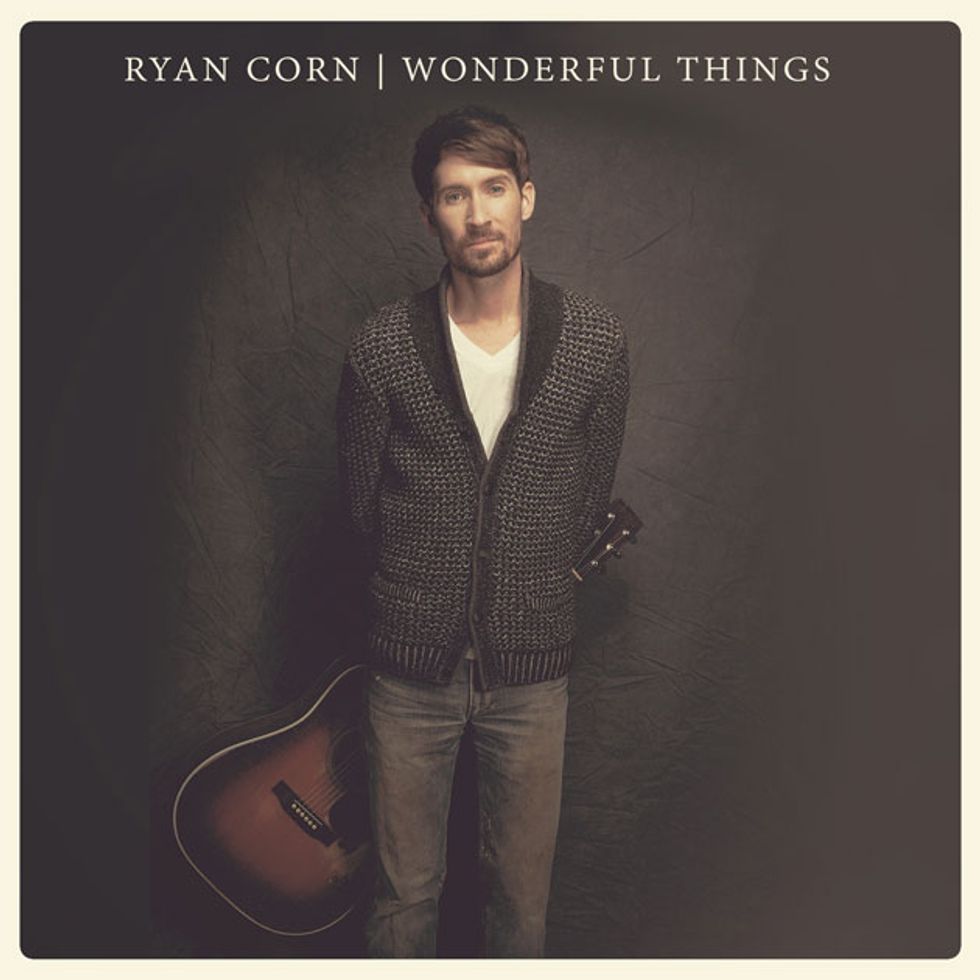
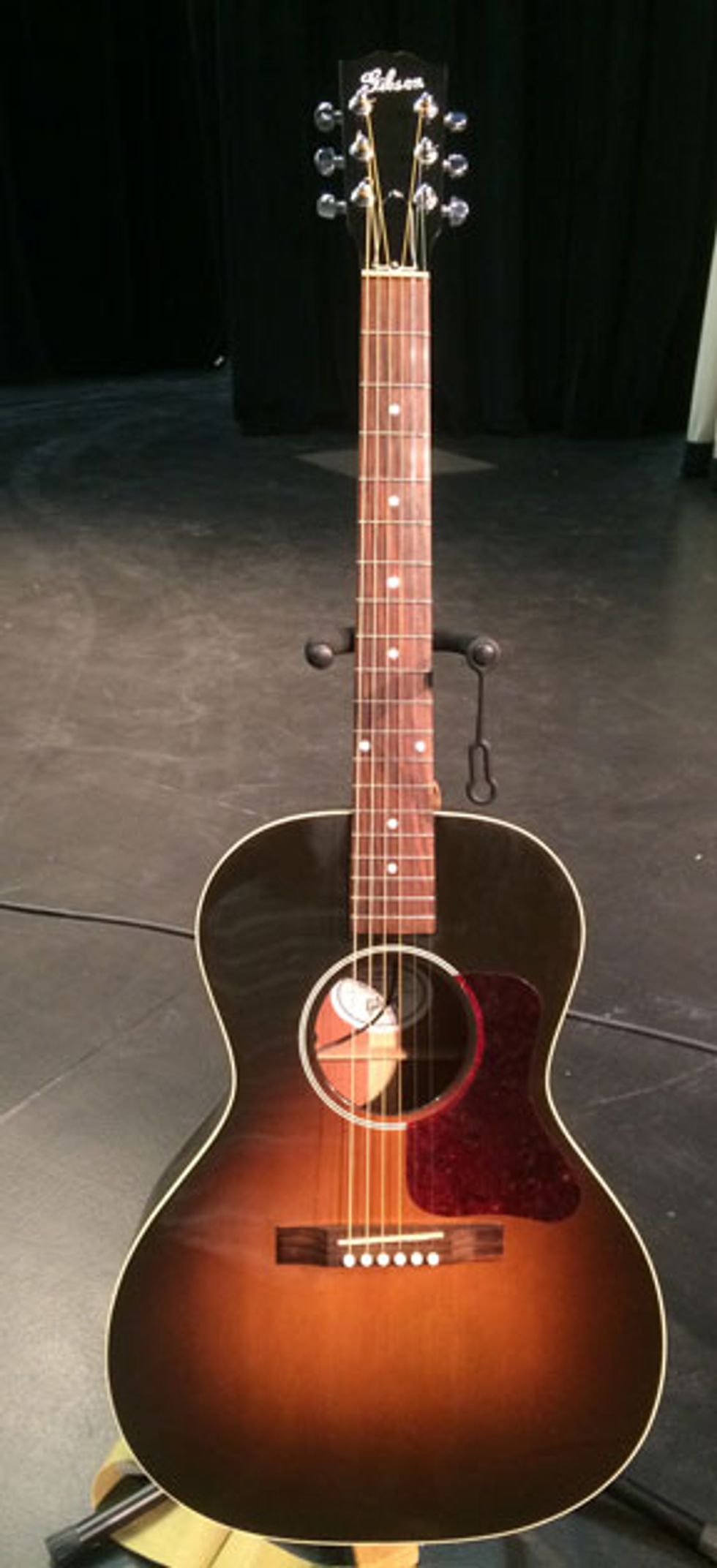
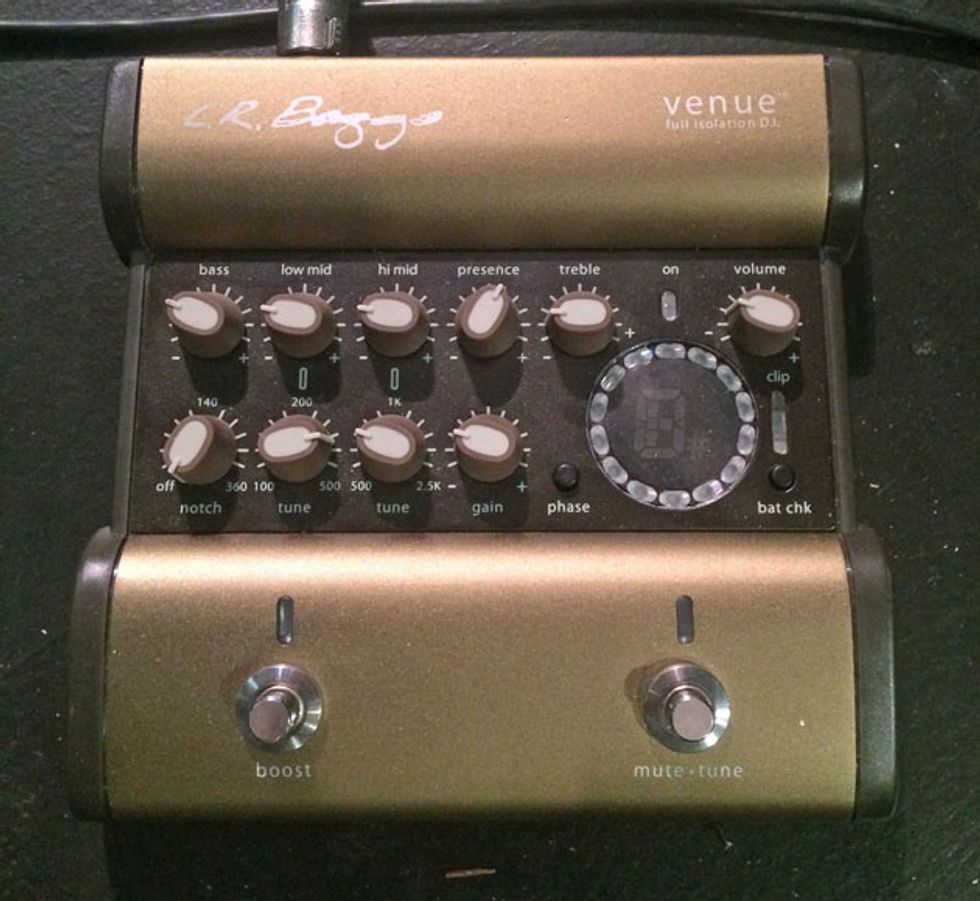
10. Best Coast
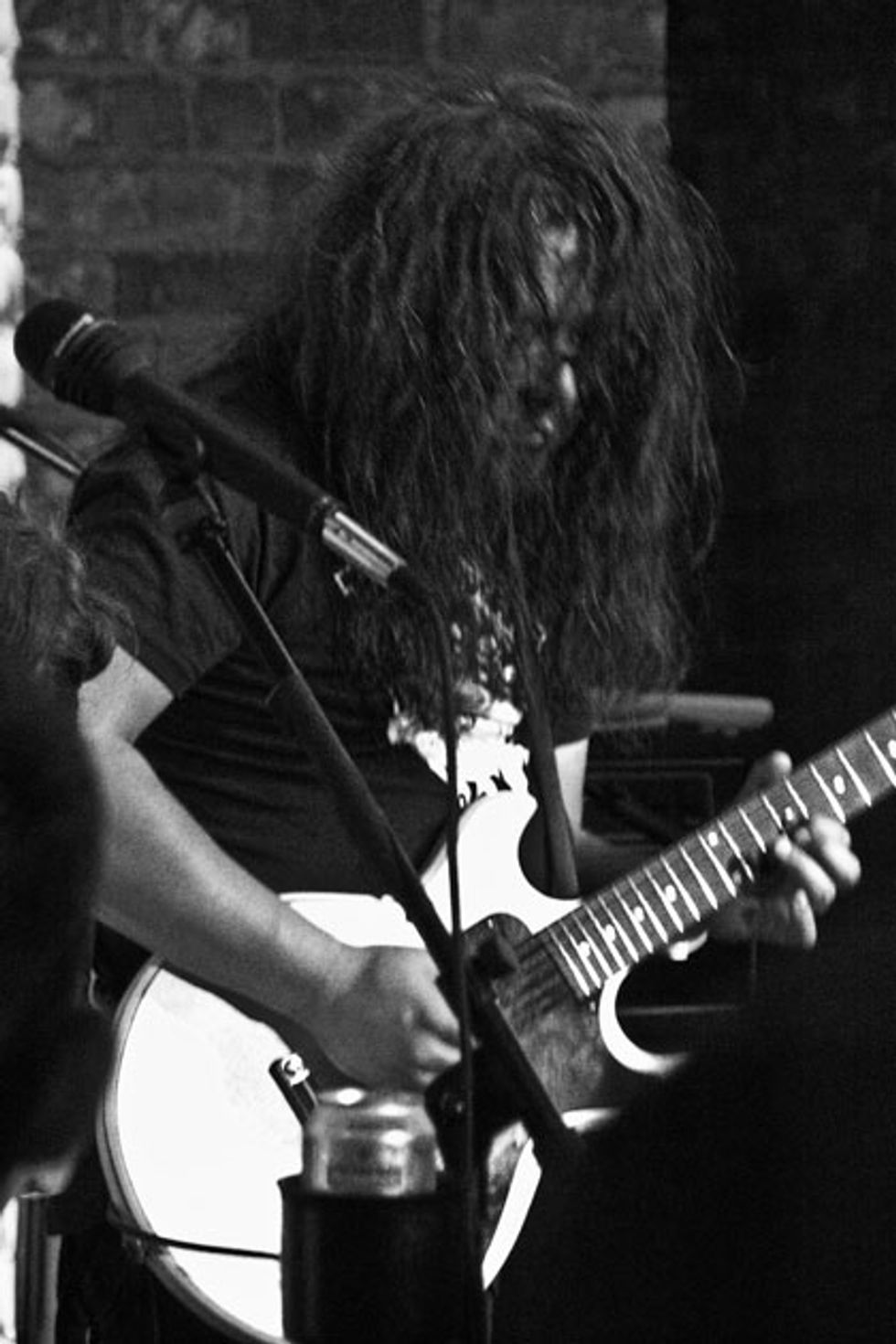
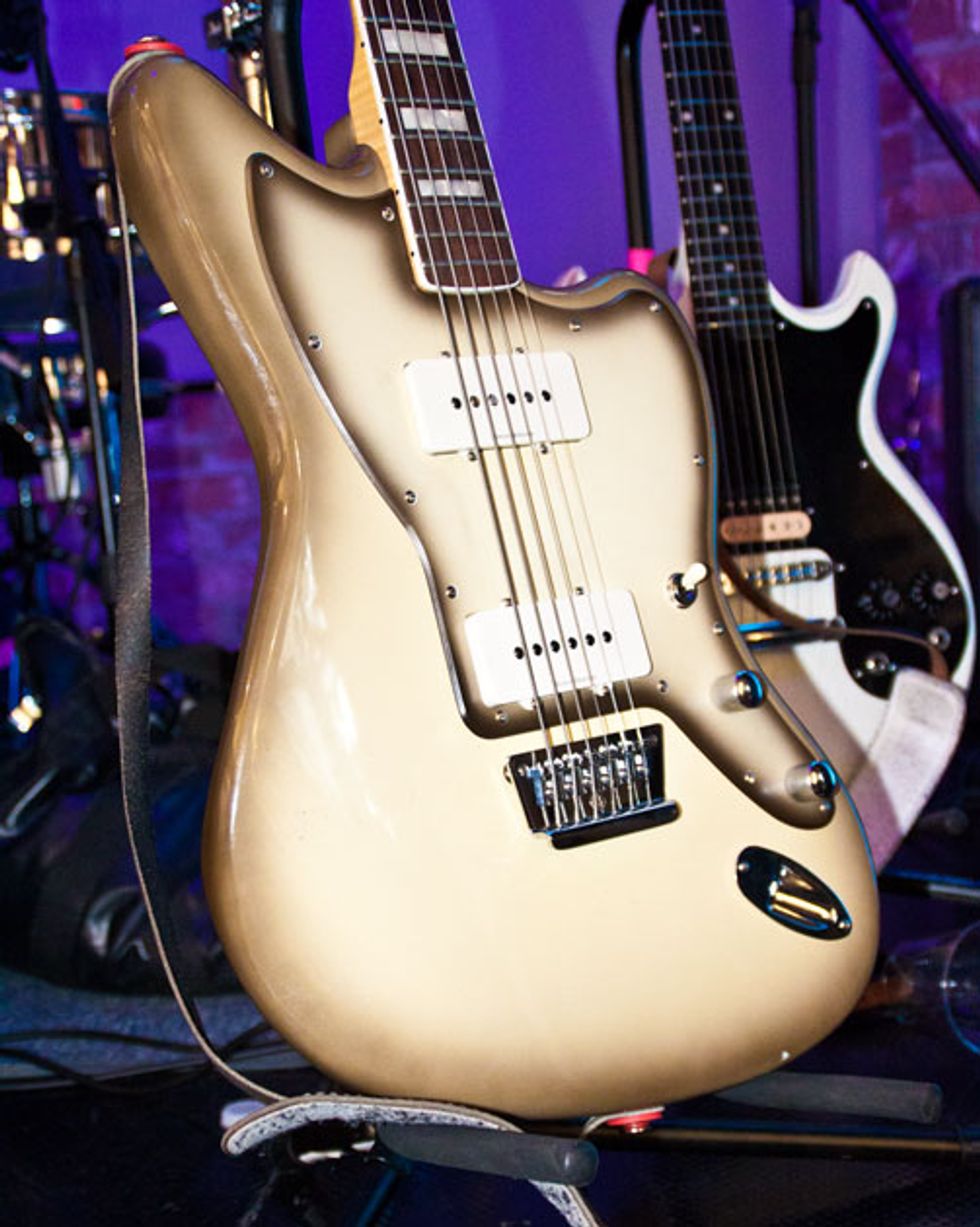
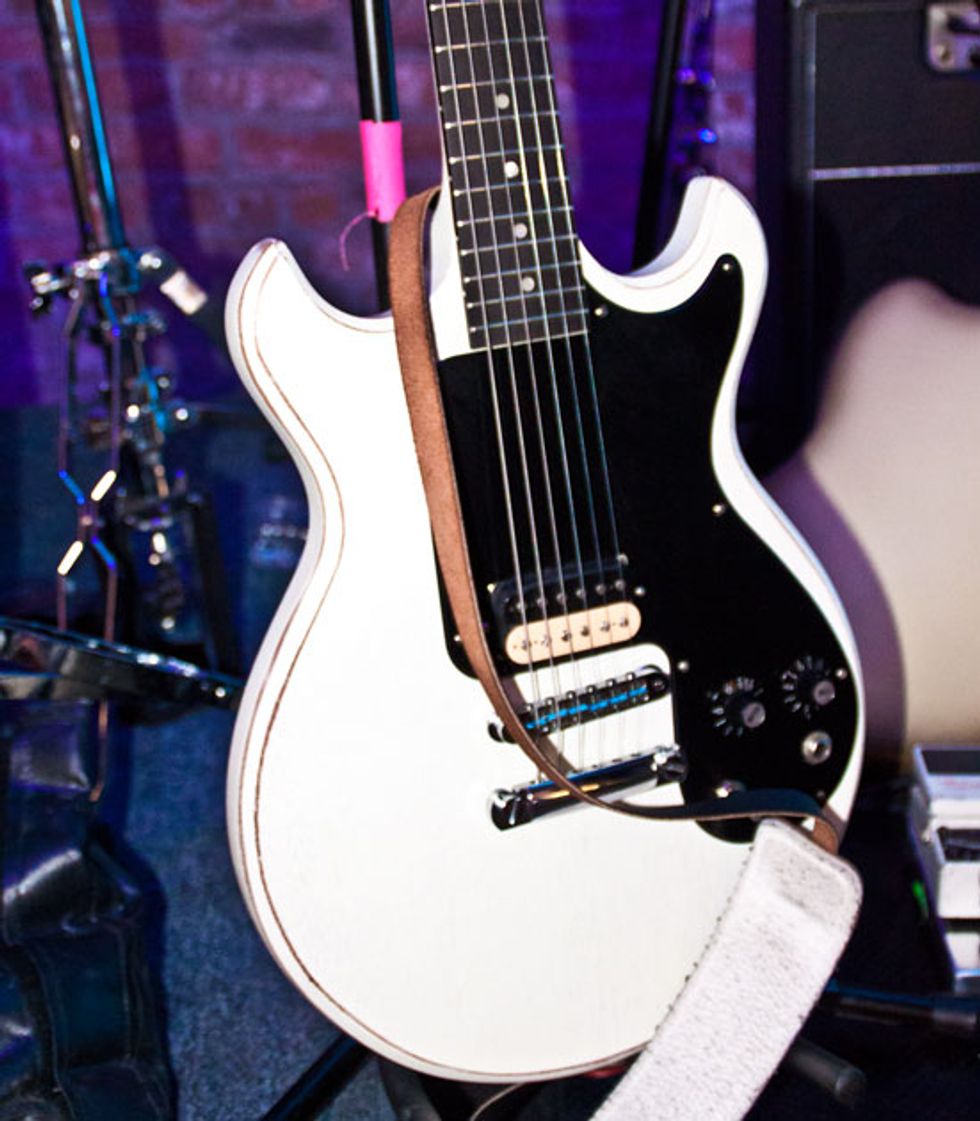
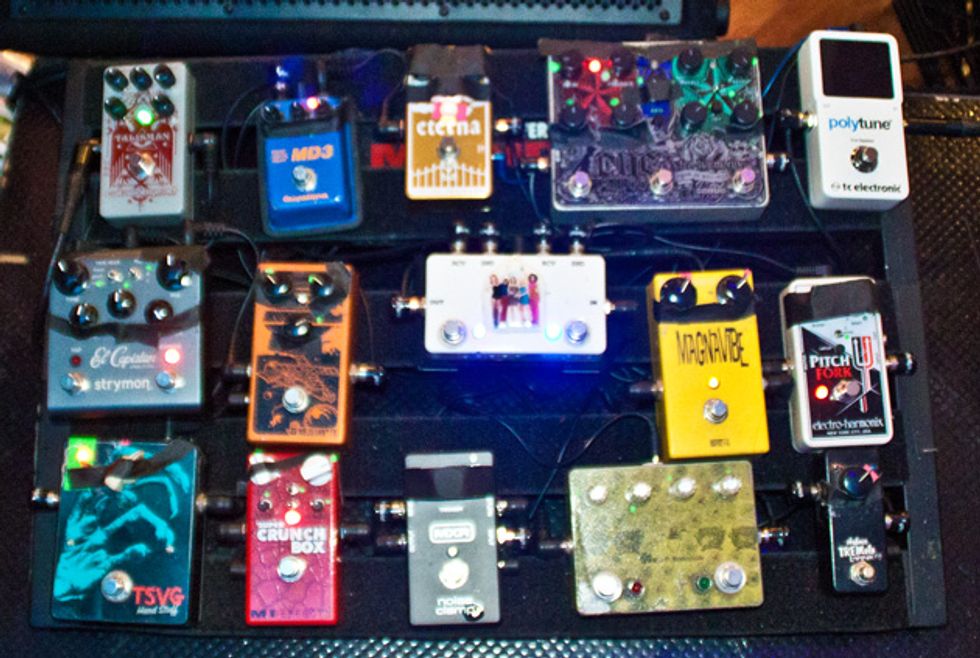
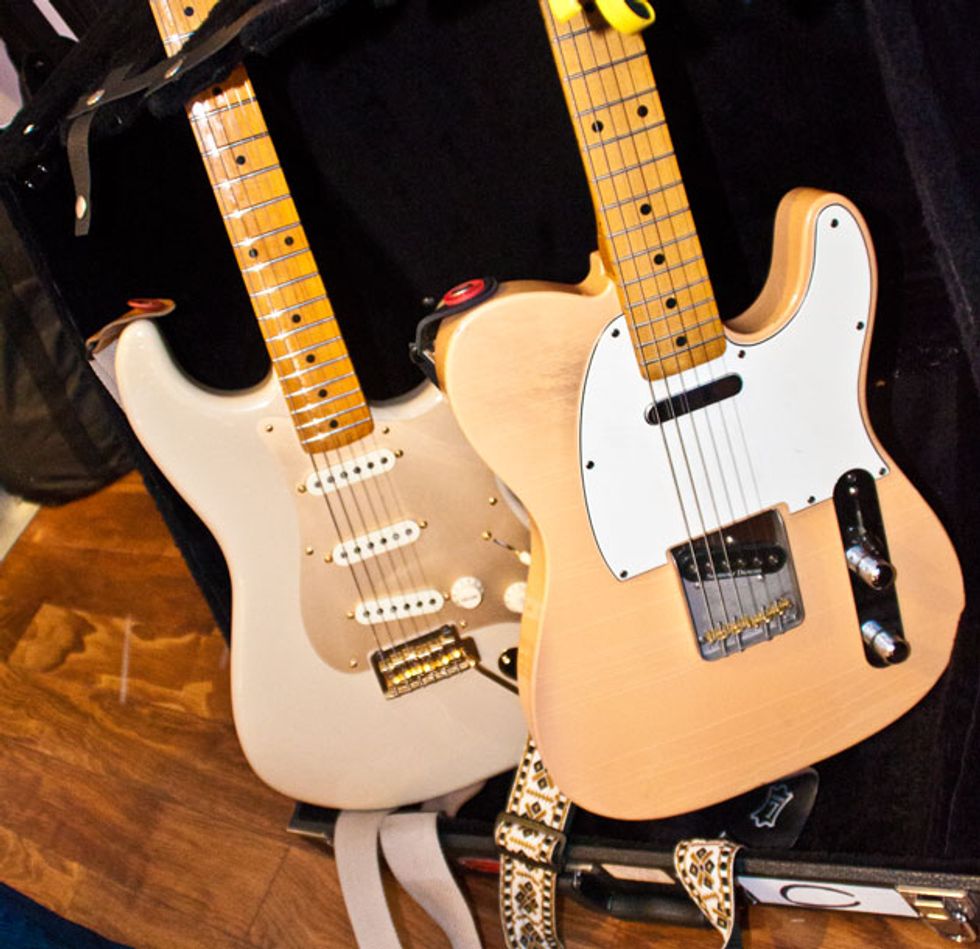
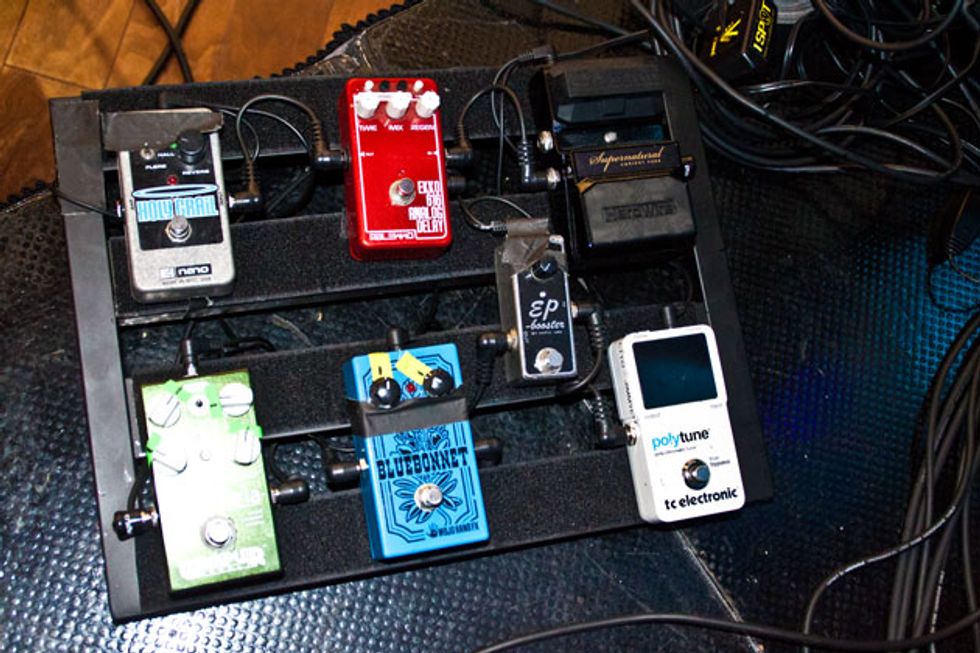
11. Courtney Barnett
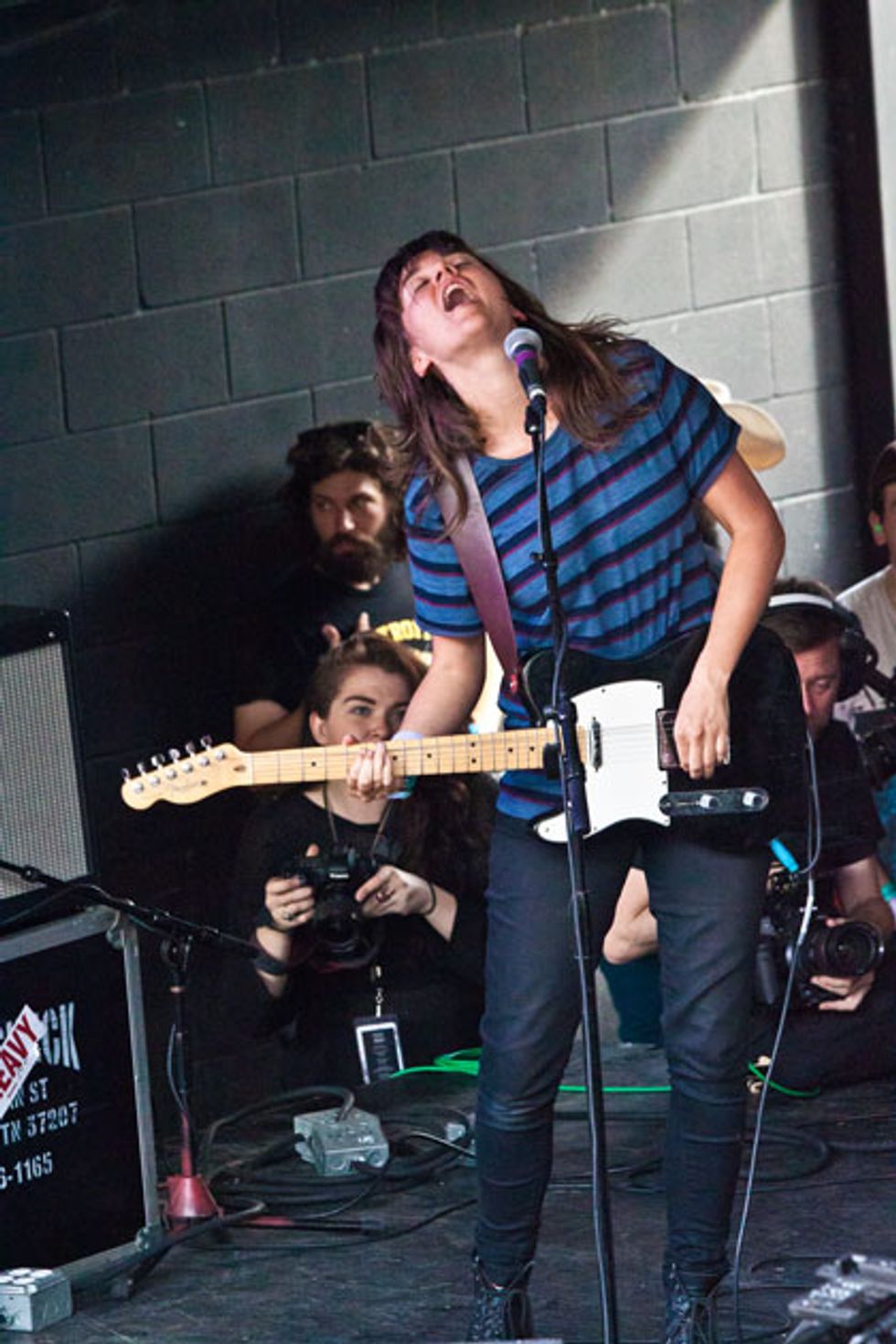
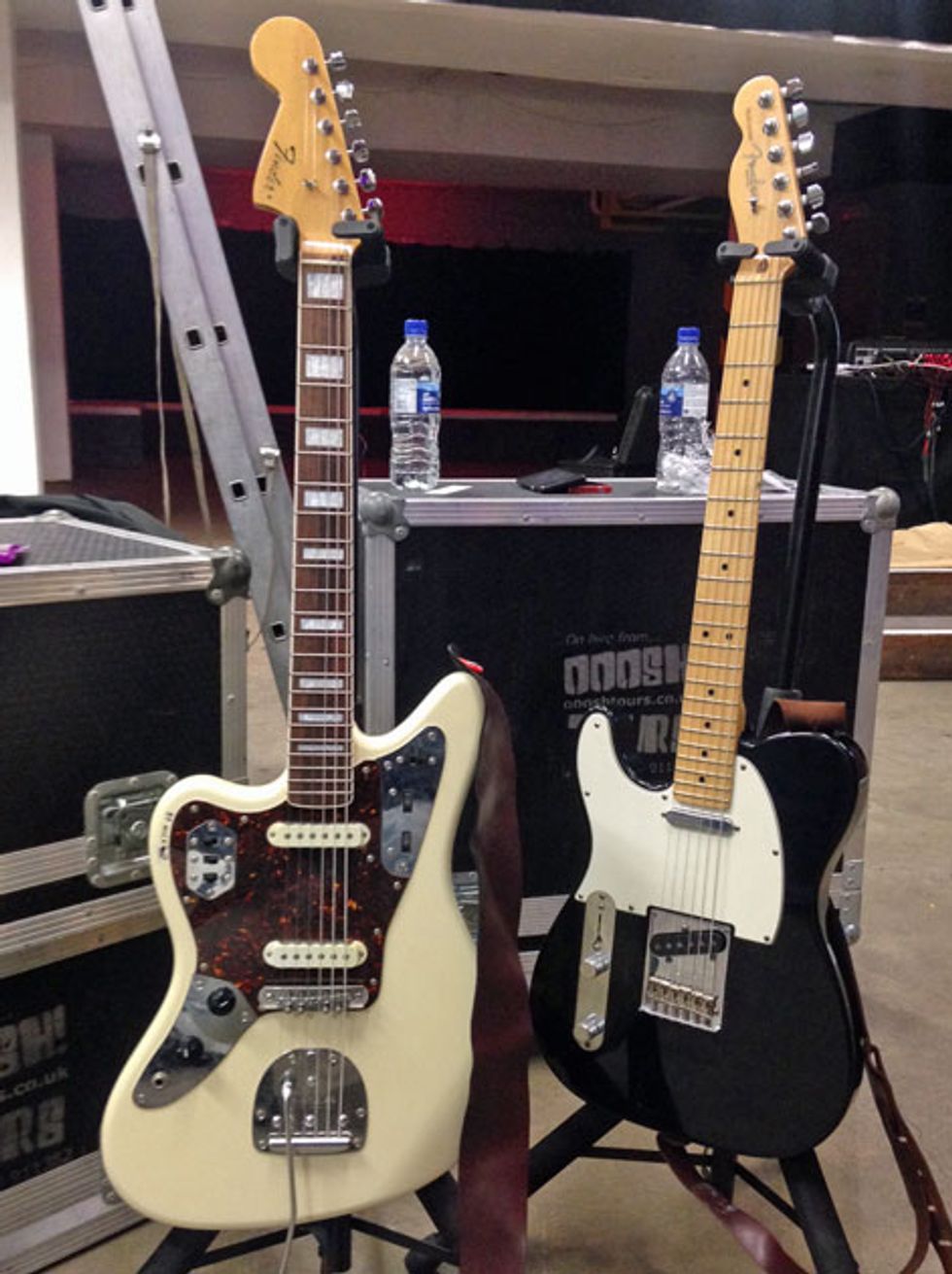
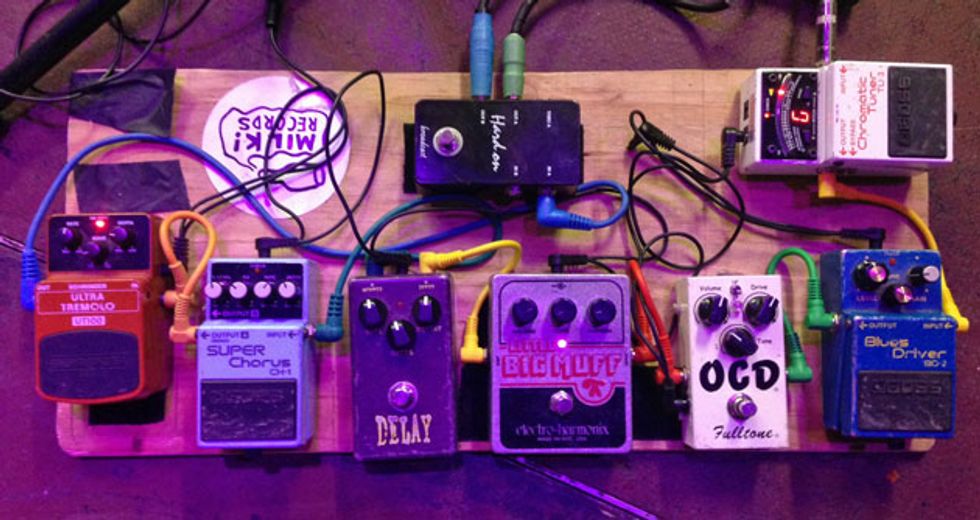
12. Mise en Scene’s Stefanie Blondal Johnson
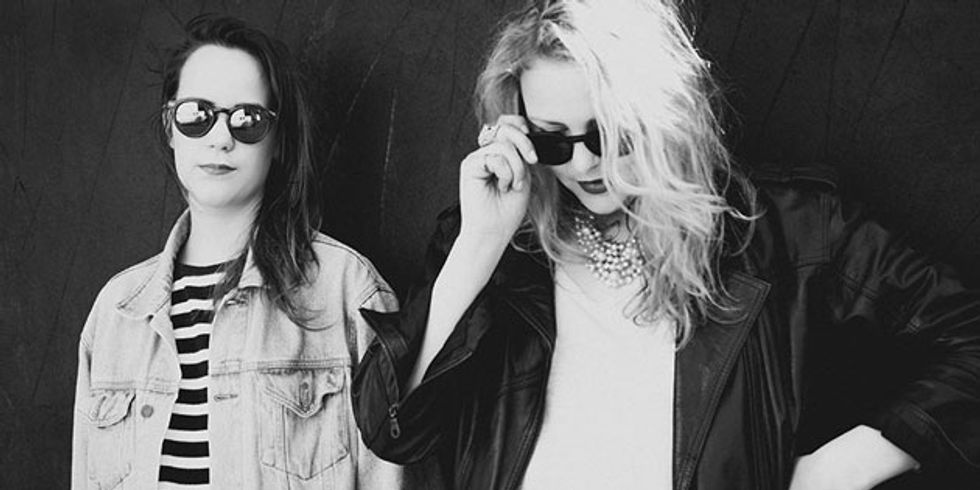
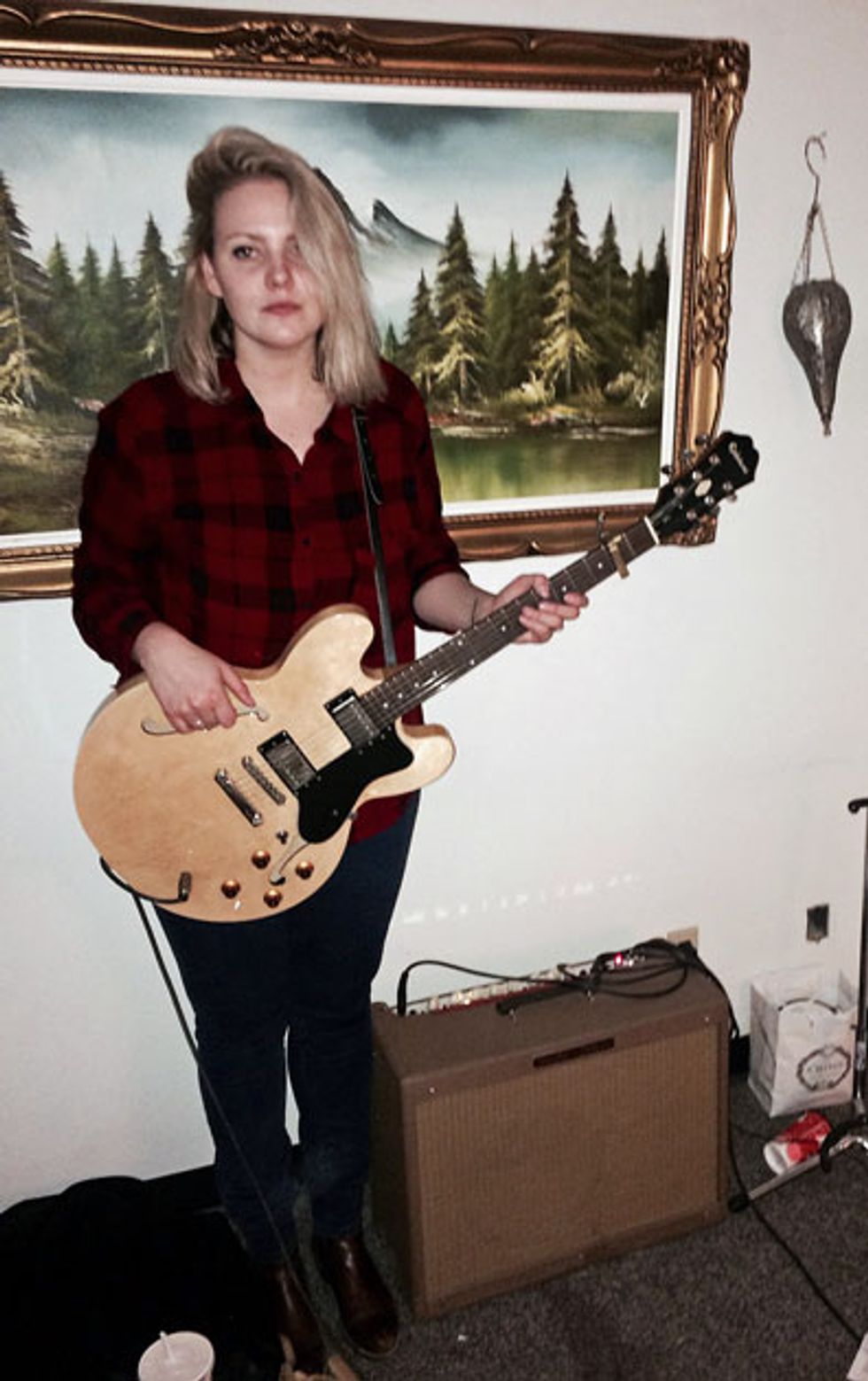
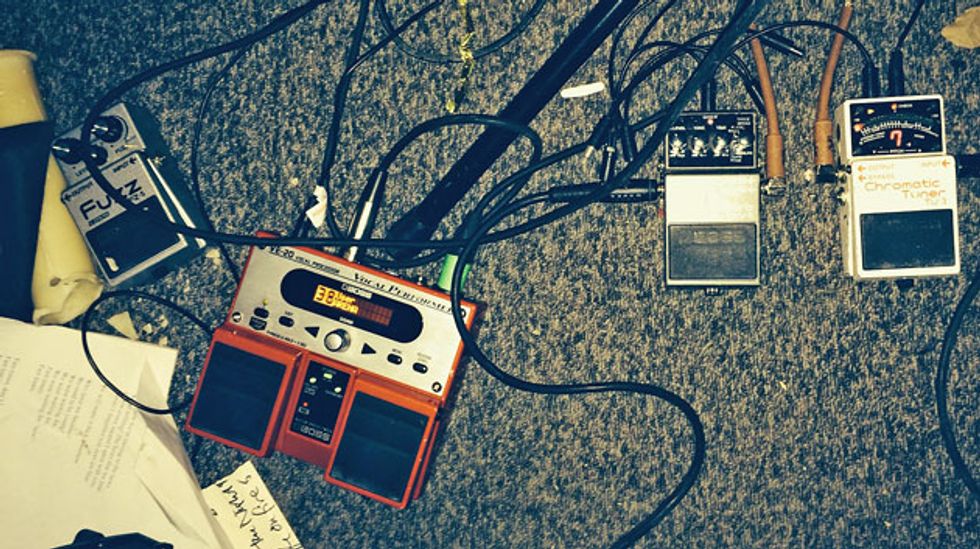
13. KEN Mode
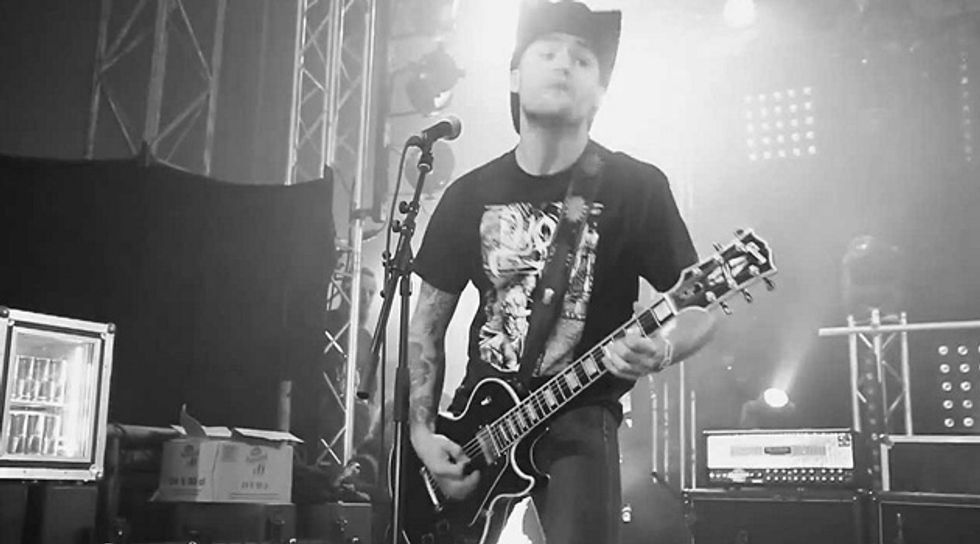
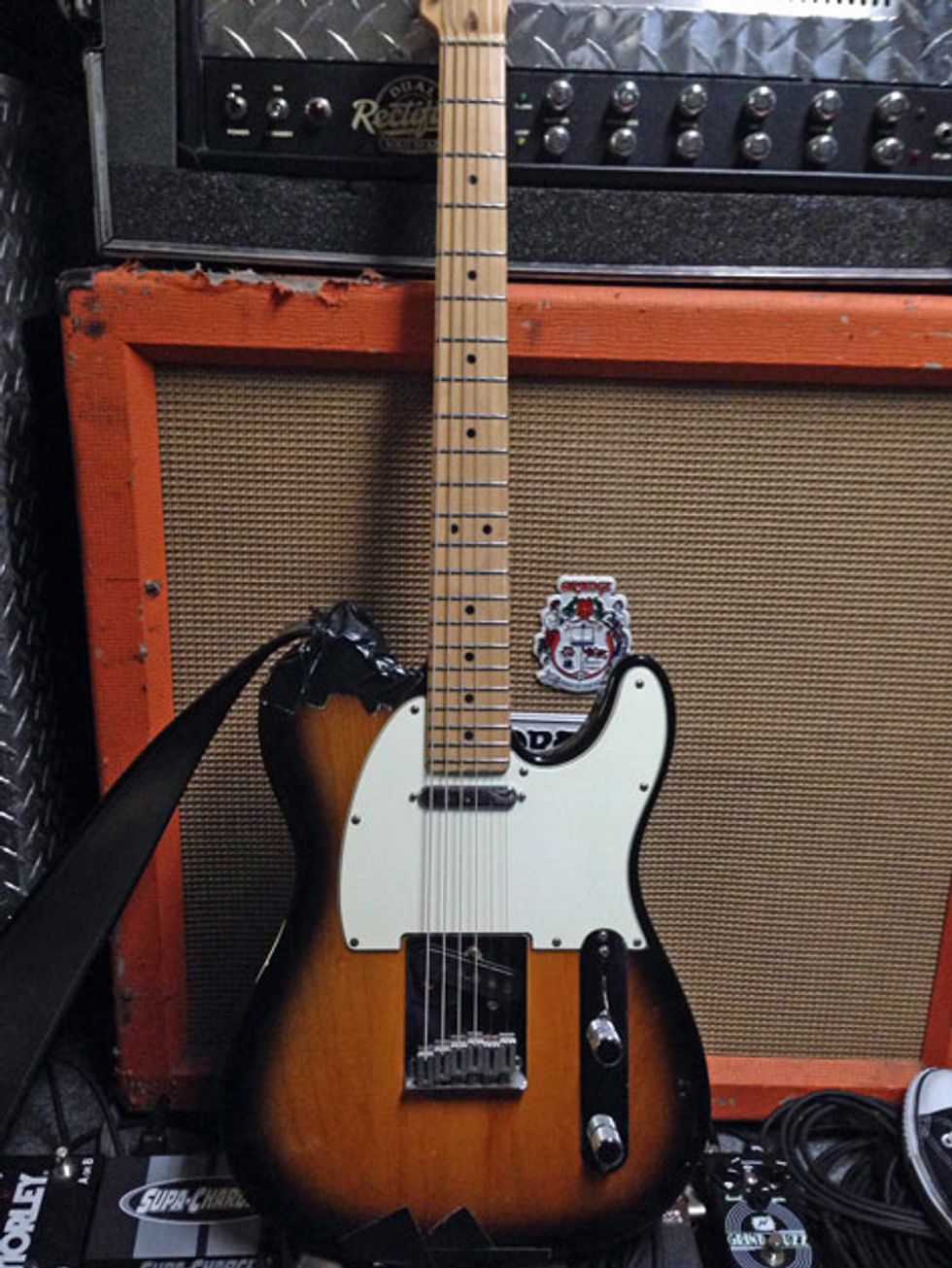
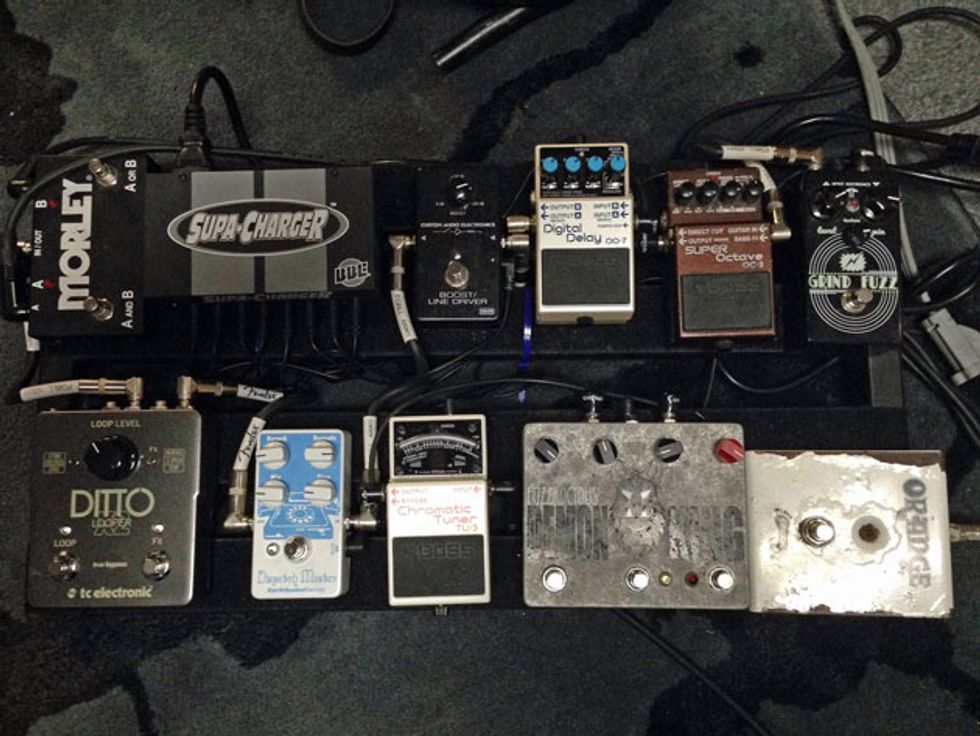
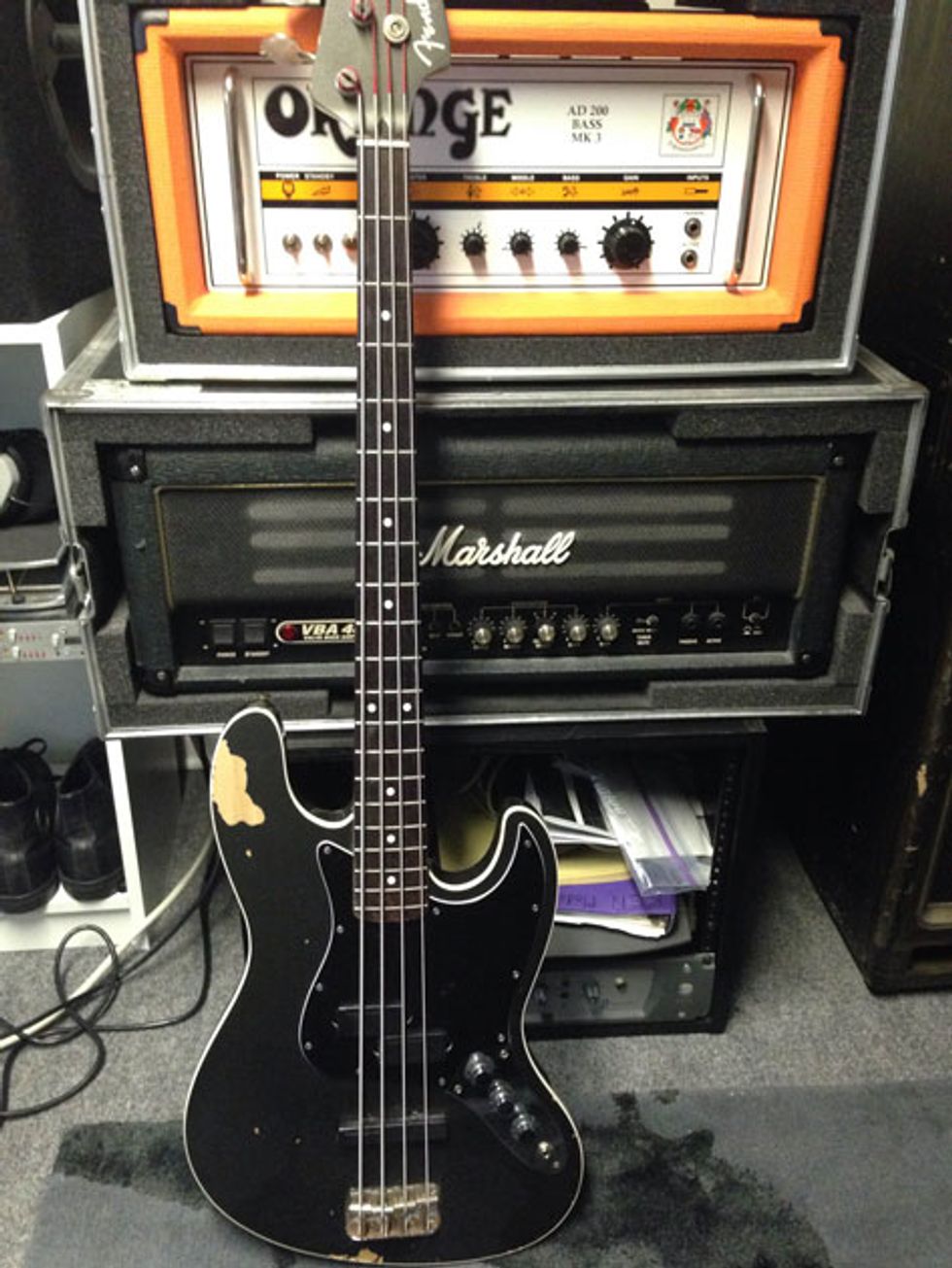
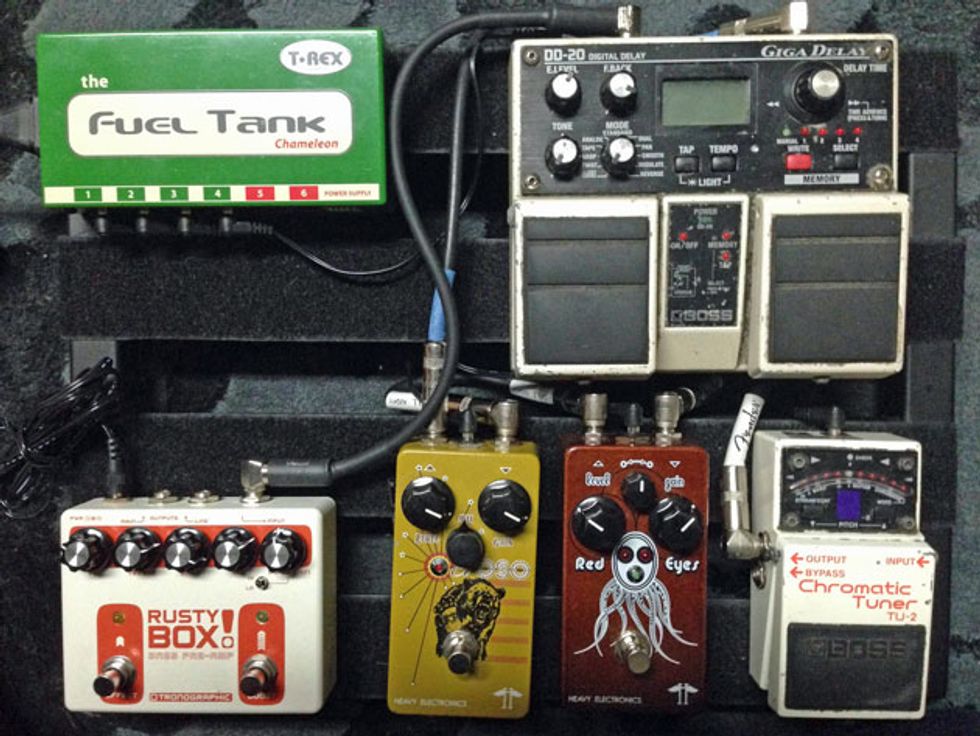
14. The Bros. Landreth
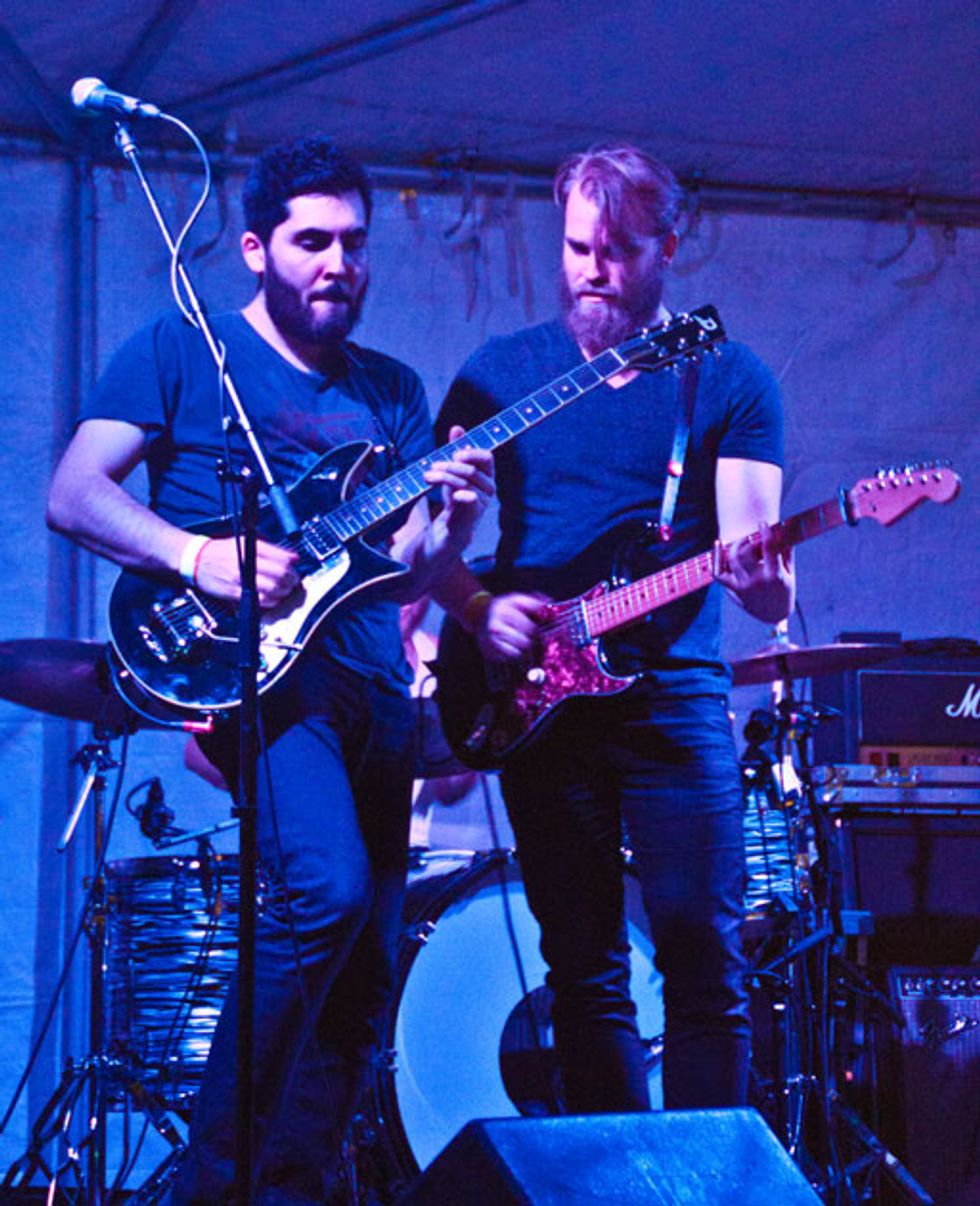
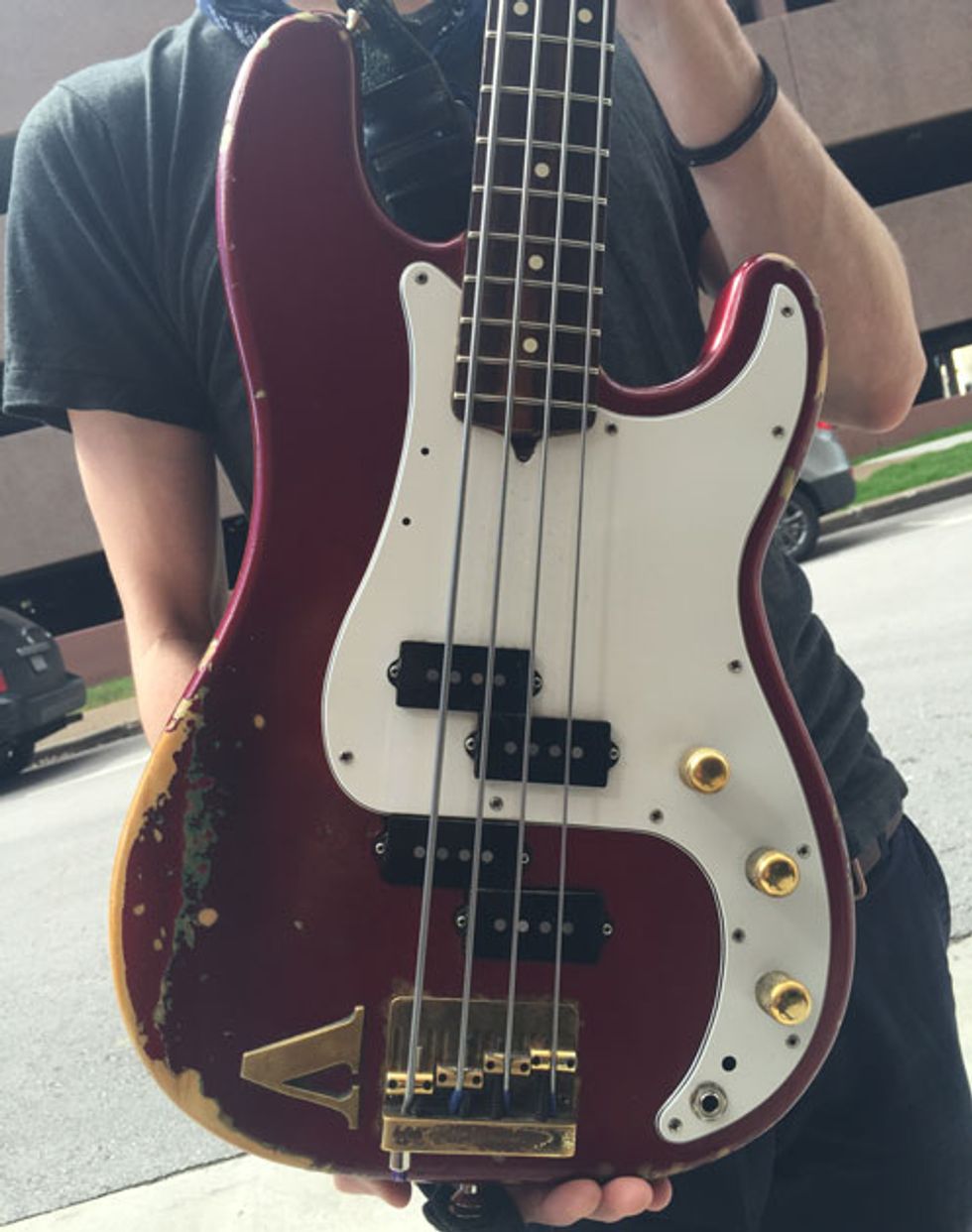
"My go-to amp for the better part of the last decade has been an Aguilar DB 750 through an Ampeg 610. It’s a solid combo and has survived almost without incident or breaking down over hundreds of thousands of miles of touring. It’s a brick and it’s got tone and headroom for days.”
Joey Landreth’s Gear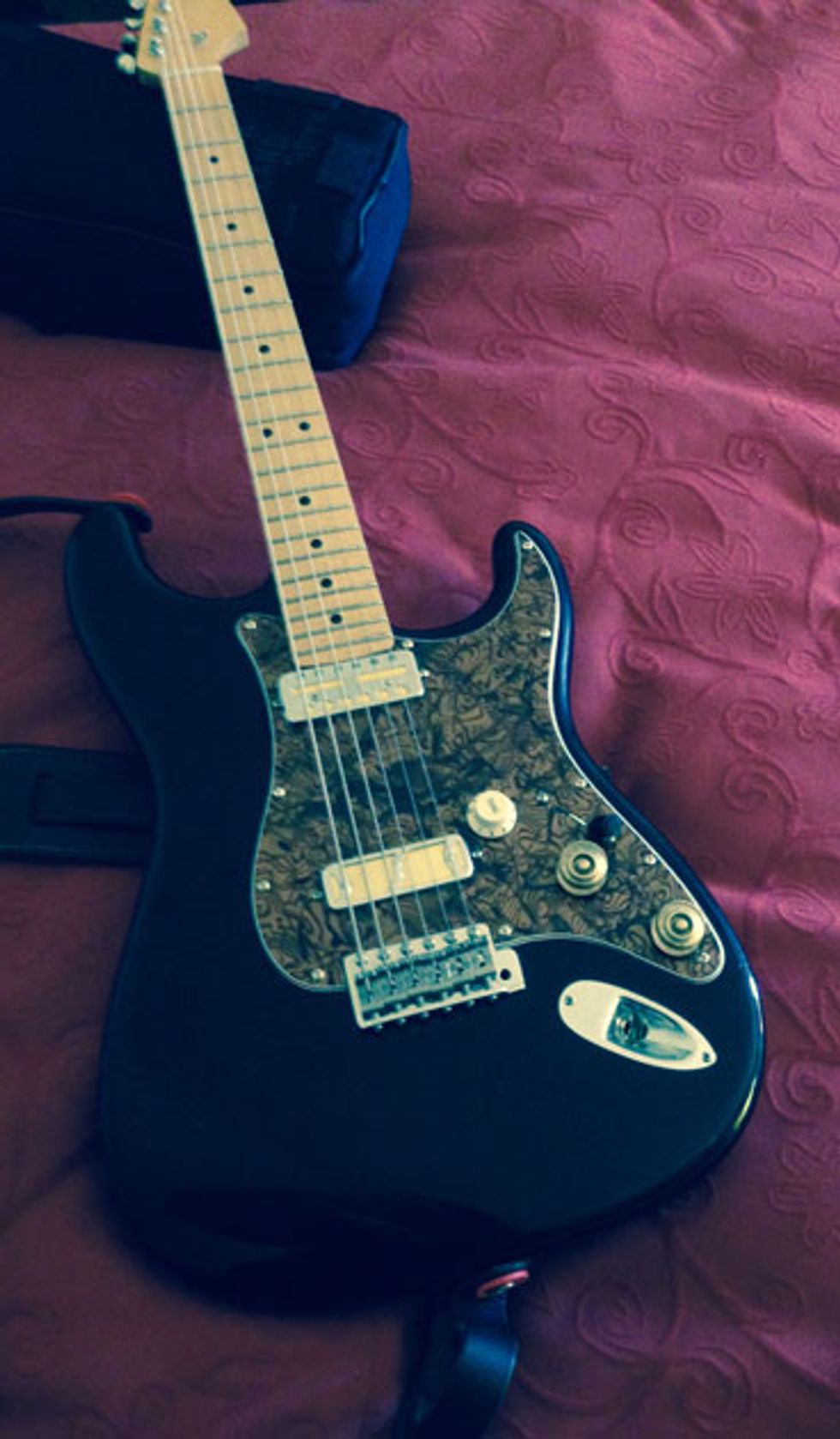
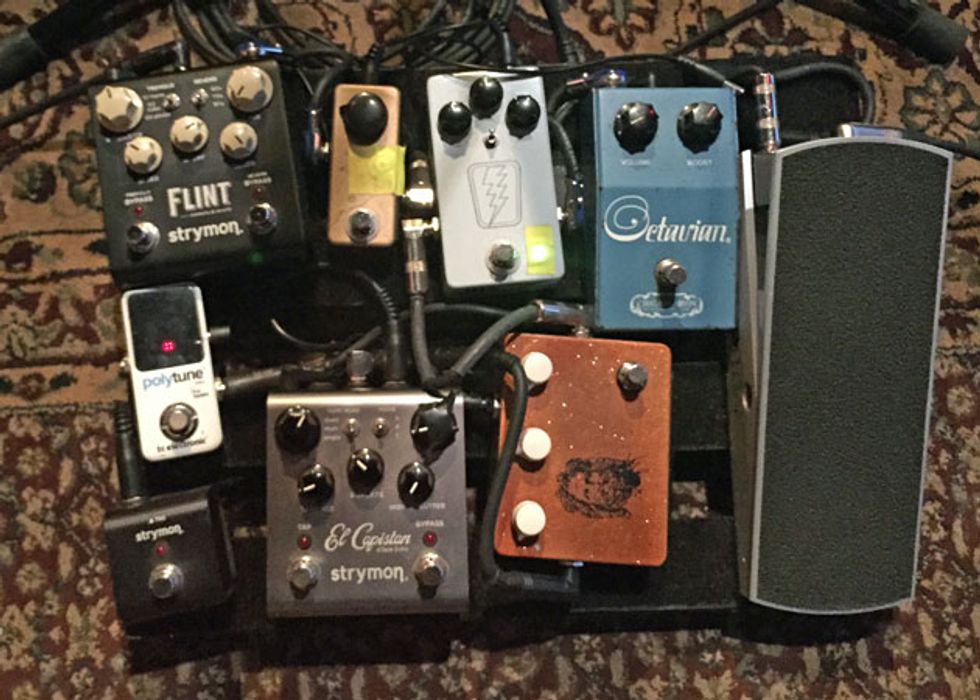
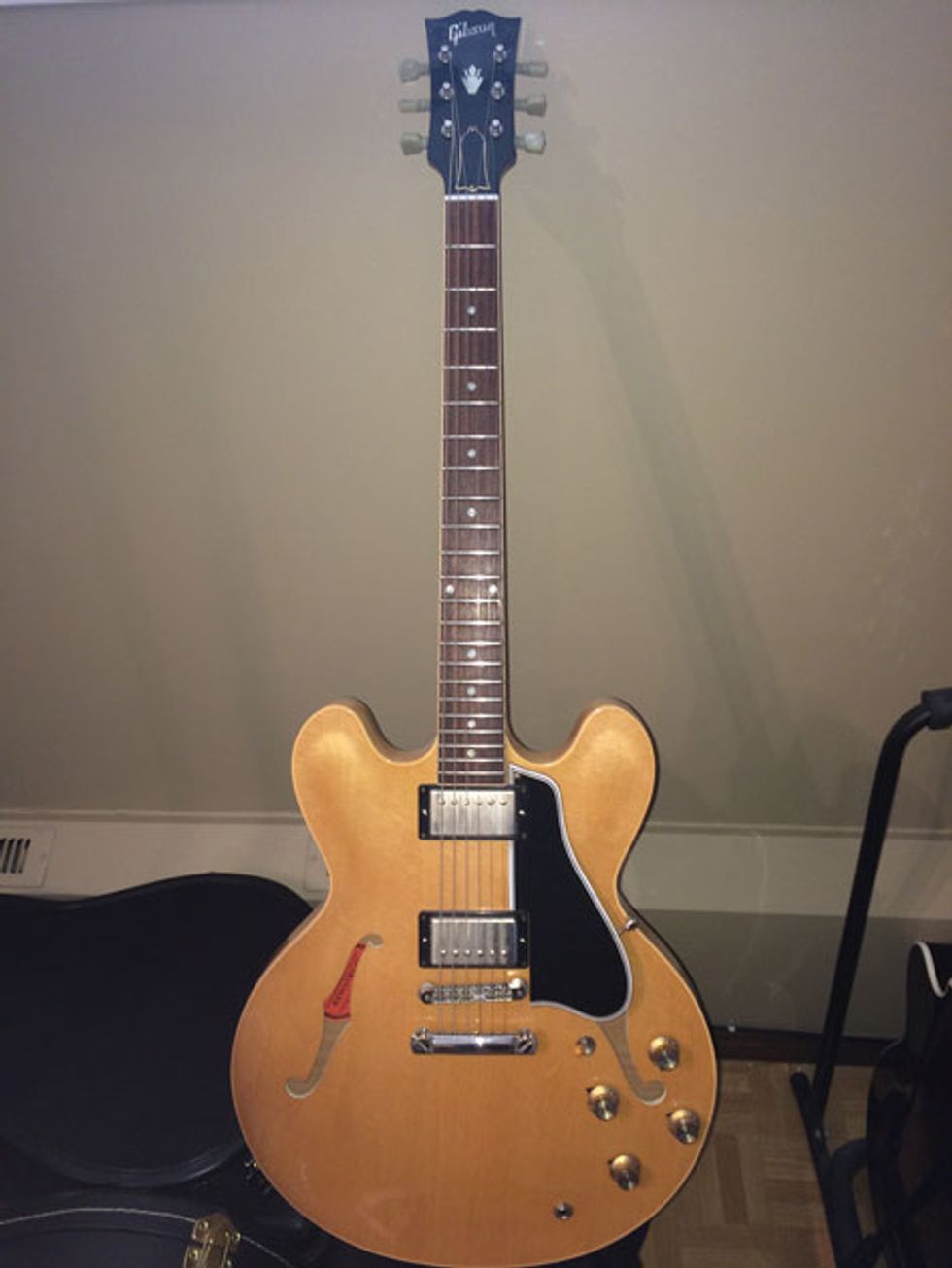
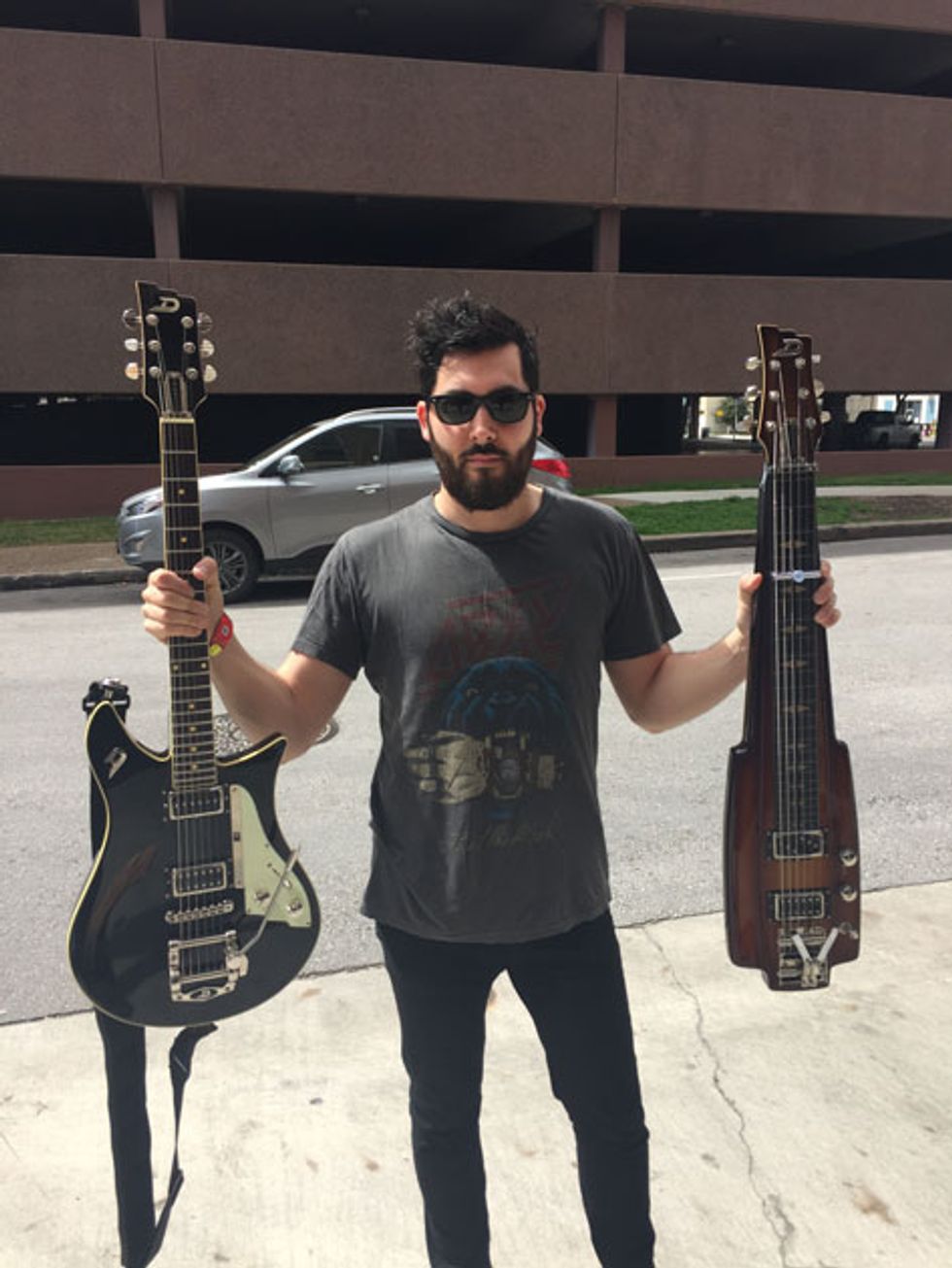
15. Ex Cops’ Brian Harding
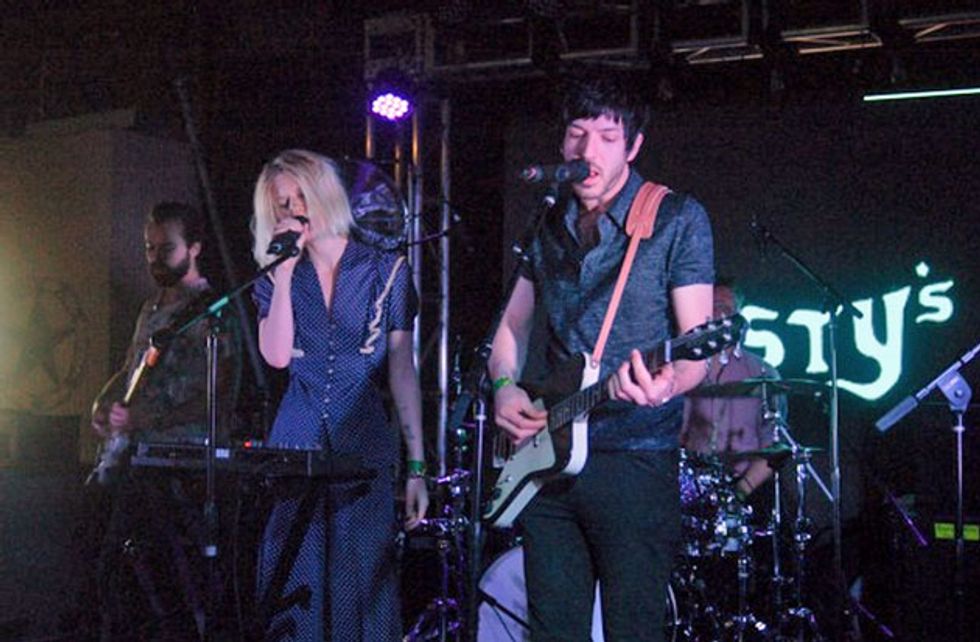
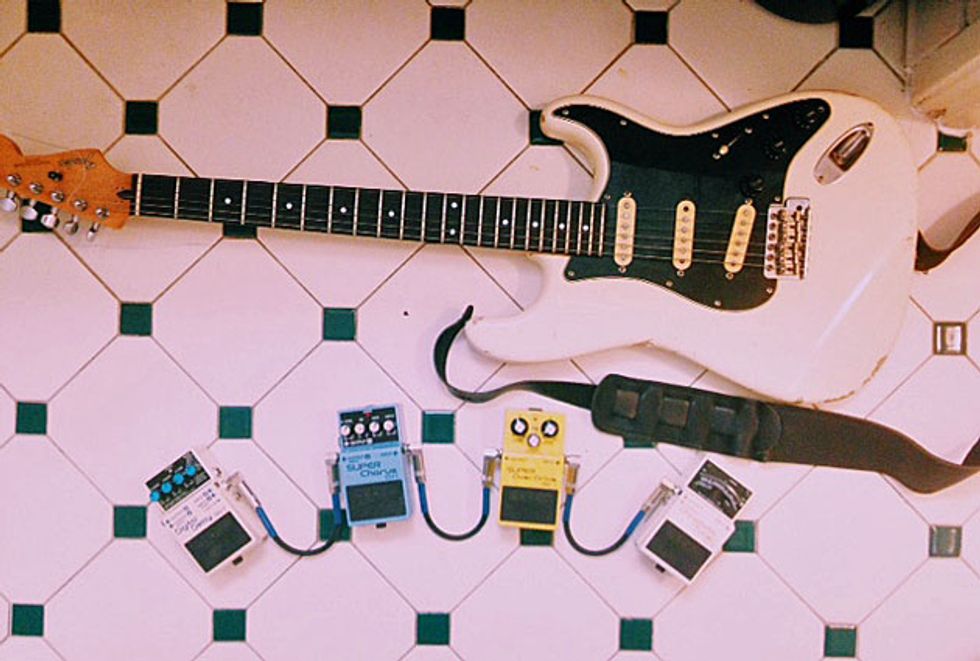
16. Cody Brooks
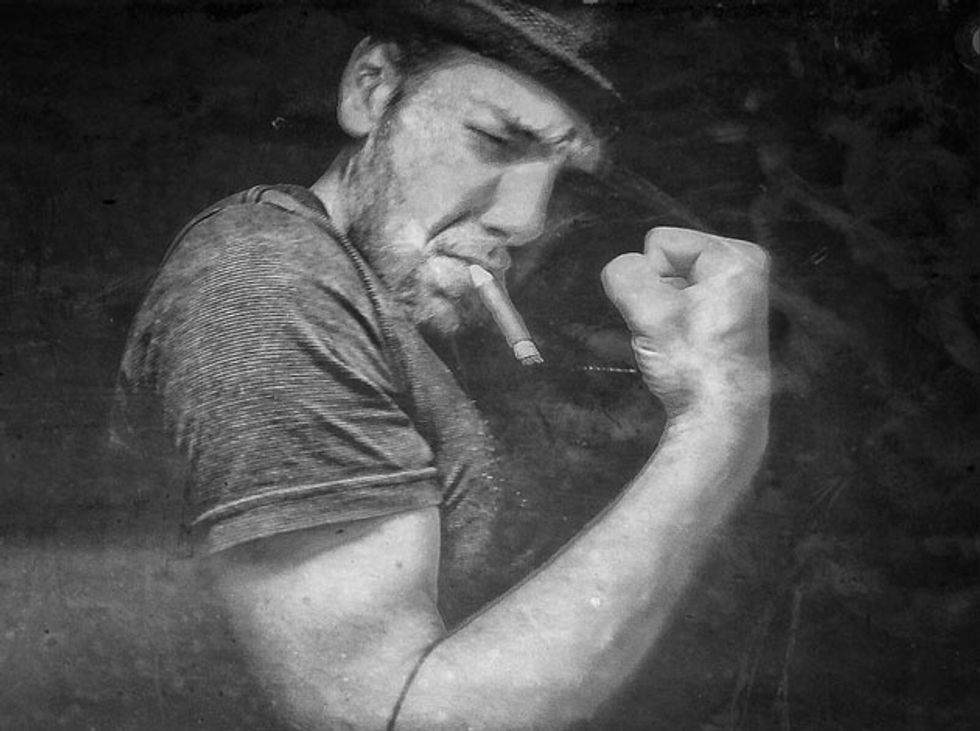
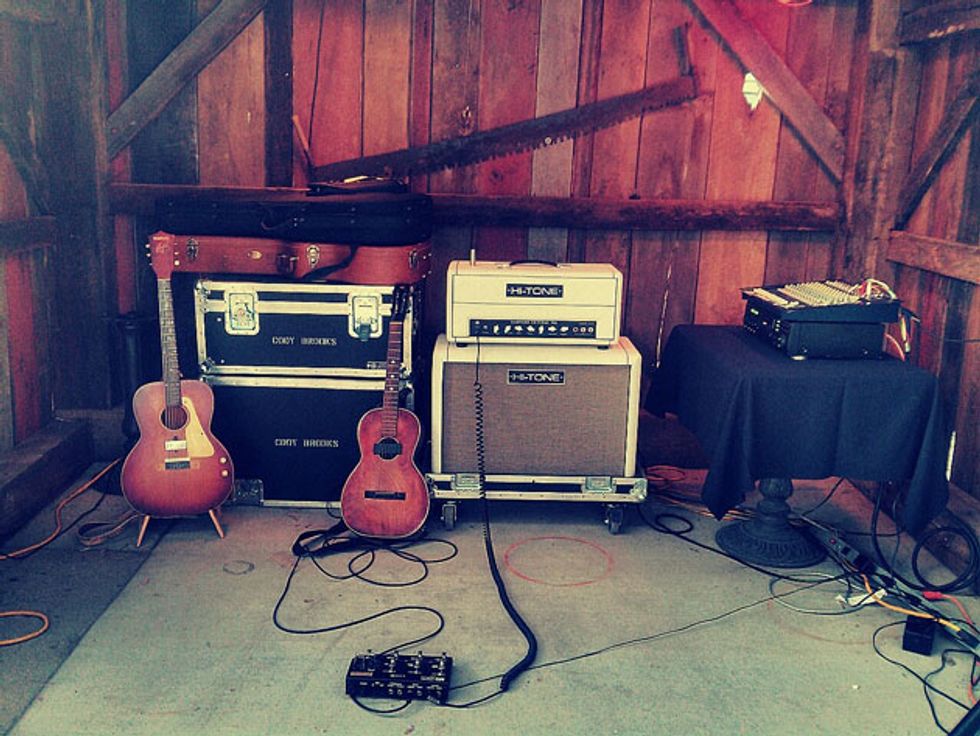
17. El Conjunto Nueva Ola’s Luzio Nava
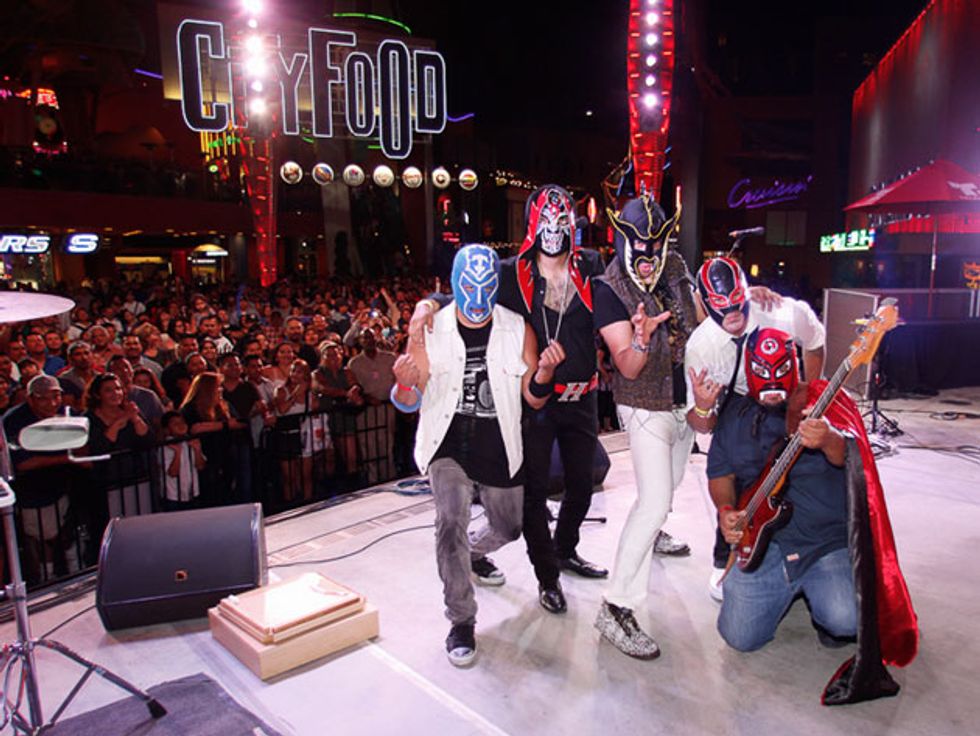
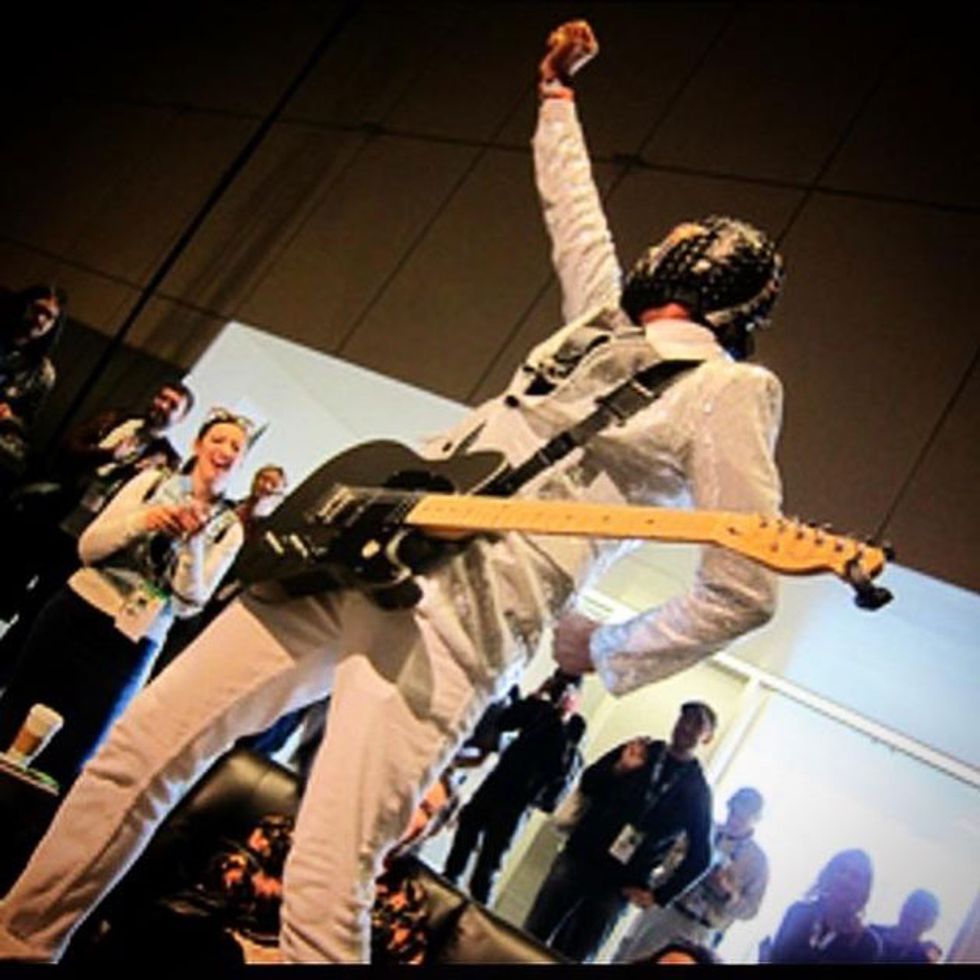
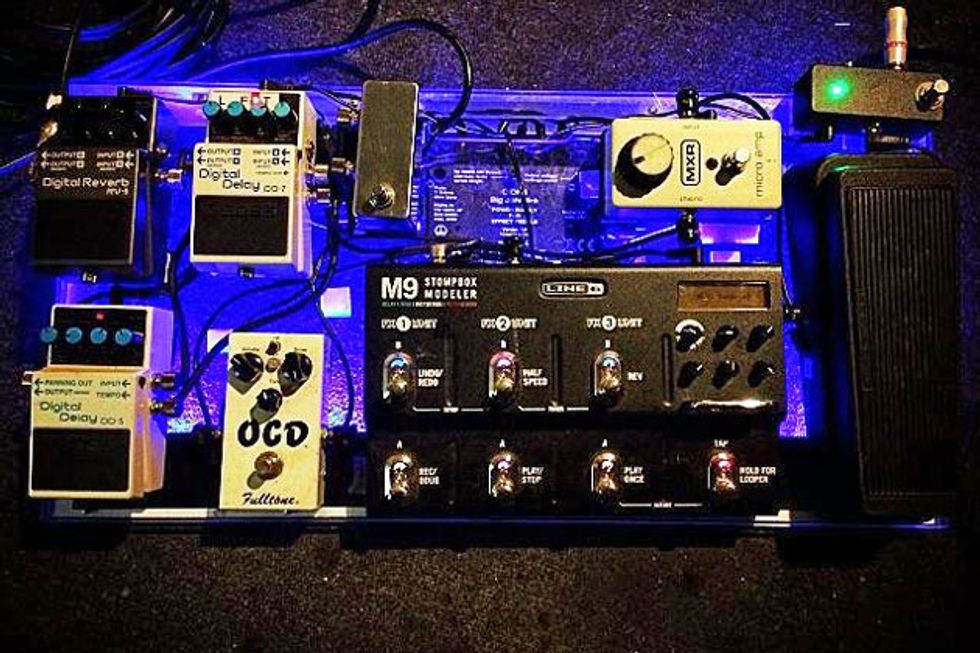
18. Buffalo Sunn
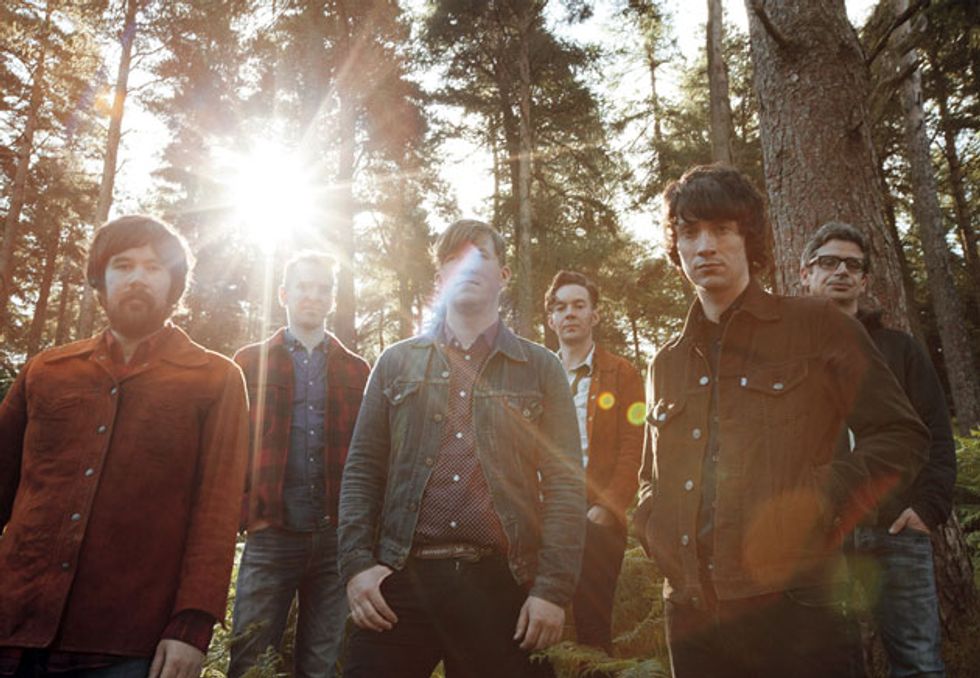
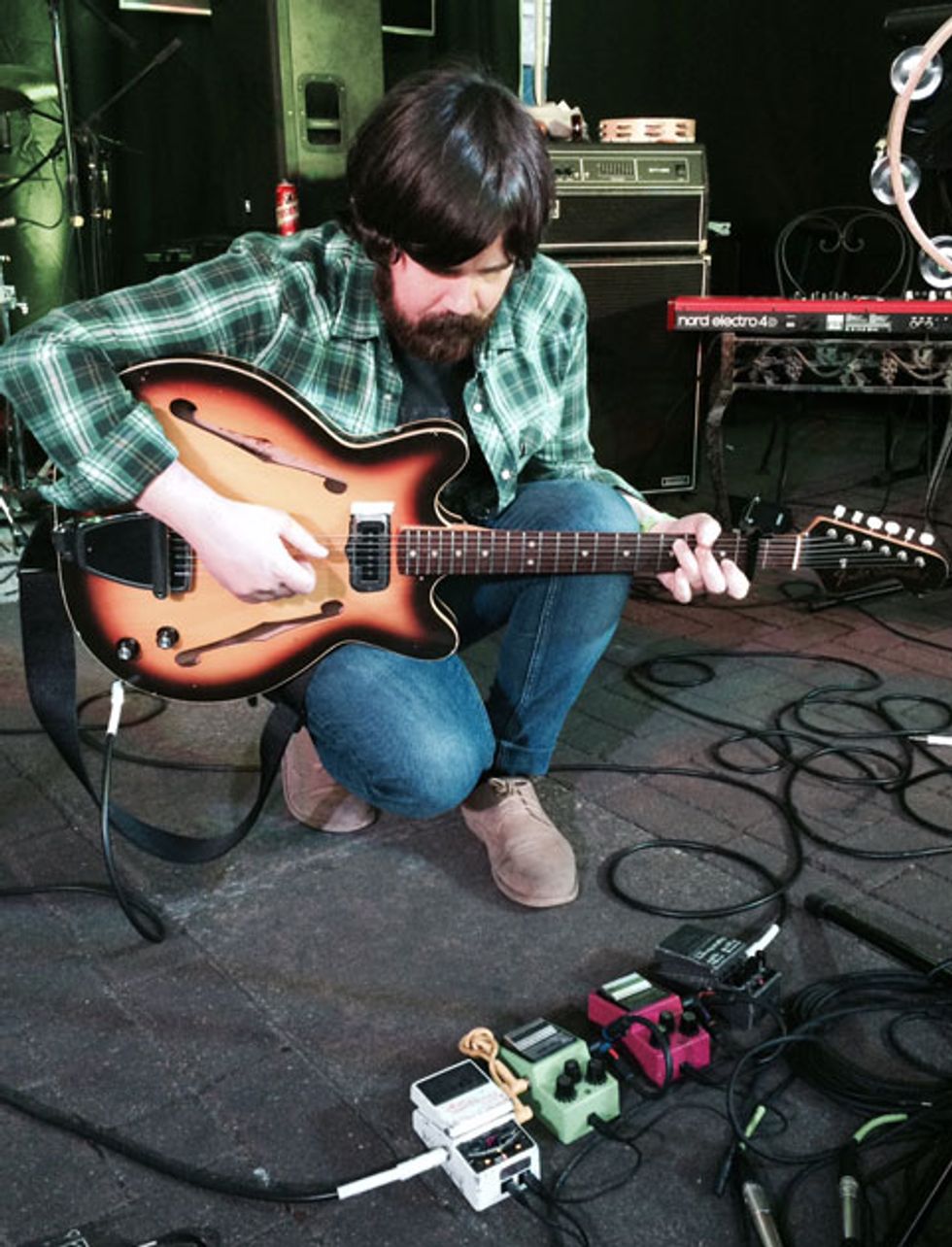
“For pedals, I really only use a Boss RV-5 Digital Reverb, an Ibanez AD9 Analog Delay, and an old Ibanez TS9 Tube Screamer. I’m a simple kind of guitar man.”
Patrick McHugh’s Gear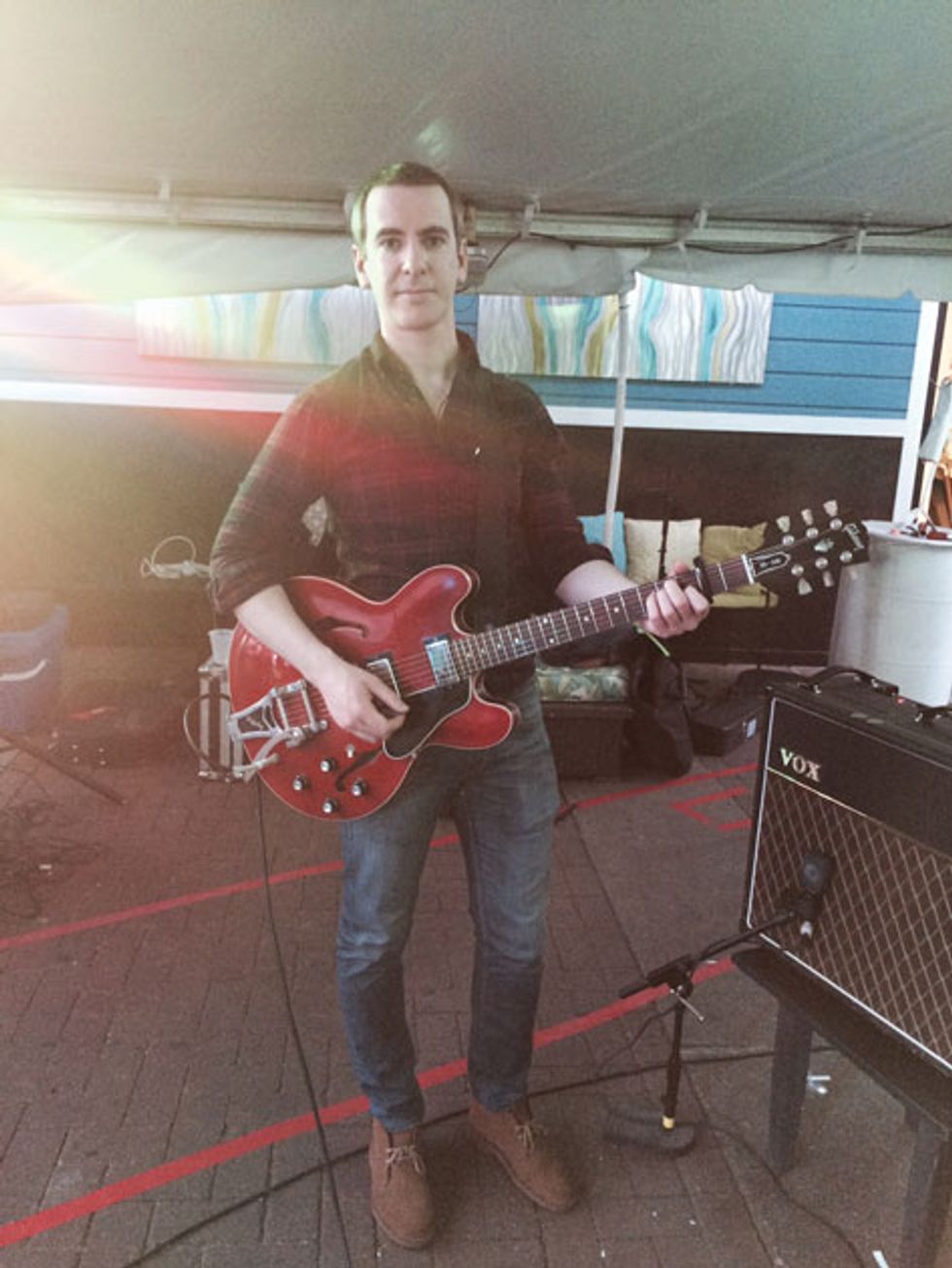
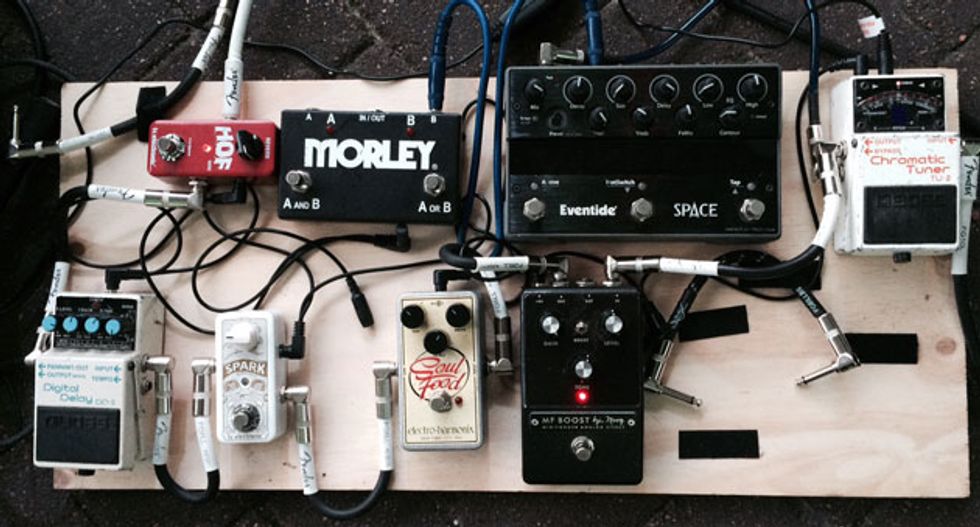
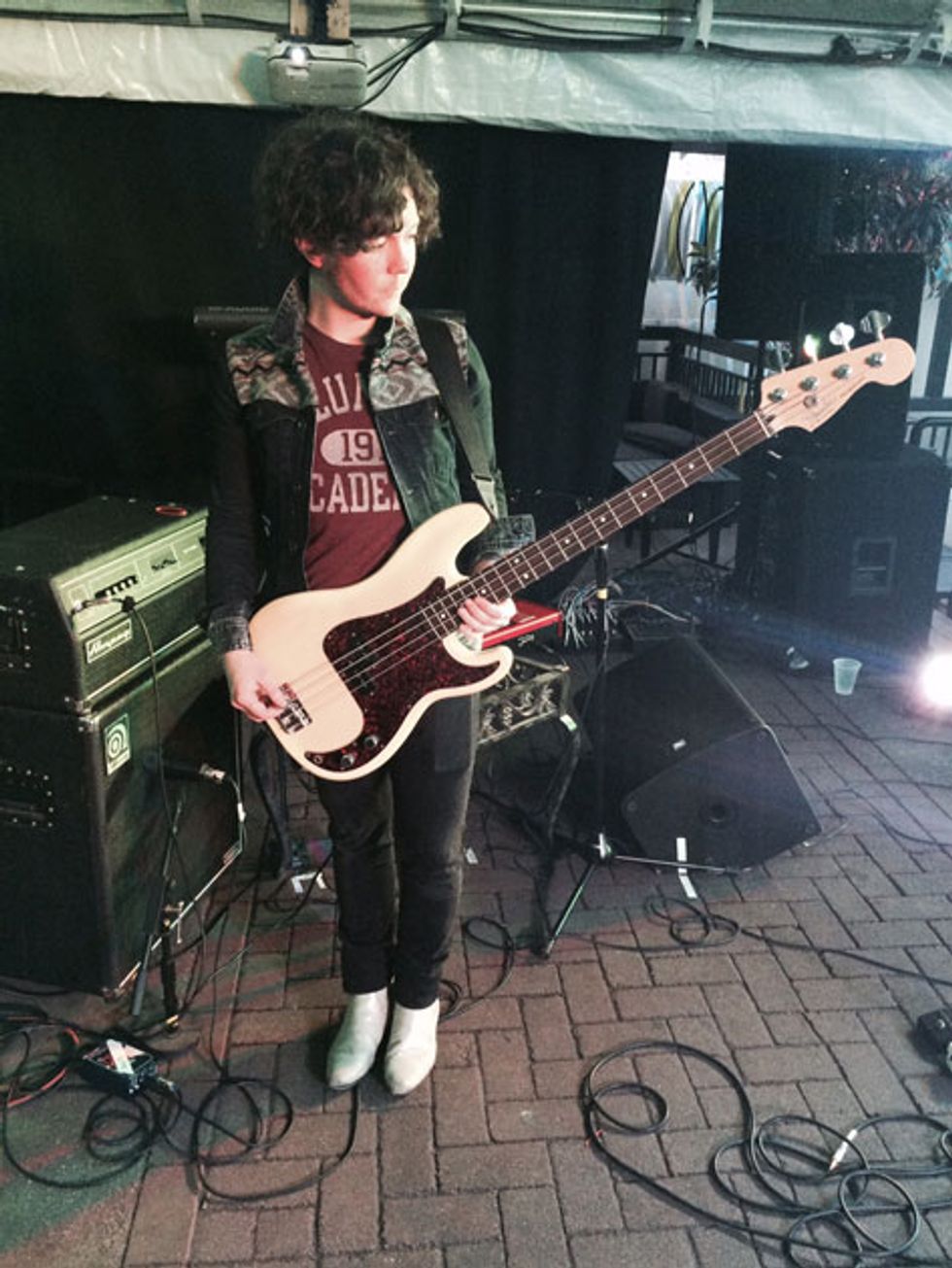
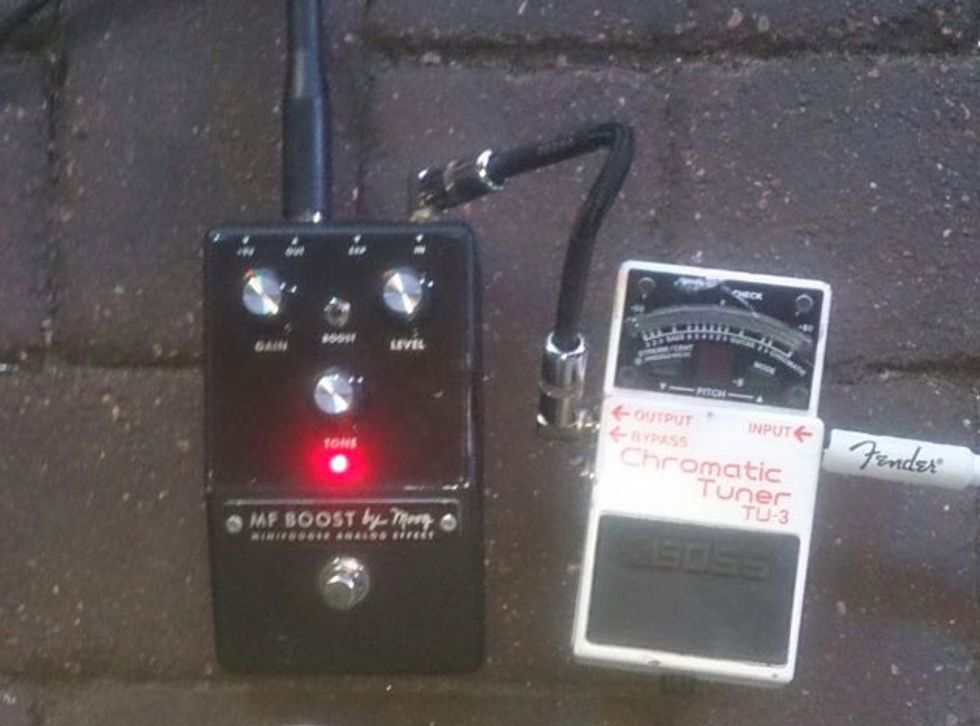
19. Victorian Halls
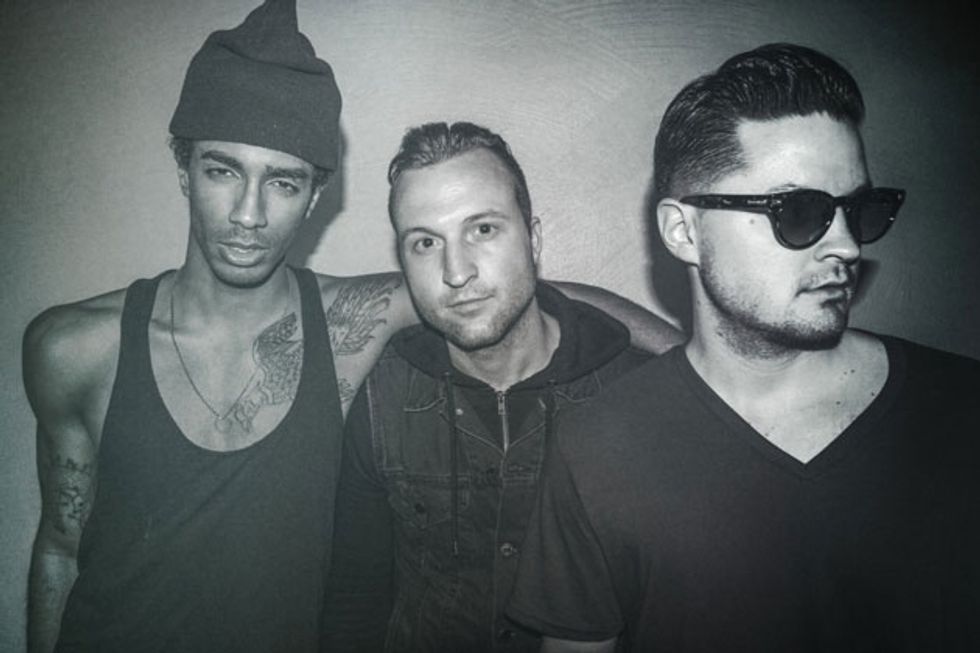
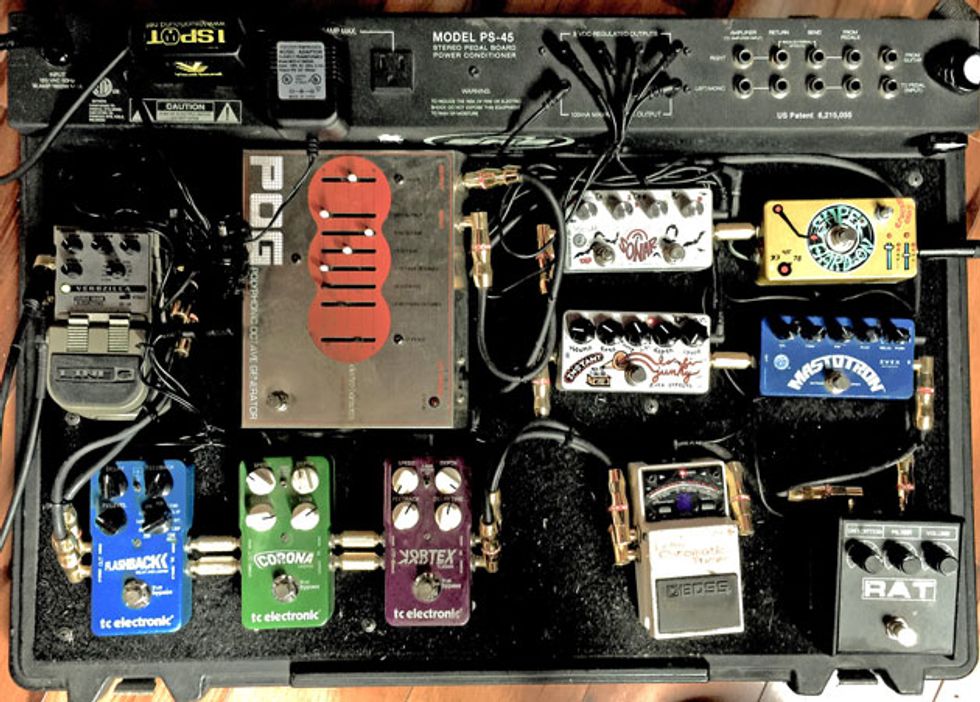
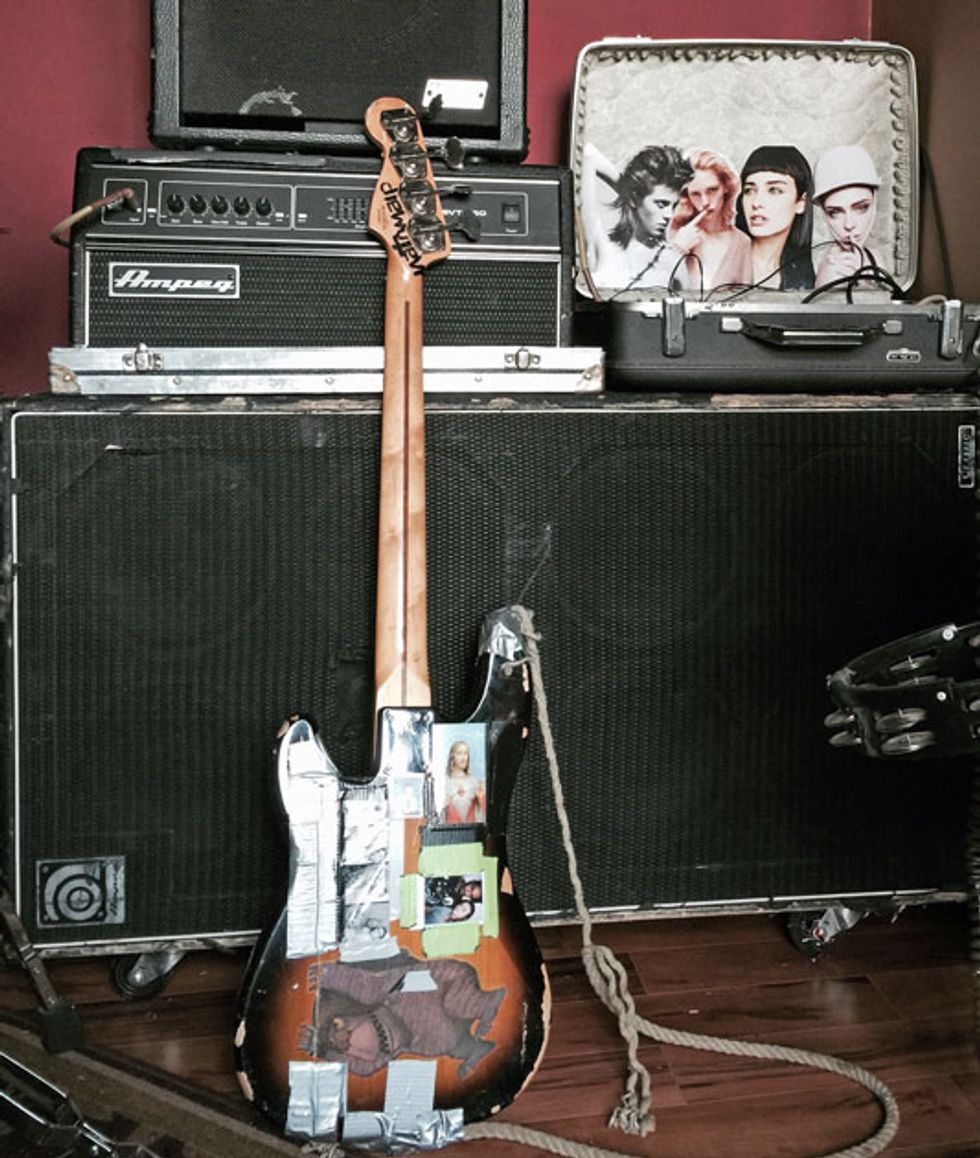
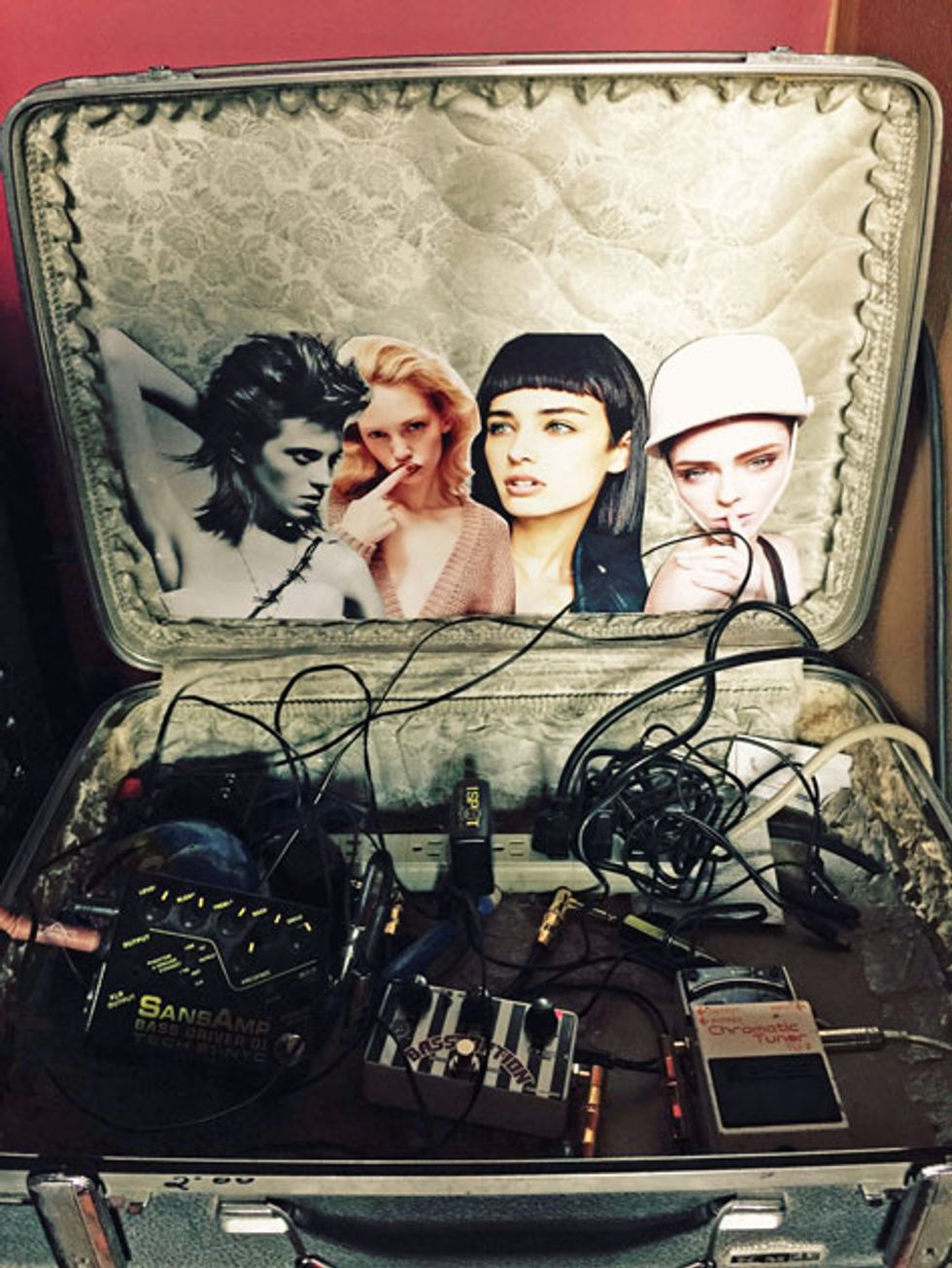
20. Ruby the Hatchet’s Johnny Scarps
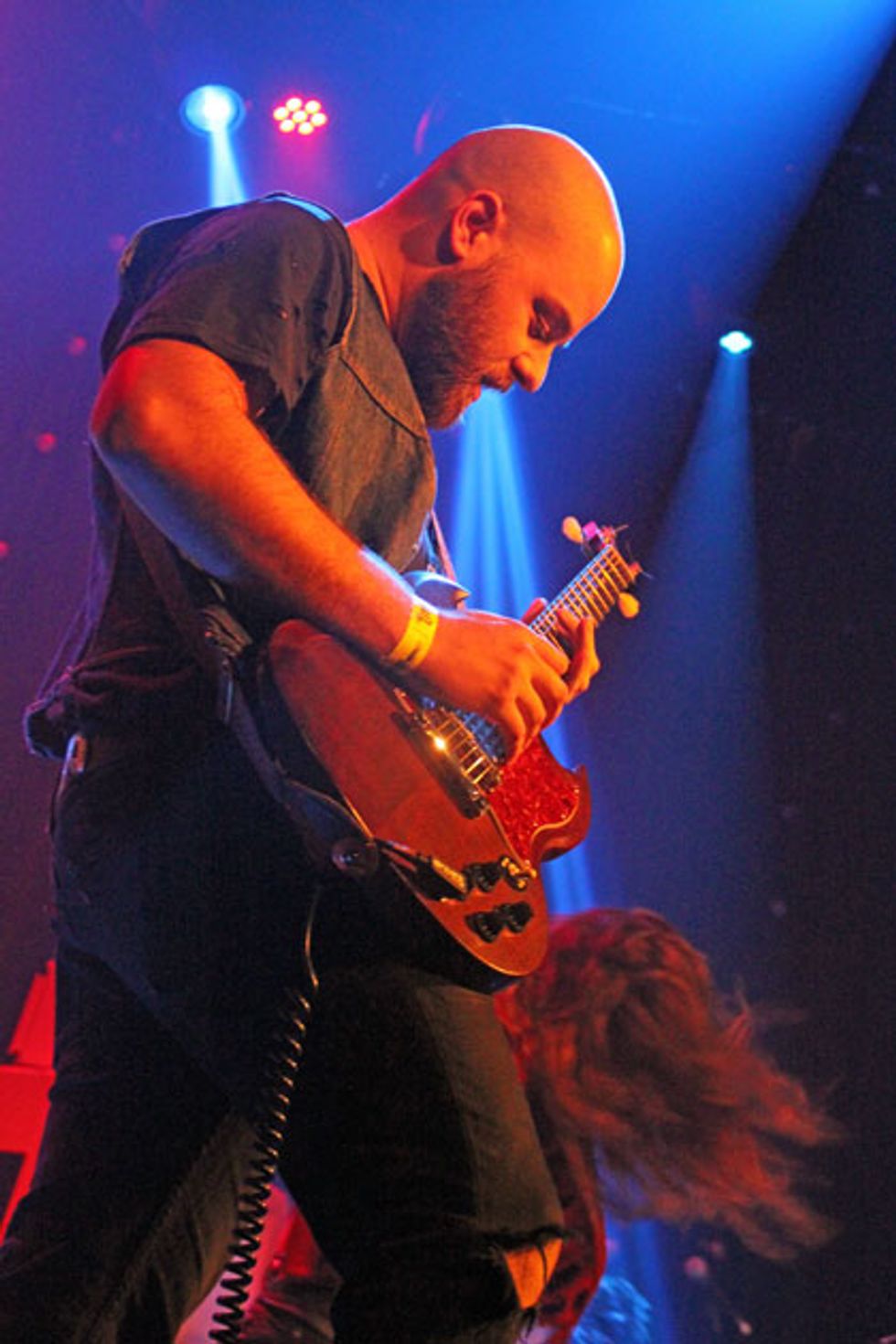
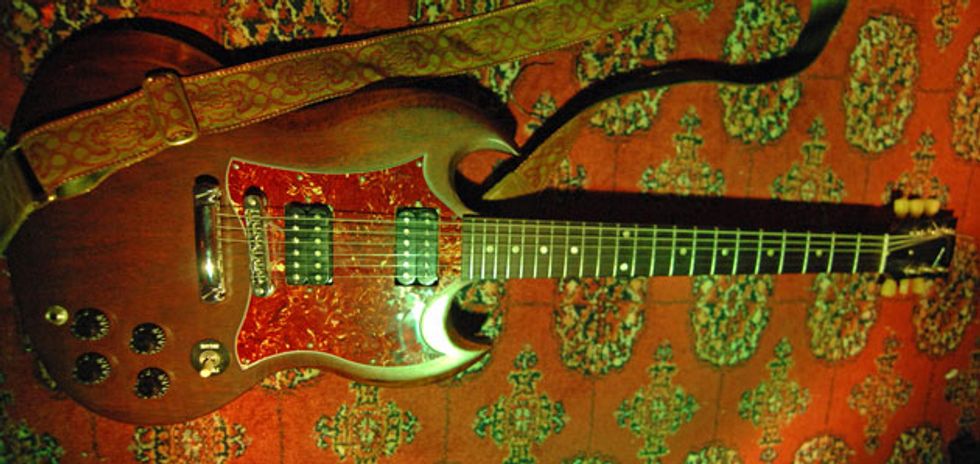
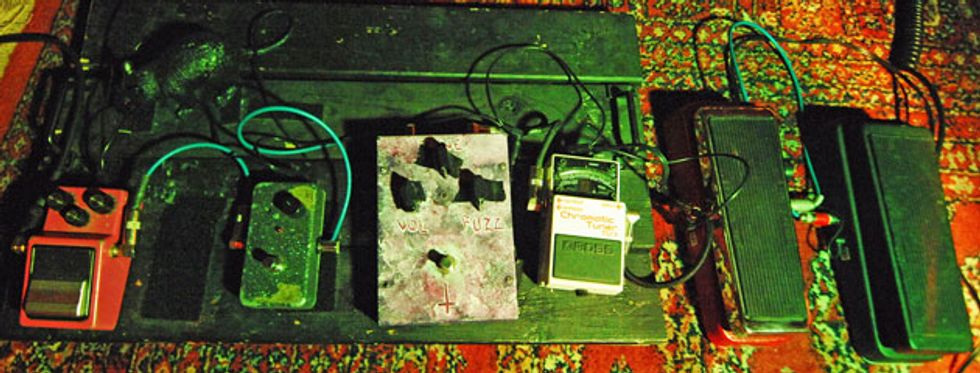
21. People’s Blues of Richmond’s Tim Beavers
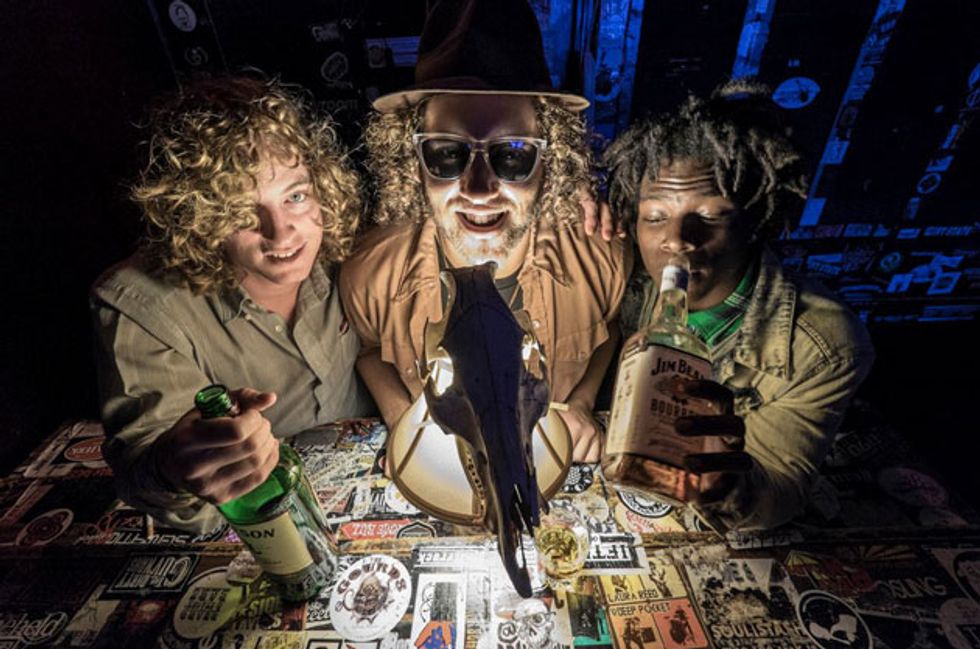
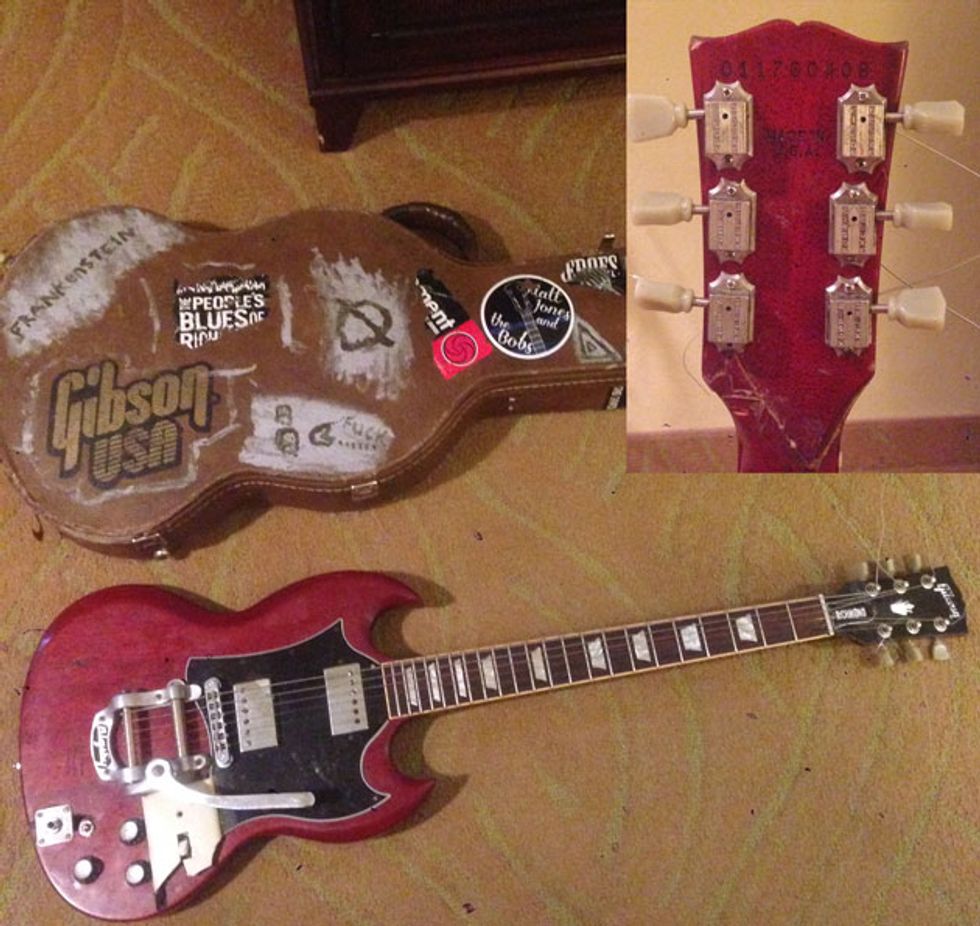
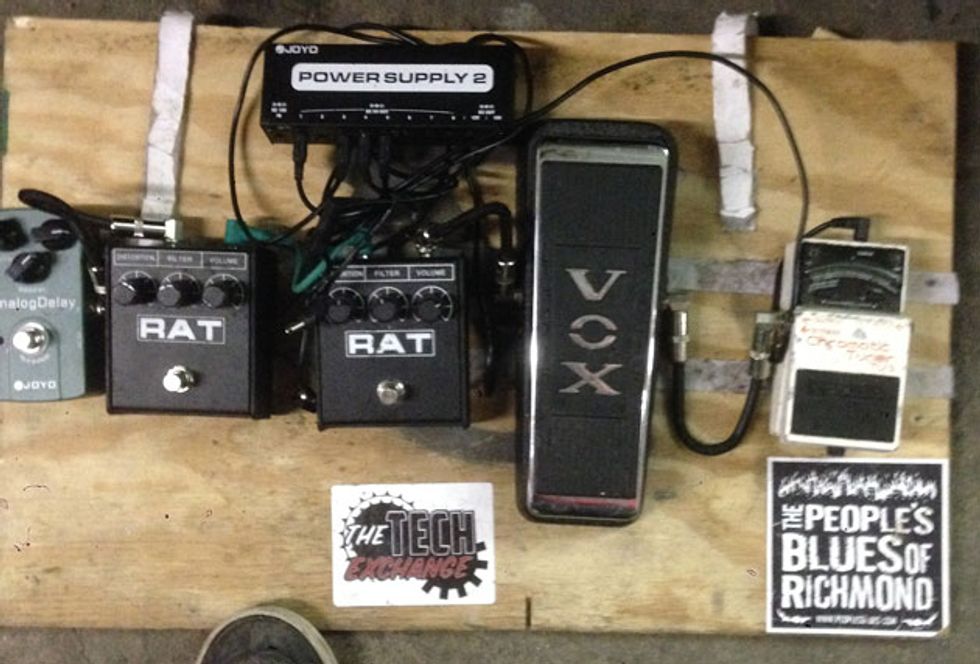
“I am very appreciative of all the use and abuse my equipment has put up with from me. My gear is my family. I love, respect, and appreciate all of it ... and sometimes I have to beg it for forgiveness when I fuck it up.”
22. Speedy Ortiz’s Devin McKnight
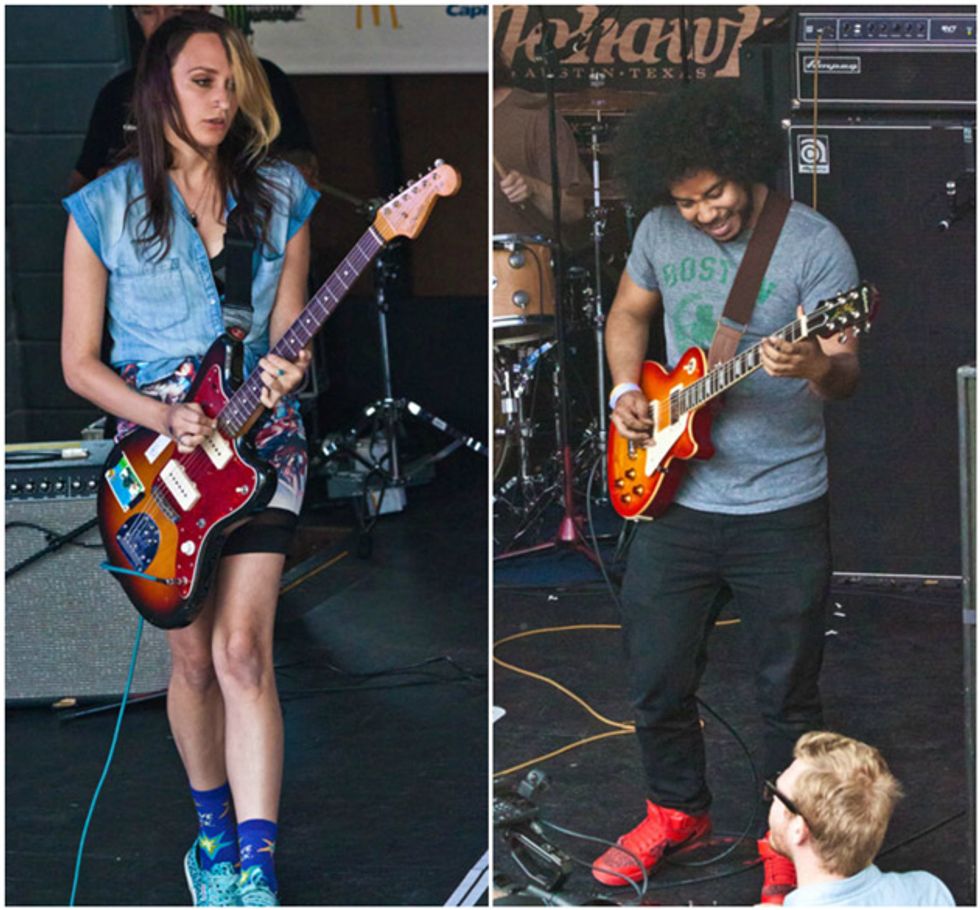
“My No. 1 guitar is generally a Fender Standard Fat Strat, but that was broken during our recent tour, so I’ve been using an Epiphone Limited Edition Les Paul Standard. Either one works though. I generally like a guitar that can take absurd amounts of gain and still sound good. Taking that amount of gain is especially important in Speedy because I need to get really loud and quiet in a split second.
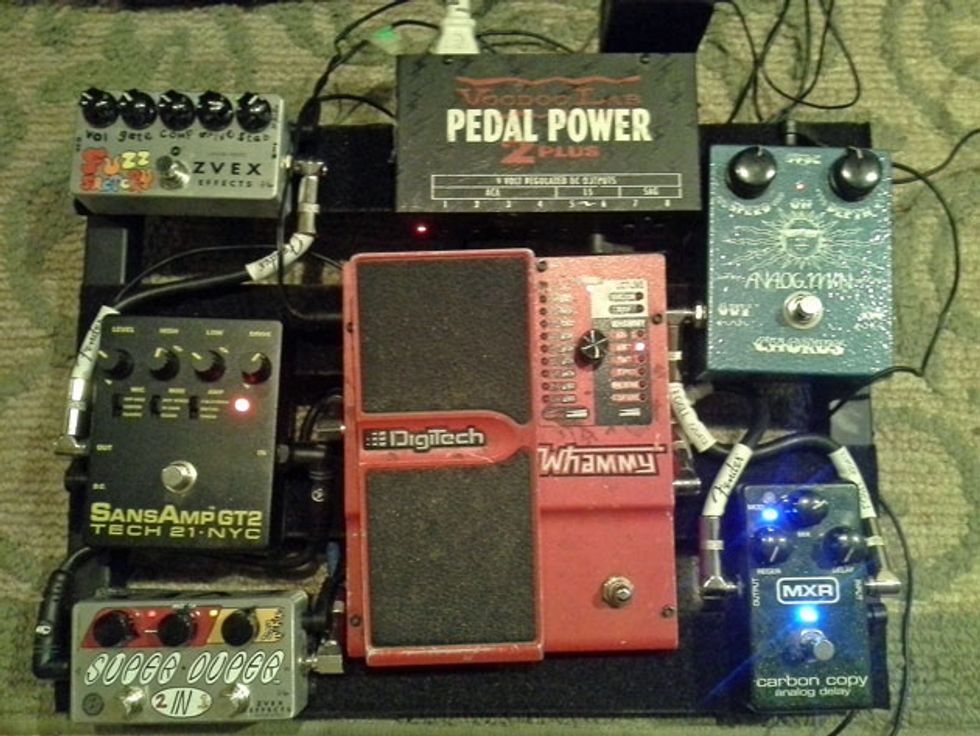
23. Torres
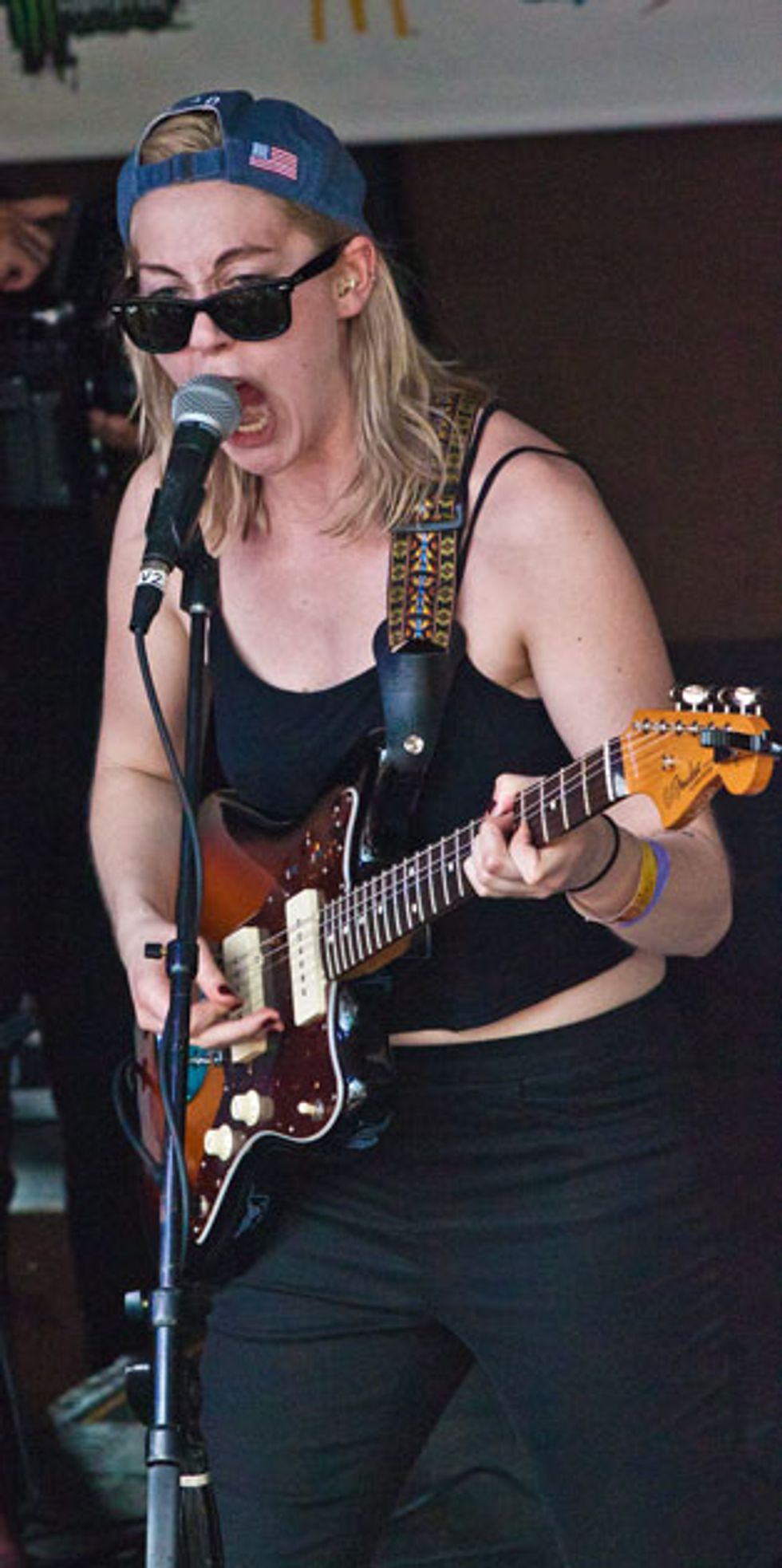
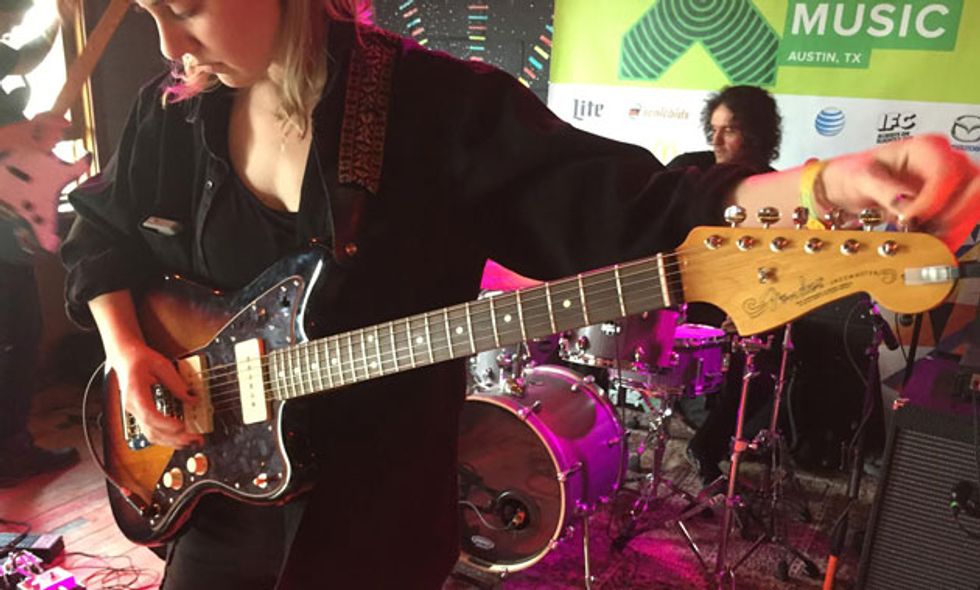
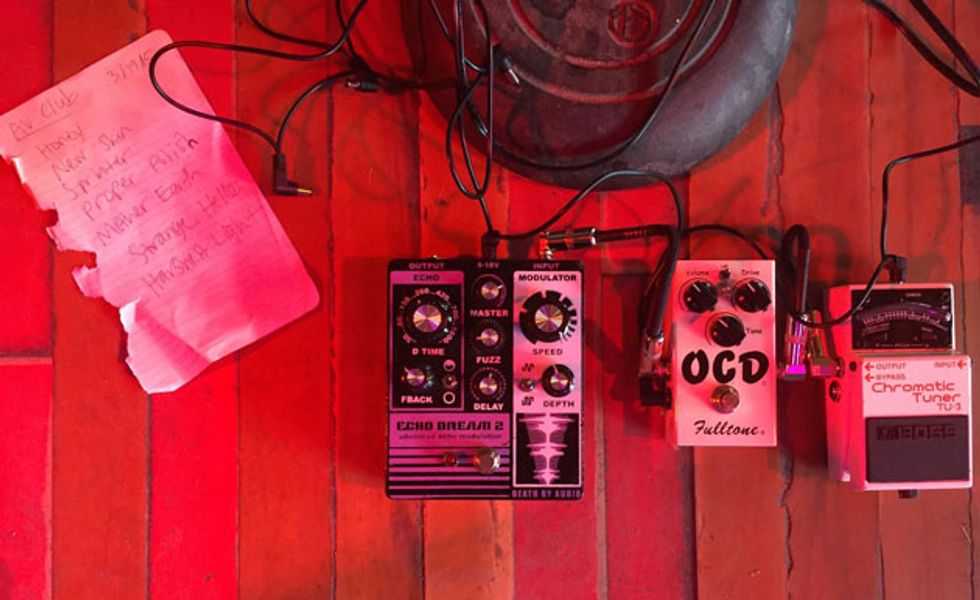
24. The Bright Light Social Hour
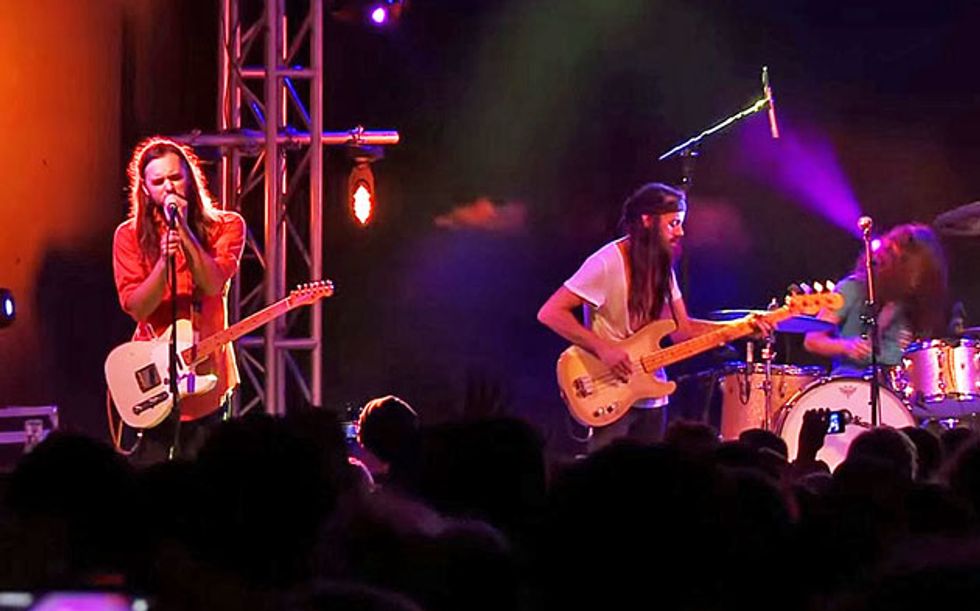
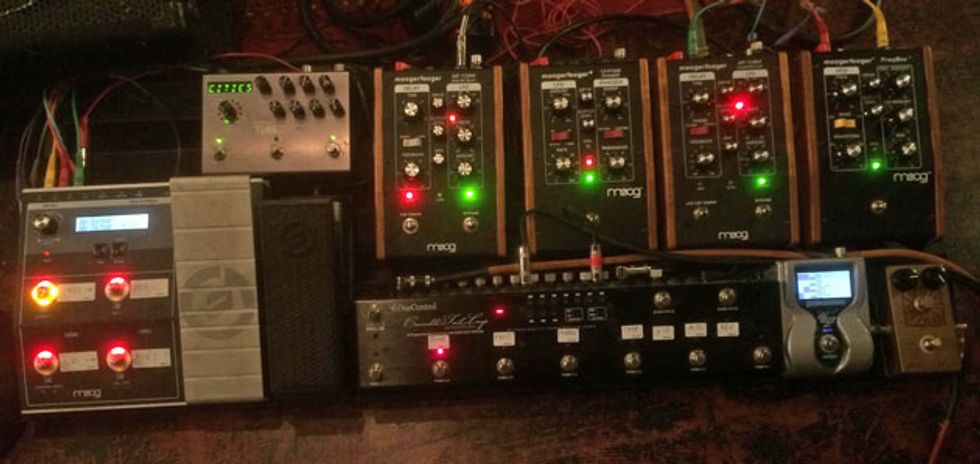
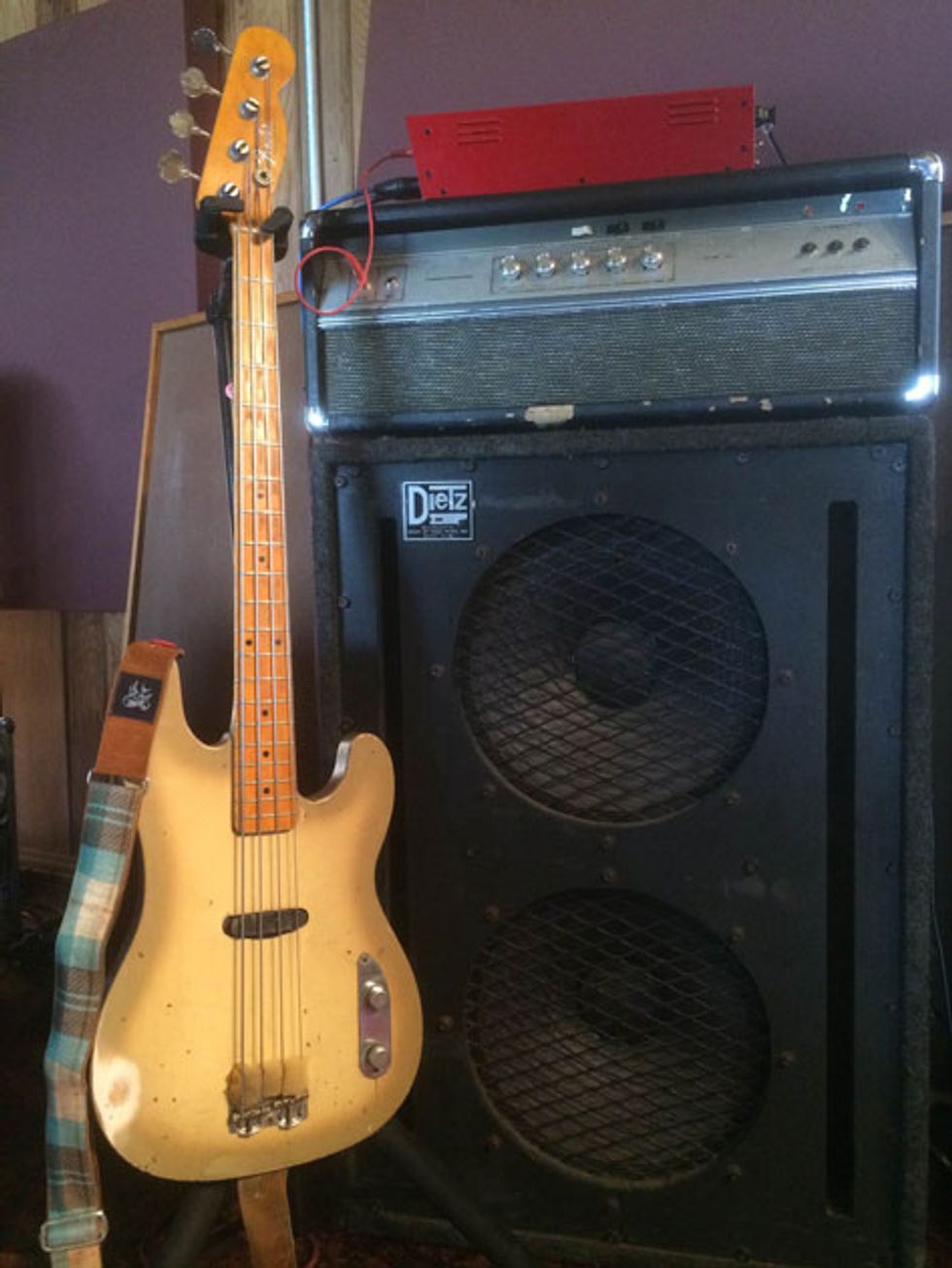
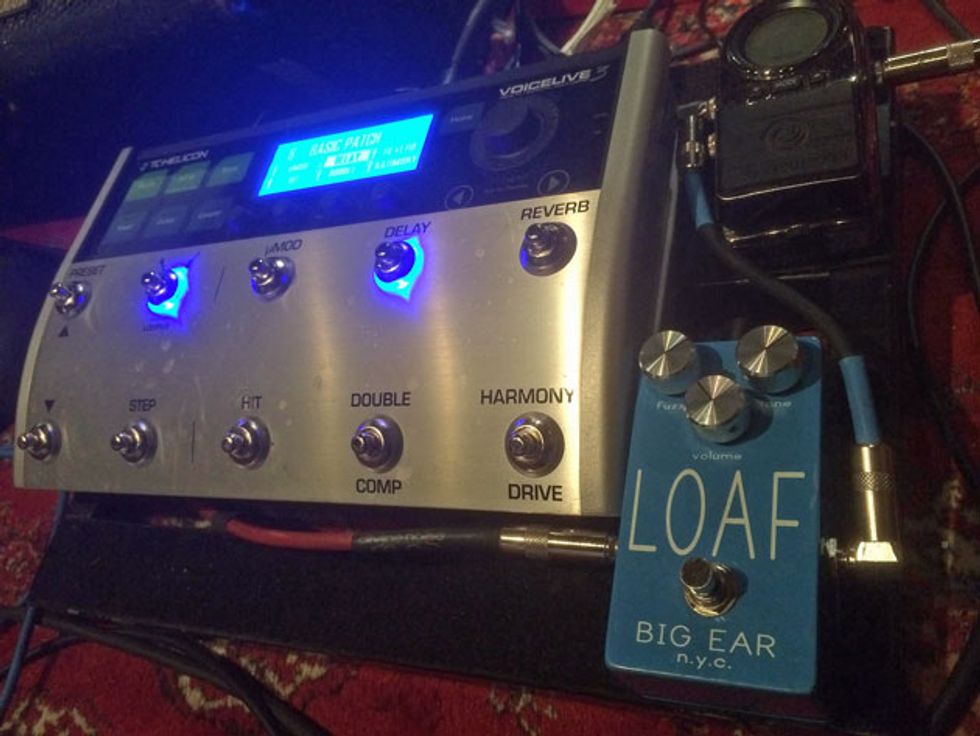







![Rig Rundown: Russian Circles’ Mike Sullivan [2025]](https://www.premierguitar.com/media-library/youtube.jpg?id=62303631&width=1245&height=700&quality=70&coordinates=0%2C0%2C0%2C0)

























